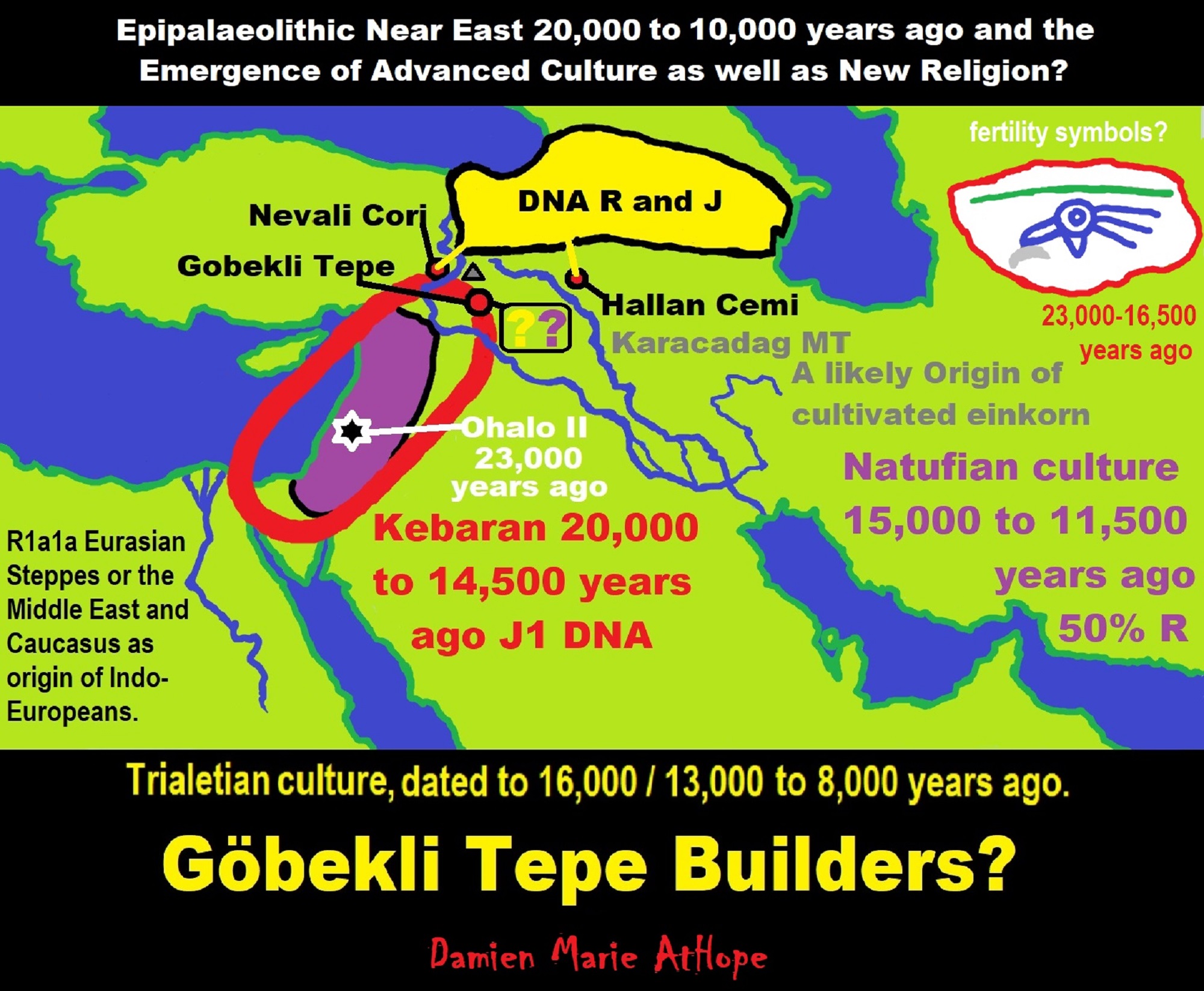
ref, ref, ref, ref, ref, ref, ref
Trialetian culture (16,000–8000 years ago) the Caucasus, Iran, and Turkey, likely involved in Göbekli Tepe. Migration 1?
Haplogroup R possible time of origin about 27,000 years in Central Asia, South Asia, or Siberia:
- Mal’ta–Buret’ culture (24,000-15,000 years ago)
- Afontova Gora culture (21,000-12,000 years ago)
- Trialetian culture (16,000–8000 years ago)
- Samara culture (7,000-6,500 years ago)
- Khvalynsk culture (7,000-6,500 years ago)
- Afanasievo culture (5,300-4,500 years ago)
- Yamna/Yamnaya Culture (5,300-4,500 years ago)
- Andronovo culture (4,000–2,900 years ago) ref
Trialetian sites
Caucasus and Transcaucasia:
- Edzani (Georgia)
- Chokh (Azerbaijan), layers E-C200
- Kotias Klde, layer B” ref
Eastern Anatolia:
- Hallan Çemi (from ca. 8.6-8.5k BC to 7.6-7.5k BCE)
- Nevali Çori shows some Trialetian admixture in a PPNB context” ref
Trialetian influences can also be found in:
- Cafer Höyük
- Boy Tepe” ref
Southeast of the Caspian Sea:
- Hotu (Iran)
- Ali Tepe (Iran) (from cal. 10,500 to 8,870 BCE)
- Belt Cave (Iran), layers 28-11 (the last remains date from ca. 6,000 BCE)
- Dam-Dam-Cheshme II (Turkmenistan), layers7,000-3,000 BCE)” ref
Trialetian peoples which I think we’re more male-centric and involved in the creation of Göbekli Tepe, from its start around Pre-Pottery Neolithic A (12,000 – 10,800 years ago) began with their influence and this is seen in animal deities many clearly male and the figures also being expressively male themed as well at first, and only around Pre-Pottery Neolithic B (10,800 – 8,500 years ago) or so it seems with what I am guessing is new Epigravettian peoples with a more female-centric style (reminiscent but less than the Gravettians known for Venus figurines) influence from migration into the region, to gain new themes that add a female element both with A totem pole seeming to express birth or something similar and graffiti of a woman either ready for sex or giving birth or both. and Other bare figures seem to show a similar body position reminiscent of the graffiti of a woman.
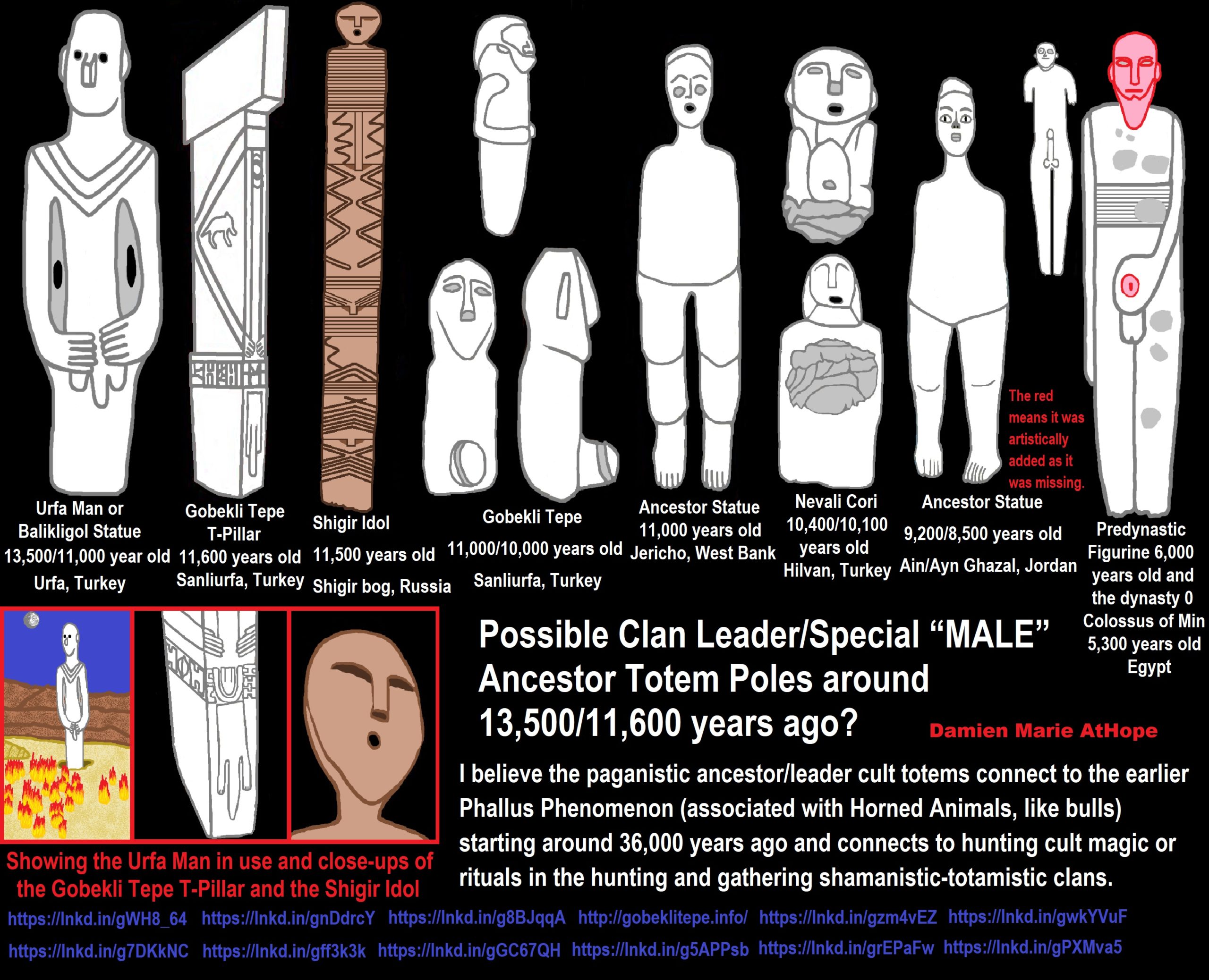
ref, ref, ref, ref, ref, ref, ref, ref, ref, ref, ref, ref, ref
I believe the paganistic ancestor/leader cult totems connect to the earlier Phallus Phenomenon (associated with Horned Animals, like bulls) starting around 36,000 years ago and connects to hunting cult magic or rituals in the hunting and gathering shamanistic-totamistic clans.
The Rise of Agriculture and Inequality
The hunter-gatherer egalitarian qualities were not present in early agricultural societies. Agriculture enables the production of food surpluses and this lead to hoarding as well as new inequality. ref
The rise of agriculture in Neolithic farming sowed the seeds of modern inequality at least 10,000 years ago and began the prehistoric shift towards cultivation in our preoccupation with hierarchy and the growth of power (elite, kings, and states) as well as inequality. ref
“When the First Farmers Arrived in Europe, Inequality Evolved. Forests gave way to fields, pushing hunter-gatherers to the margins—geographically and socially.” ref
“Beer making was an integral part of rituals and feasting, a social regulatory mechanism in hierarchical societies,” said Stanford’s Wang. “We report here of the earliest archaeological evidence for cereal-based beer brewing by a semi-sedentary, foraging people.” ref


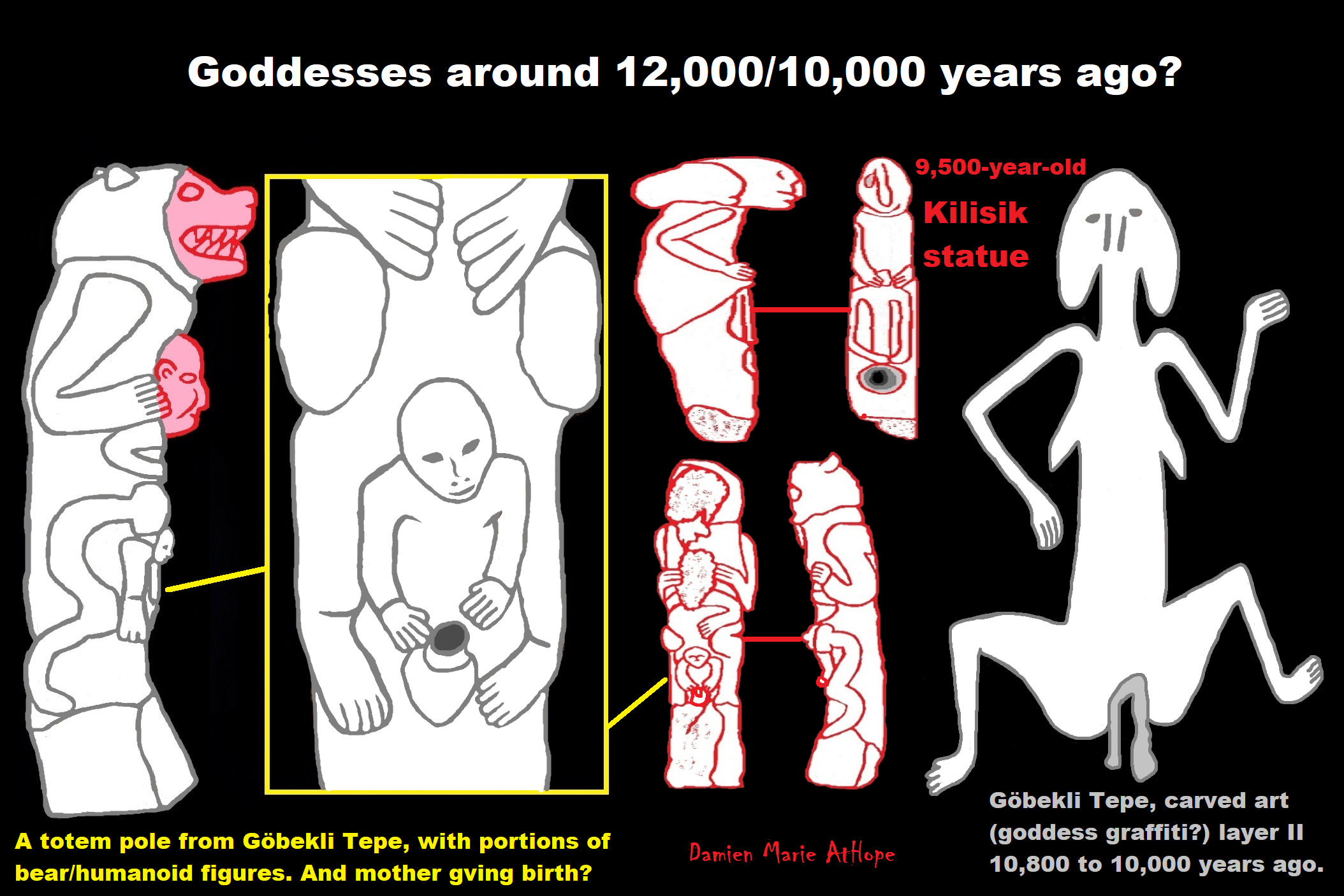
To me, the “male god” seems to have either emerged or become prominent around 7,000 years ago, whereas the now favored monotheism “male god” is more like 4,000 years ago or so. To me, the “female goddess” seems to have either emerged or become prominent around 11,000-10,000 years ago or so, losing the majority of its once prominence around 2,000 years ago due largely to the now favored monotheism “male god” that grow in prominence after 4,000 years ago or so.
My Thought on the Evolution of Gods?
Animal protector deities from old totems/spirit animal beliefs come first to me, 13,000/12,000 years ago, then women as deities 11,000/10,000 years ago, then male gods around 7,000/8,000 years ago. Moralistic gods around 5,000/4,000 years ago, and monotheistic gods around 4,000/3,000 years ago.
Göbekli Tepe Mother Goddess?
Found in Southeastern Turkey and is dated to around 11,500 – 11,000 years ago. It is a relief of a naked woman in a crouched position (birthing mother or sex goddess position may hold a dualism in its meaning). This ritual site includes two phases of use believed to be of a social or ritual nature dating back to the 10th–8th millennium BCE. During the first phase, belonging to the Pre-Pottery Neolithic A (PPNA), circles of massive T-shaped stone pillars that are the world’s oldest known megaliths. More than 200 pillars in about 20 circles are currently known through geophysical surveys. Each pillar has a height of up to 6 m (20 ft) and weighs up to 10 tons. They are fitted into sockets that were hewn out of the bedrock. ref
In the second phase, belonging to the Pre-Pottery Neolithic B (PPNB), the erected pillars are smaller and stood in rectangular rooms with floors of polished lime. The site was abandoned after the PPNB. Younger structures date to classical times. The details of the structure’s function remain a mystery. It has been hypothesized that the site was a sanctuary where people from a wide region periodically congregated, not a settlement. Nevalı Çori, held similar structures as Göbekli Tepe, where there was unearthed the first of the huge T-shaped pillars. ref
At Two taller pillars stand facing one another at the center of each circle. Whether the circles were provided with a roof is uncertain. Stone benches designed for sitting are found in the interior. Many of the pillars are decorated with abstract, enigmatic pictograms and carved animal reliefs. The pictograms may represent commonly understood sacred symbols, as known from Neolithic cave paintings elsewhere. The reliefs depict mammals such as lions, bulls, boars, foxes, gazelles and donkeys; snakes and other reptiles, arthropods such as insects and arachnids; and birds, particularly vultures. Vultures also feature prominently in the iconography of Çatalhöyük and Jericho. Few humanoid figures have appeared in the art at Göbekli Tepe. However, some of the T-shaped pillars have human arms carved on their lower half, suggesting to site excavator Schmidt that they are intended to represent the bodies of stylized humans (or perhaps gods). ref
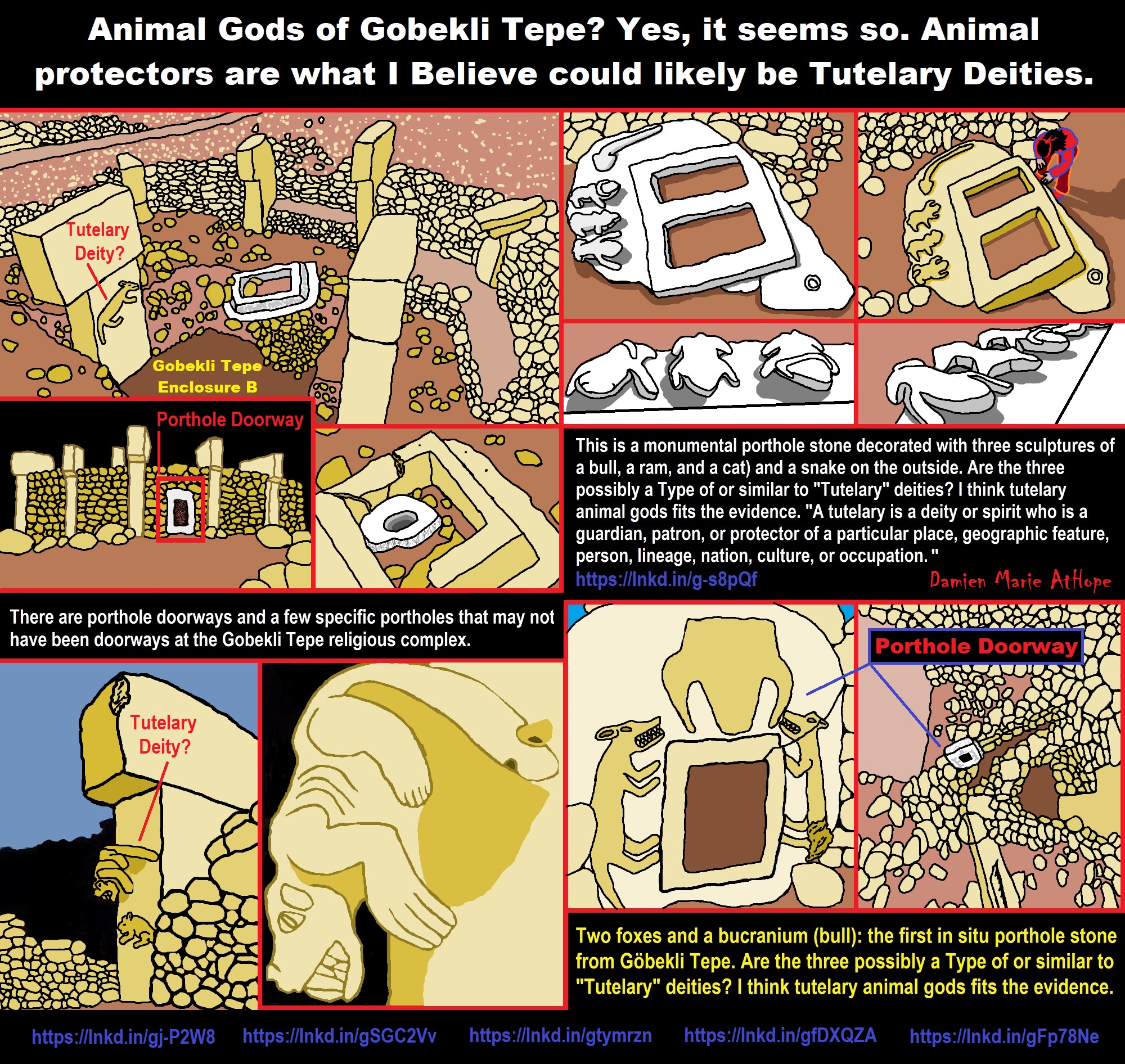
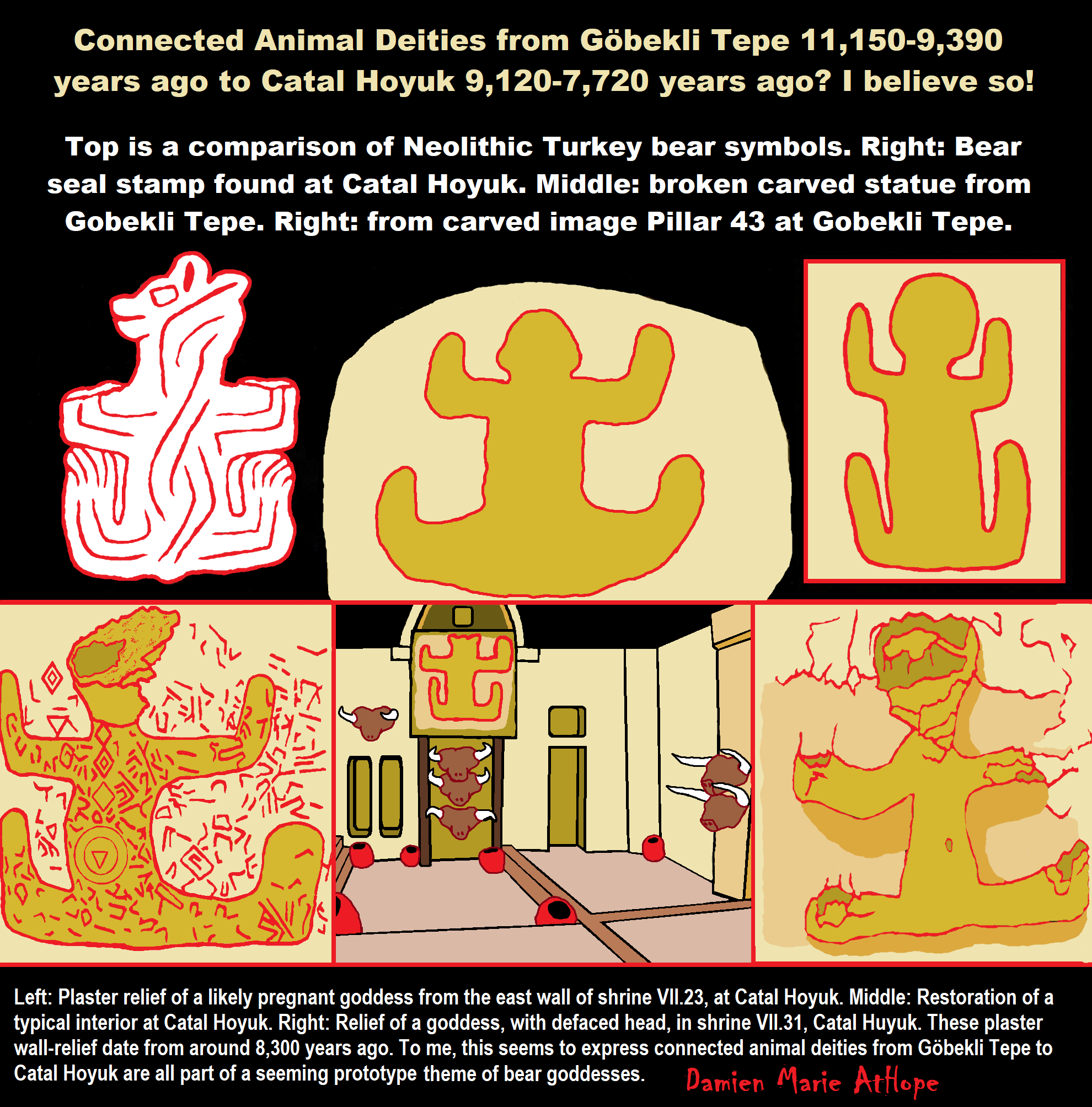
ref, ref, ref, ref, ref, ref, ref
Bear worship
“Bear worship (also known as the bear cult or arctolatry) is the religious practice of the worshipping of bears found in many North Eurasian ethnic religions such as among the Sami, Nivkh, Ainu, Basques, Germanic peoples, Slavs, and Finns. There are also a number of deities from Celtic Gaul and Britain associated with the bear, and the Dacians, Thracians, and Getians were noted to worship bears and annually celebrate the bear dance festival. The bear is featured on many totems throughout northern cultures that carve them. Bears were the most worshipped animals of Ancient Slavs. During pagan times, it was associated with the god Volos, the patron of domestic animals. Eastern Slavic folklore describes the bear as a totem personifying a male: father, husband, or a fiancé. Legends about turnskin bears appeared, it was believed that humans could be turned into bears for misbehavior.” ref
“Bears in Korean mythology, According to legend, Ungnyeo (literally “bear woman”) was a bear who turned into a woman, and gave birth to Dangun, the founder of the first Korean kingdom, Gojoseon. Bears were revered as motherly figures and as symbolic of patience. In Finnish paganism, the bear was considered a taboo animal and the word for “bear” (oksi) was a taboo word. Euphemisms such as mesikämmen “honey-hand” were used instead. Bear hunting and killing a bear was followed by a party called peijaiset with ceremony intended to show that the bear would be a “honored guest” instead of a slaughtered animal, and that its death was “accidental”, in order to not to anger the bear’s spirit. The skull of the bear was hung onto a tree, which was venerated as a totem.” ref
The bear festival is a religious festival celebrated by the indigenous Nivkh in Russia’s far east. A Nivkh shaman (ch’am) would preside over the Bear Festival, celebrated in the winter between January and February depending on the clan. Bears were captured and raised in a corral for several years by local women, treating the bear like a child. The bear is considered a sacred earthly manifestation of Nivkh ancestors and the gods in bear form. During the Festival, the bear is dressed in a specially made ceremonial costume and offered a banquet to take back to the realm of gods to show benevolence upon the clans. After the banquet, the bear is killed and eaten in an elaborate religious ceremony. The festival was arranged by relatives to honor the death of a kinsman. The bear’s spirit returns to the gods of the mountain ‘happy’ and rewards the Nivkh with bountiful forests. Generally, the Bear Festival was an inter-clan ceremony where a clan of wife-takers restored ties with a clan of wife-givers upon the broken link of the kinsman’s death. The Bear Festival was suppressed in the Soviet period; since then the festival has had a modest revival, albeit as a cultural rather than a religious ceremony.” ref
The Ainu people, who live on select islands in the Japanese archipelago, call the bear “kamuy” in their language, which translates to mean “god” similar to Kami. While many other animals are considered to be gods in the Ainu culture, the bear is the head of the gods. For the Ainu, when the gods visit the world of man, they don fur and claws and take on the physical appearance of an animal. Usually, however, when the term “kamuy” is used, it essentially means a bear. The Ainu people willingly and thankfully ate the bear as they believed that the disguise (the flesh and fur) of any god was a gift to the home that the god chose to visit. While on Earth – the world of man – the Ainu believed that the gods appeared in the form of animals. The gods had the capability of taking human form, but they only took this form in their home, the country of the gods, which is outside the world of man. To return a god back to his country, the people would sacrifice and eat the animal sending the god’s spirit away with civility. This ritual is called Omante and usually involves a deer or adult bear.” ref
“Kami (Japanese: are the deities, divinities, spirits, phenomena, or “holy powers”), that are venerated in the religion of Shinto. They can be elements of the landscape, forces of nature, or beings and the qualities that these beings express; they can also be the spirits of venerated dead people. Many kami are considered the ancient ancestors of entire clans (some ancestors became kami upon their death if they were able to embody the values and virtues of kami in life).” ref
“Omante occurred when the people sacrificed an adult bear, but when they caught a bear cub they performed a different ritual which is called Iomante, in the Ainu language, or Kumamatsuri in Japanese. Kumamatsuri translates to “bear festival” and Iomante means “sending off”. The event of Kumamatsuri began with the capture of a young bear cub. As if he was a child given by the gods, the cub was fed human food from a carved wooden platter and was treated better than Ainu children for they thought of him as a god. If the cub was too young and lacked the teeth to properly chew food, a nursing mother will let him suckle from her own breast. When the cub reaches 2–3 years of age, the cub is taken to the altar and then sacrificed. Usually, Kumamatsuri occurs in midwinter when the bear meat is the best from the added fat. The villagers will shoot it with both normal and ceremonial arrows, make offerings, dance, and pour wine on top of the cub corpse. The words of sending off for the bear god are then recited. This festival lasts for three days and three nights to properly return the bear god to his home.” ref
Bear Goddesses and Gods Across Ancient Cultures
“Gods and goddesses of the ancient world held a connection with certain animals. This is because our ancestors’ beliefs were animistic – they believed everything on earth had consciousness. Wildlife was sacred in ancient times. The bear is one of the most powerful and most feared of the animal kingdom. Dating back thousands of years, the people of Europe left their marks on cave walls—some of these drawings were of bears. Moreover, shamans have revered the bear for its power, but also for its motherhood qualities and healing abilities. Bear medicine is strong medicine. It’s no wonder ancient gods and goddesses were connected to the bear. Learn of the bear goddesses and a bear god here.” ref
The Greek Bear Goddesses
“The typical illustration of Artemis, Greek Goddess of the Hunt, depicts her with either a hunting dog or stag. However, one of Artemis’ most sacred animals was the bear. Artemis had domain over the forest and all wildlife within it. The bear was the largest and most powerful animal, and so Artemis found it to be a special animal. Any time a bear was killed by the Greeks, Artemis would lay a plague on the people as punishment. Artemis’ cult spread over Greece. In Brauron, young girls played she-bears in honor of Artemis and as a preparation for motherhood. They wore bear masks and acted wildly in worship of her. Artemis’ name is theorized to have meant bear-sanctuary. If we break it down—art is close to ark which means bear, and temis is close to temnis which means sanctuary. We will see in the next section how another Goddess’ name reflects this etymology.” ref
“Another close association between Artemis and bears is in the tale of one of Artemis’ followers named Callisto. Callisto was a nymph (demi-god nature spirit), and as followers of Artemis, women were charged to stay chaste and pure from men. Callisto was lured into having relations with Zeus, who impregnated her. When Artemis found out, she changed Callisto into a bear. Other versions say Athena was angered when Zeus impregnated the nymph and so she turned Callisto into a bear. The constellations Ursa Major and Ursa Minor (known to the Greeks as Arktos—bear) are said to be the soul remnants of Callisto and her son, and were placed in the sky by Zeus himself.” ref
Celtic Bear Goddess
“We don’t know a lot about Artio, the Bear Goddess of the ancient Celtic-Gauls, but we know she was intimately connected to bears. The few pieces of evidence we have of her cult’s existence were found in Switzerland and southern Germany. A bronze statue depicting Artio feeding a giant bear surfaced in Bern, Switzerland. Scholars say Artio feeds the bear with a bowl of fruit in her lap. But could it be the other way around? It seems to me the goddess is being confronted by the bear and she is not backing down. There was once a great tale about this encounter, I am sure; however, over time the lore of Artio has been lost. The inscription on the Bern statue translates to “for the goddess Artio”. As with Artemis’ name, there is a clear link to the bear in Artio’s name. Art translates to bear in Gaulish. Could Artio, the Bear Goddess of the Gauls, be the same goddess as the Greeks’ bear goddess Artemis?” ref
Hungarian Bear Goddess
“Much of what we know of the Hungarian Bear Goddess Ildiko has been lost in time, or perhaps is just not readily accessible by my research methods. However, according to the Encyclopedia of Spirits by Judika Iles, Ildiko was a goddess of the forest and wildlife. One of her most sacred animals was the bear. Ildiko was like Artemis – she was the goddess of the hunt but also a protector of forest animals. This is because of the need for balance—she guides the hunters but also protects animals in need of preservation or honor. Ildiko is a common name in Hungary with a Germanic origin meaning “warrior”. We can see how a warrior goddess would also be keen of bears—power, wisdom, and ferocity.” ref
Finnish Bear Goddess
“Above all, Mielikki is a healing goddess of Finland. She is associated with the woods and with wildlife, just as Artemis and Ildiko, but her main attribute is her healing abilities. She heals the animals when they are sick or wounded. This corresponds directly with the medicine of the bear. Shamans know bears to be healers, and so Mielikki is like the bear in this way. Mielikki is one of the bear goddesses who had a part in the creation of the bear. The story goes that Mielikki left earth and traveled into space, past the moon, in search of the materials with which to make the perfect animal. She returned and stitched together the materials from the heavens to make the bear. The bear is Mielikki’s favorite animal, above all. The tale of Mielikki going into space to find the materials to make the bear correlates nicely with the tales of the other Bear Goddesses Artemis, Callisto, and Zeus putting Callisto into the sky to make the Ursa Major and Minor constellations. There is an asteroid and a mountain on the planet Venus named for Mielikki.” ref
Slavs and the bear worship
“Bear was one of the most worshipped animals among the ancient Slavic tribes. It was connected to the god Volos, who was the protector of animals and wilderness. In Slavic folklore, the bear is usually depicted as a male, either as a father, husband or groom.” ref
Norse or Germanic pagans Odin: The All-Father and Bear God
“Odin is a popular god among Norse and Germanic pagans and his cult has spread to nearly every part of the modern world. He is known as the All-Father, the One-Eyed, and the terrifying one. He is a wise, yet powerful god and knows how to win a battle. Because of this, warriors and magicians of ancient times sought Odin for his knowledge and ferocity. When depicted, he is usually illustrated as an old man with white hair and beard, cloaked, and carrying a staff. One of his eyes is missing, a sacrifice Odin made to tap into the wisdom of the well of Urðr. Odin is almost always flanked by two of his totem animals—ravens and wolves. However, some claim Odin may also be guarded by two great bears. I’ve yet to find solid evidence of this claim; however, this could be in part because of Odin’s association with the berserkers (shaman warriors) who often wore the pelts of bears. Either way, a god of war, wisdom, healing, and trickery such as Odin would be well received as a friend of the bear.” ref

“Mal’ta–Buret’ culture Mal’taboy remains known by the abbreviation MA-1 is the only known example of basal Y-DNA R* (R-M207*) – that is, the only member of haplogroup R* that did not belong to haplogroups R1, R2 or secondary subclades represents descent from the people similar to Ancient North Eurasians (ANE) or a population closely related to them were important genetic contributors to Native Americans, Siberians, Europeans, Caucasians, Central Asians, with smaller contributions to Middle Easterners and some East Asians.” ref
“In archaeogenetics, the term Ancient North Eurasian (often abbreviated as ANE) is the name given to a West-Eurasian ancestral component that represents a lineage ancestral to the people of the Mal’ta–Buret’ culture and populations closely related to them, such as from Afontova Gora and the Yana Rhinoceros Horn Site, and populations descended from them. The ANE lineage is defined by association with the MA-1, or “Mal’ta boy“, the remains of an individual who lived during the Last Glacial Maximum, 24,000 years ago in central Siberia. ANE ancestry has spread throughout Eurasia and the Americas in various migrations since the Upper Paleolithic, and more than half of the world’s population today derives between 5 to 40% of their genomes from the Ancient North Eurasians. Significant ANE ancestry can be found in the indigenous peoples of the Americas, as well as in regions of Europe, South Asia, Central Asia, and Siberia. It has been suggested that their mythology may have included a narrative, found in both Indo-European and some Native American fables, in which a dog guards the path to the afterlife.” ref
“Migration from Siberia behind the formation of Göbeklitepe: Expert states. People who migrated from Siberia formed the Göbeklitepe, and those in Göbeklitepe migrated in five other ways to spread to the world, said experts about the 12,000-year-old Neolithic archaeological site in the southwestern province of Şanlıurfa.“ The upper paleolithic migrations between Siberia and the Near East is a process that has been confirmed by material culture documents,” he said.” ref
“Semih Güneri, a retired professor from Caucasia and Central Asia Archaeology Research Center of Dokuz Eylül University, and his colleague, Professor Ekaterine Lipnina, presented the Siberia-Göbeklitepe hypothesis they have developed in recent years at the congress held in Istanbul between June 11 and 13. There was a migration that started from Siberia 30,000 years ago and spread to all of Asia and then to Eastern and Northern Europe, Güneri said at the international congress.” ref
“The relationship of Göbeklitepe high culture with the carriers of Siberian microblade stone tool technology is no longer a secret,” he said while emphasizing that the most important branch of the migrations extended to the Near East. “The results of the genetic analyzes of Iraq’s Zagros region confirm the traces of the Siberian/North Asian indigenous people, who arrived at Zagros via the Central Asian mountainous corridor and met with the Göbeklitepe culture via Northern Iraq,” he added.” ref
“Emphasizing that the stone tool technology was transported approximately 7,000 kilometers from east to west, he said, “It is not clear whether this technology is transmitted directly to long distances by people speaking the Turkish language at the earliest, or it travels this long-distance through using way stations.” According to the archaeological documents, it is known that the Siberian people had reached the Zagros region, he said. “There seems to be a relationship between Siberian hunter-gatherers and native Zagros hunter-gatherers,” Güneri said, adding that the results of genetic studies show that Siberian people reached as far as the Zagros.” ref
“There were three waves of migration of Turkish tribes from the Southern Siberia to Europe,” said Osman Karatay, a professor from Ege University. He added that most of the groups in the third wave, which took place between 2600-2400 BCE, assimilated and entered the Germanic tribes and that there was a genetic kinship between their tribes and the Turks. The professor also pointed out that there are indications that there is a technology and tool transfer from Siberia to the Göbeklitepe region and that it is not known whether people came, and if any, whether they were Turkish.” ref
“Around 12,000 years ago, there would be no ‘Turks’ as we know it today. However, there may have been tribes that we could call our ‘common ancestors,’” he added. “Talking about 30,000 years ago, it is impossible to identify and classify nations in today’s terms,” said Murat Öztürk, associate professor from İnönü University. He also said that it is not possible to determine who came to where during the migrations that were accepted to have been made thousands of years ago from Siberia. On the other hand, Mehmet Özdoğan, an academic from Istanbul University, has an idea of where “the people of Göbeklitepe migrated to.” ref
“According to Özdoğan, “the people of Göbeklitepe turned into farmers, and they could not stand the pressure of the overwhelming clergy and started to migrate to five ways.” “Migrations take place primarily in groups. One of the five routes extends to the Caucasus, another from Iran to Central Asia, the Mediterranean coast to Spain, Thrace and [the northwestern province of] Kırklareli to Europe and England, and one route is to Istanbul via [Istanbul’s neighboring province of] Sakarya and stops,” Özdoğan said. In a very short time after the migration of farmers in Göbeklitepe, 300 settlements were established only around northern Greece, Bulgaria, and Thrace. “Those who remained in Göbeklitepe pulled the trigger of Mesopotamian civilization in the following periods, and those who migrated to Mesopotamia started irrigated agriculture before the Sumerians,” he said.” ref
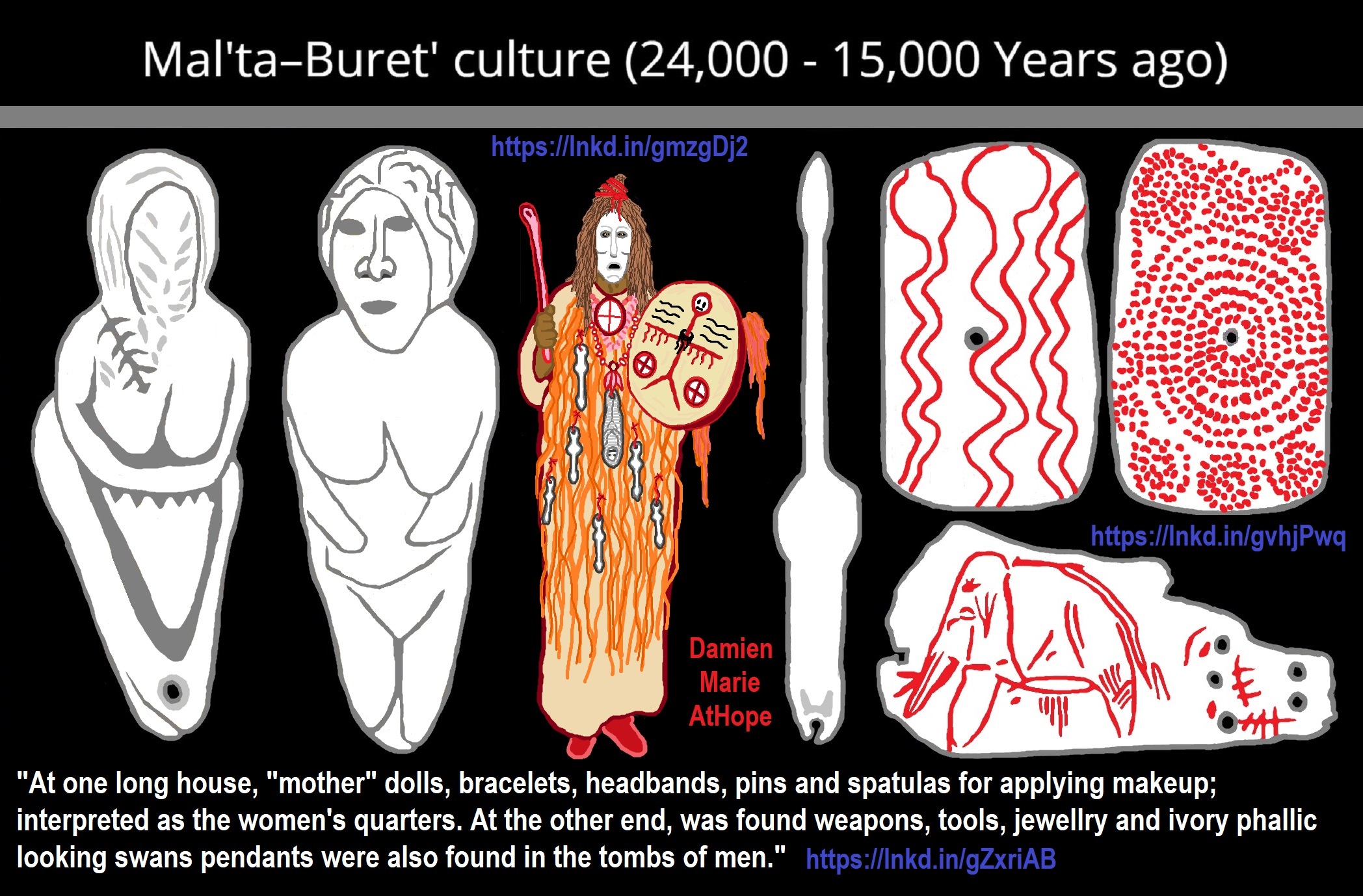
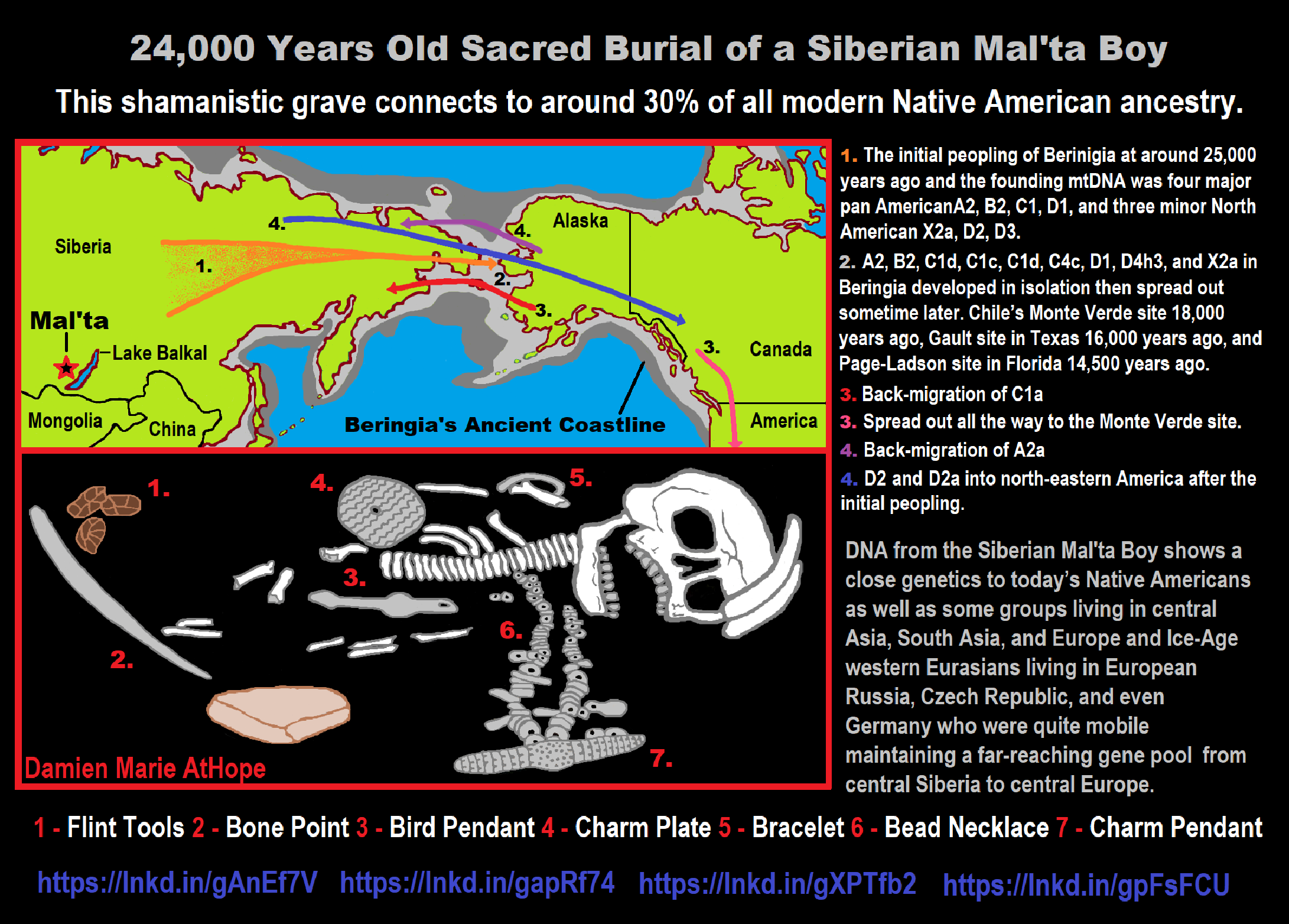

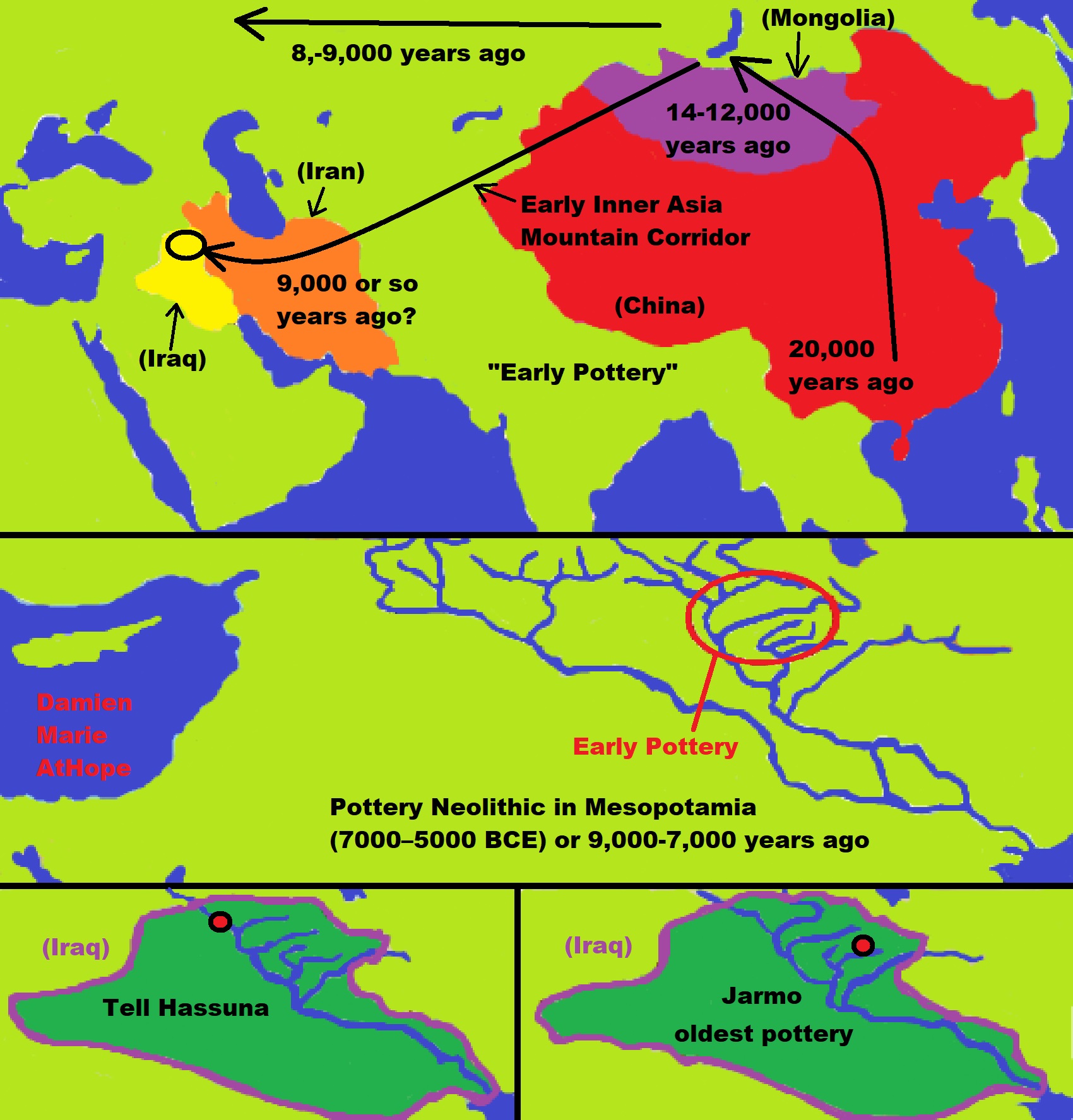

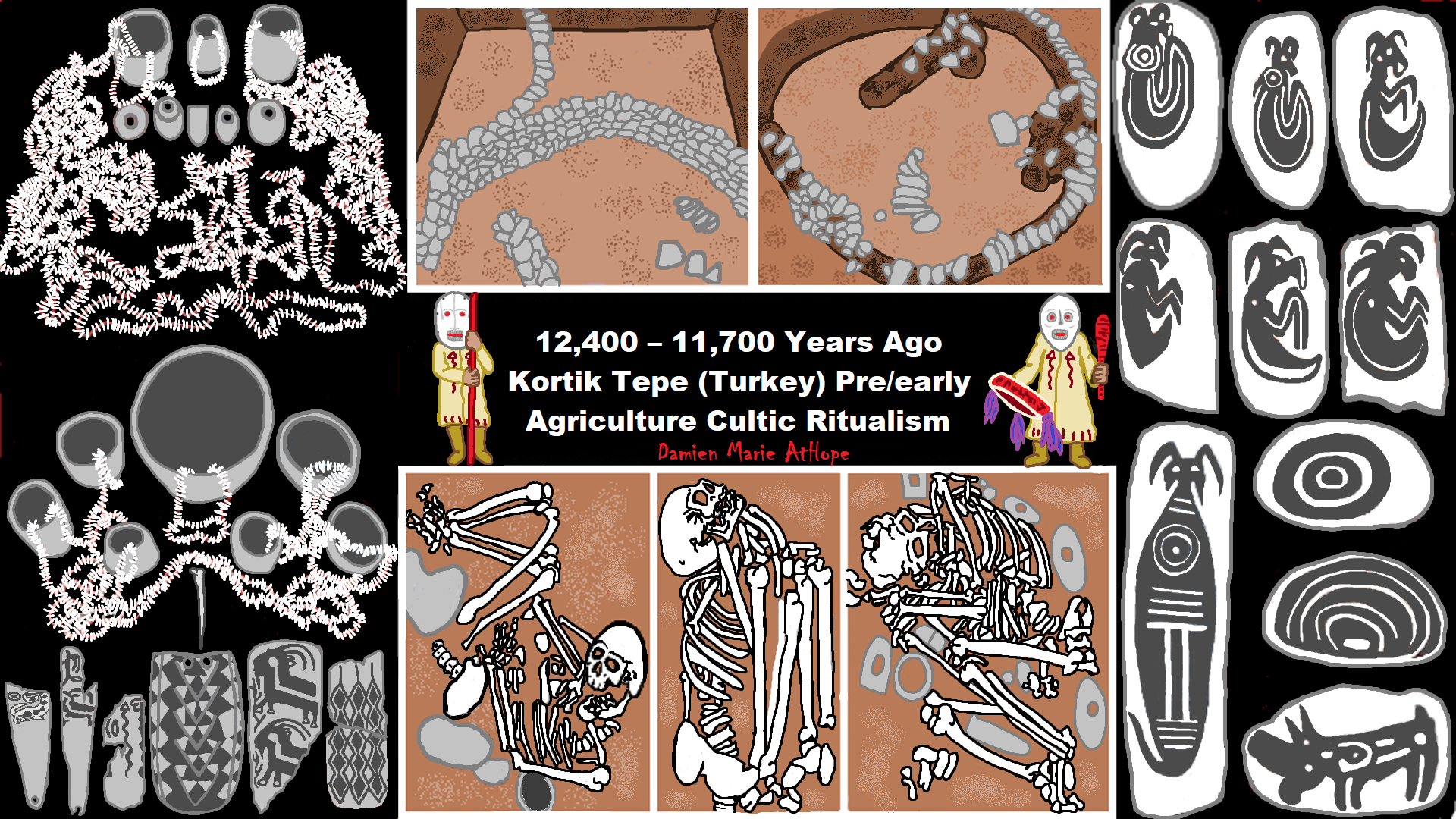
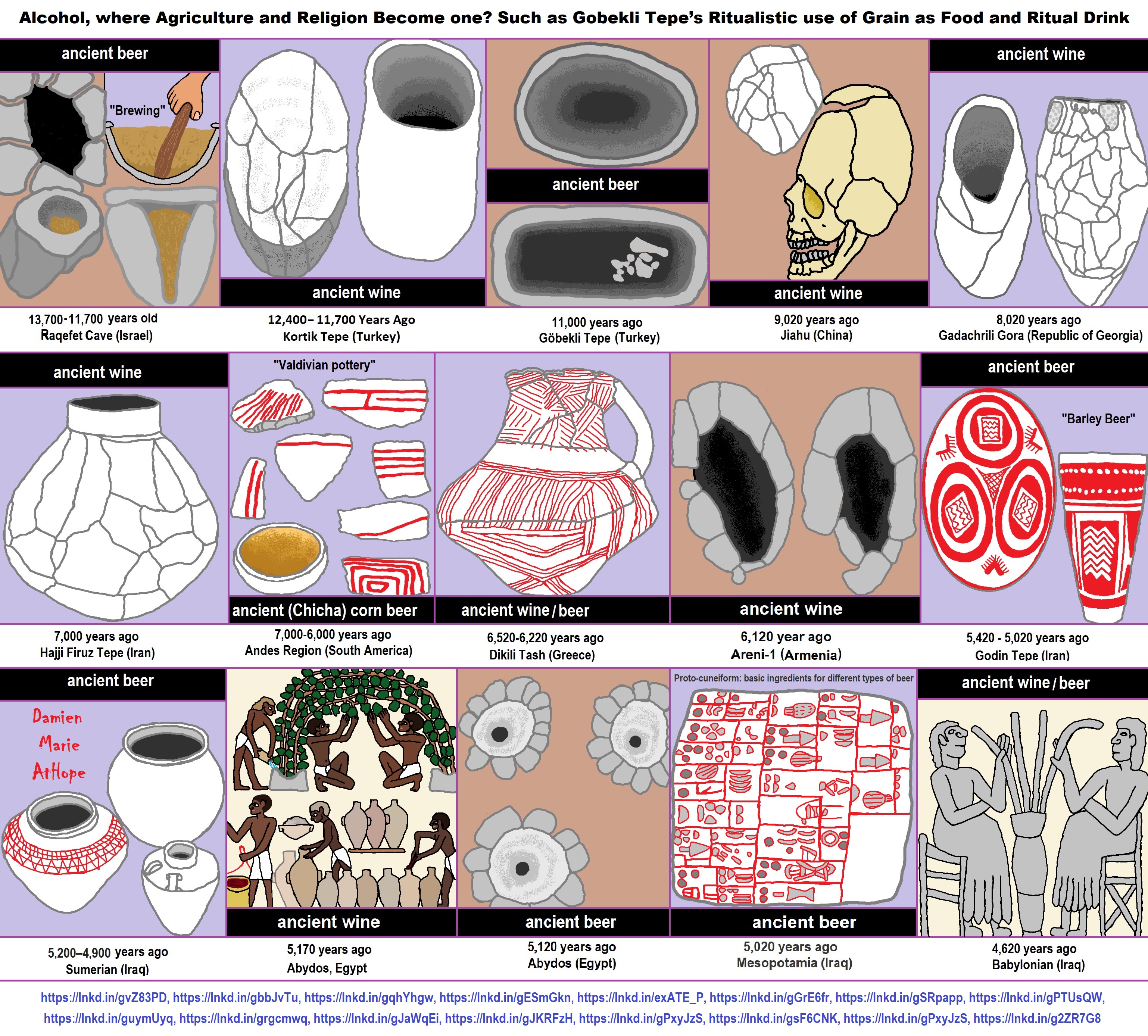
ref, ref, ref, ref, ref, ref, ref, ref, ref, ref, ref, ref, ref, ref, ref
Raqefet Cave
13,000-year-old stone mortars offers the earliest known physical evidence of an extensive ancient beer-brewing operation.
“The find comes on the heels of a July report that archaeologists working in northeastern Jordan discovered the charred remains of bread baked by Natufians some 11,600 to 14,600 years ago. According to the Stanford scientists, the ancient beer residue comes from 11,700 to 13,700 years old. Through laboratory analysis, other archaeological evidence found in the cave, and the wear of the stones, the team discovered that the ancient Natufians used species from seven plant families, “including wheat or barley, oat, legumes and bast fibers (including flax),” according to the article. “They packed plant-foods, including malted wheat/barley, in fiber-made containers and stored them in boulder mortars. They used bedrock mortars for pounding and cooking plant-foods, including brewing wheat/barley-based beer likely served in ritual feasts ca. 13,000 years ago,” the scientists write. “It has long been speculated that the thirst for beer may have been the stimulus behind cereal domestication, which led to a major social-technological change in human history; but this hypothesis has been highly controversial,” the Stanford authors say. “We report here of the earliest archaeological evidence for cereal-based beer brewing by a semi-sedentary, foraging people.” ref
“Beer making was an integral part of rituals and feasting, a social regulatory mechanism in hierarchical societies,” said Stanford’s Wang. The Raqefet Cave discovery of the first man-made alcohol production, the cave also provides one of the earliest pieces of evidence of the use of flower beds on gravesites, discovered under human skeletons. “The Natufian remains in Raqefet Cave never stop surprising us,” co-author Prof. Dani Nadel, of the University of Haifa’s Zinman Institute of Archaeology, said in a press release. “We exposed a Natufian burial area with about 30 individuals, a wealth of small finds such as flint tools, animal bones and ground stone implements, and about 100 stone mortars and cupmarks. Some of the skeletons are well-preserved and provided direct dates and even human DNA, and we have evidence for flower burials and wakes by the graves.” ref
“And now, with the production of beer, the Raqefet Cave remains provide a very vivid and colorful picture of Natufian lifeways, their technological capabilities, and inventions,” he said. Stanford’s Liu posited that the beer production was of a religious nature because its production was found near a graveyard. “This discovery indicates that making alcohol was not necessarily a result of agricultural surplus production, but it was developed for ritual purposes and spiritual needs, at least to some extent, prior to agriculture,” she said. “Alcohol making and food storage were among the major technological innovations that eventually led to the development of civilizations in the world, and archaeological science is a powerful means to help reveal their origins and decode their contents,” said Liu. “We are excited to have the opportunity to present our findings, which shed new light on a deeper history of human society.” ref


Animal Deties? Is the Bull symbol on the side and the big cat a Possible Type of or similar to a Tutelary Deity? Then there is yet another grouping of three animals, one being an odd bulged head bull, could they Possibly be a Type of or similar to Tutelary Deities?
Göbekli Tepe involves a male-dominated society?
“So far, every known depiction – as long as their sex is clearly recognizable – seems to be male, be it animals or humans. The only exception is a later added graffiti of a single woman on a stone slab in one of the later PPN B buildings. While this may somehow denote the site of Göbekli Tepe as a refuge of male hunters, it does of course not at all mean that women did not play a role in PPN society. There is a wide range of finds clearly connected to women in the contemporary settlements for instance – however, at Göbekli Tepe they (respectively their activity) remain invisible as of yet.” ref
I see a similarity in the bear art that I thin could be female as well as doing the same spread leg gesture.
Women and Sacred (BEARS) Animals?
“In the “hunters’ religion” preserved among the northern Finno-Ugric peoples, bear ceremonies are central. The Khanty, Mansi, Nenets, Sami, Finns, and Karelians have all been acquainted with myths and rites connected with the bear. The myths recount that the bear is of heavenly origin and is the son of the god of the sky; it descends from heaven and, when it dies, returns there. There is also a story about a marriage between a bear and a woman from which a tribe of the Skolt Sami (in Finland) is said to be descended. The bear-killing ceremony is divided into two acts—the killing itself and the feast afterward. Killing a bear that was protected by a forest guardian spirit involved a complicated ritual, which ended with bringing the bear home. Women believed that they had to keep at a distance so that the bear would not make them pregnant.” ref
38,000 Years Old Engraving of an Aurochs with Seeming Totemism Expression?
Bull Worship Patterns At Göbekli Tepe Shed Light On World’s Oldest Civilization. A 12,000-year-old geoglyph in the shape of a giant bull was found carved into a hill along the Gobekli Tepe, Taurus Mountain range in Turkey. The geoglyph has a stone circle star map with a mysterious message known as the Pleiades, an old celestial message. ref
Ancestor veneration in China: “Chinese traditional primordial religion” has been defined as the traditional religious system organized around the worship of ancestor-gods. Chinese ancestor worship, or Chinese ancestor veneration, also called the Chinese patriarchal religion, is an aspect of the Chinese traditional religion that revolves around the ritual celebration of the deified ancestors and tutelary deities of people with the same surname organized into lineage societies in ancestral shrines. Ancestors, their ghosts, or spirits, and gods are considered part of “this world”, that is, they are neither supernatural (in the sense of being outside nature) nor transcendent in the sense of being organized beyond nature. The ancestors are humans who have become godly beings, beings who keep their individual identities. For this reason, Chinese religion is founded on the veneration of ancestors. Ancestors are believed to be a means of connection to the supreme power of god Tian as they are considered embodiments or reproducers of the creative order of Heaven.” ref
“A household deity is a deity or spirit that protects the home, looking after the entire household or certain key members. It has been a common belief in pagan religions as well as in folklore across many parts of the world. Household deities fit into two types; firstly, a specific deity – typically a goddess – often referred to as a hearth goddess or domestic goddess who is associated with the home and hearth, with examples including the Greek Hestia and Norse Frigg. The second type of household deities are those that are not one singular deity, but a type, or species of animistic deity, who usually have lesser powers than major deities. This type was common in the religions of antiquity, such as the Lares of ancient Roman religion, the Gashin of Korean shamanism, and Cofgodas of Anglo-Saxon paganism.” ref
My Thoughts on the Evolution of Goddesses/Gods?
My speculations are, I would say, the evolution of deities went something like this: family ancestors evolved to metaphorical clan ancestors to deified metaphorical ancestors thus to goddesses and gods. How the natural elements became deified is likely similar believed nature/weather spirits became metaphorical weather spirits with animal/human spirit connections in the family/clan as a form of ancestor spirits and then deified to goddesses and gods. Lastly, I challenge the notions Çatal Höyük figurines as not involve some kind of goddesses in at least some of the figurines found but possibly not others, by some others who have tried to debunk the figurines, saying at most they where ancestors and nothing else. They, in my opinion, are wrongly and are limited in their thinking that even if hey where ancestors, that such sacred ancestors could not become goddesses or gods after death, which I have shown they commonly can in ancestor worship happen through the world. To me, this is equally valid for and especially from the Neolithic onwards.
“The geographic locations of the 33 hunter-gatherer societies were analyzed in the study on Hunter-Gatherers and the Origins of Religion which demonstrated the distribution of the seven characters describing hunter-gatherer religiosity.” ref
“Recent studies of the evolution of religion have revealed the cognitive underpinnings of belief in supernatural agents, the role of ritual in promoting cooperation, and the contribution of morally punishing high deities/gods/goddesses to the growth and stabilization of human society. The universality of religion across human society points to a deep evolutionary past. However, specific traits of nascent religiosity, and the sequence in which they emerged, have remained unknown. Here we reconstruct the evolution of religious beliefs and behaviors in early modern humans using a global sample of hunter-gatherers and seven traits describing hunter-gatherer religiosity: animism, belief in an afterlife, shamanism, ancestor worship, high deities/gods/goddesses, and worship of ancestors or high deities/gods/goddesses who are active in human affairs. We reconstruct ancestral character states using a time-calibrated supertree based on published phylogenetic trees and linguistic classification and then test for correlated evolution between the characters and for the direction of cultural change. Results indicate that the oldest trait of religion, present in the most recent common ancestor of present-day hunter-gatherers, was animism, in agreement with long-standing beliefs about the fundamental role of this trait. Belief in an afterlife emerged, followed by shamanism and ancestor worship. Ancestor spirits or high deities/gods/goddesses who are active in human affairs were absent in early humans, suggesting a deep history for the egalitarian nature of hunter-gatherer societies. There is a significant positive relationship between most characters investigated, but the trait “high deities/gods/goddesses” stands apart, suggesting that belief in a single creator deity can emerge in a society regardless of other aspects of its religion.” ref
“High gods” as single, all-powerful creator deities who may be active in human affairs and supportive of human morality. The variable is coded as four states. It differentiates between societies in which a creator deity is (1) absent, (2) present but inactive in human affairs, (3) active in human affairs but does no support a moral agenda, or (4) active and morally punishing. In 28 of the 33 societies in our sample coded for high gods in 28 of the 33 societies in our sample. Original coding in the additional five societies, based on principal ethnographic sources, completed the coding for all 33 societies is different geographic locations around the earth were analyzed in the study on hunter-gatherers and the origins of religion which demonstrated the distribution of the seven characters describing hunter-gatherer religiosity.” ref
“Research results reflect that animism was the earliest and most basic trait of religion because it enables humans to think in terms of supernatural beings or spirits. Animism is not a religion or philosophy, but a feature of human mentality, a by-product of cognitive processes that enable social intelligence, among other capabilities. It is a widespread way of thinking among hunter-gatherers. Animistic thought is a natural by-product of the human capacity for intentionality or “theory of mind mechanism”. This innate cognitive trait allows us to attribute a vital force to animate and inanimate elements in the environment. Once that vital force is assumed, attribution of other human characteristics will follow. Animistic beliefs are generally adaptive in the environments that prevail in hunter-gatherer societies. Animistic thinking would have been present in early hominins, certainly earlier than language. It can be inferred from the analyses, or indeed from the universality of animism, that the presence of animistic belief predates the emergence of belief in an afterlife.” ref
———————————————————————————————————
Marquis Amon – “That as the article on distribution of the seven characters of Hunter-Gatherer supernatural/spiritual beliefs” concludes that gods can emerge regardless of other aspects of religion. Hunter-gatherer societies were as stated the egalitarian nature of their societies had less use for high gods. In the development of hunter-gatherers and the semipermanent ritual/temple sites where it appears various groups of hunter-gathers mingled and shared ideas could explain the transition towards a more unified prosocial belief. That a place like Catal Hyuk could then progress to a more state-oriented religious society. Essentially we see a transition of Hunter-Gatherers to offset eventually in the steady hybridization of hunter-gather-farming societies. That as populations grew hunter-gathers were less needed and assimilated into an agricultural society that leads to more advanced prosocial and religious belief…ultimately stand-alone high gods became popular.”
Marquis Amon – “The Hunter-Gather societies were very different than what you call the “lazy” lifestyle of agricultural societies. So, their experiences would be different and shape their “world view”. The study states that animism is not a religion, but rather erroneous thinking that could very well lead to religious belief. That it is developmental; more specifically a trait shared in the most recent common ancestors of hunter-gatherers. Next, it outlines the relationships of closely related hunter-gather groups, that there is a link between genetic/ethnic/regional groups and the religious or prerequisite beliefs that they shared. Animism and shamanism, along with ancestor worship were most common. High gods and active high gods were the least common. The article also speaks of the prosocial, cooperative nature of religion, or religious belief. To me, the dynamic nature of hunter-gatherer lifestyle had them more closely related to the world in terms of animism than high gods, more specifically high gods. That there wasn’t really a specific feeling of direct moral consequence to anything they did. Yet when they settled in agricultural life the static nature seemed their actions were closely tied and judged by some unseen force(active high god). It is my opinion that this article in its attempt to trace the origins of religions in hunter-gatherers supports the argument that gods are not things people are naturally inclined to believe in. Rather based on the statistics, percentages, high gods or active high gods were minority thinking. This would mean that most early humans and religious development really didn’t include gods in their beliefs. I think that is important to note for the point of psychology in terms of thinking. That gods would be further in the evolution or religion and not default.”
———————————————————————————————————
But the Bulders of Gobekli Tepe were Animists, how can They then have Deities?
“In the Indigenous African Spiritual Traditions tend to involve Animism, Ancestor Worship, Humans, and Deities. Few written records exist about the Traditional Beliefs of African spiritual traditions as they were passed orally by griots. A griot is a singing storyteller used to pass down belief systems through generations. Like the game of telephone, oral traditions change over time and explains how the beliefs and customs of one group of Africans are not universally shared by others. There is a great variety of beliefs and practices in African tradition. Indigenous African Animism: The belief in one supreme god, several other gods, spirits of ancestors, sacrifice to secure protection, and the need for a rite of passage are all included in Animism. Animism is the belief that everything on Earth has a powerful spirit that can help or harm human needs. Many Africans believed that the spirits of their dead ancestors were present on Earth and existed in animals or inanimate (lifeless) objects. These spirits would be called upon for help in times of need or trouble. Animism still exists today in Sub-Sahara Africa, Native American tribes in North and South America, and in aborigines in Australia.” ref
“In animism: The animistic worldview…such as shamanism, totemism, or ancestor propitiation. These cults do not, in any case, constitute the whole religion of a people. They are, however, institutions that are not bound to one culture area—an Australian totemic cult does bear a “family resemblance” to an African one, though there are differences also.” ref
“Indigenous African Spiritual Traditions may believe in a High Deity that created the world and governs the universe. The High Deity is too distant and has limited contact with the daily operation of human life, thus, calling a need for deities or gods and goddesses. The deities control the day-to-day occurrences in human life. These lesser spirits could control creation, nature, leadership, and agriculture.” ref
“Religion in pre-Islamic Arabia included indigenous animistic–polytheistic beliefs. Arabian polytheism, the dominant form of religion in pre-Islamic Arabia, was based on veneration of deities and spirits. Worship was directed to various gods and goddesses, including Hubal and the goddesses al-Lāt, al-‘Uzzā, and Manāt, at local shrines and temples such as the Kaaba in Mecca. Deities were venerated and invoked through a variety of rituals, including pilgrimages and divination, as well as ritual sacrifice. Different theories have been proposed regarding the role of Allah in Meccan religion. Many of the physical descriptions of the pre-Islamic gods are traced to idols, especially near the Kaaba, which is said to have contained up to 360 of them. Nomadic religious belief systems and practices are believed to have included fetishism, totemism, and veneration of the dead. Settled urban Arabs, on the other hand, are thought to have believed in a more complex pantheon of deities.” ref
But the Bulders of Gobekli Tepe were Totemists how can They then have Deities?
“In the pre-Christian worldview and practices of the Norse and other Germanic peoples, we find totemism manifested in two especially prominent and powerful areas: the animal helping spirits, most notably the fylgjur, and the patron animals of shamanic military societies. Many of the gods and goddesses have personal totem animals which may or may not be fylgjur. For example, Odin is particularly associated with wolves, ravens, and horses, Thor with goats, and Freya and Freyr with wild boars. It should come as no surprise, then, that their human devotees have personal totems of their own.” ref
“The term totem is derived from the Ojibwa word ototeman, meaning “one’s brother-sister kin.” The Great Spirit had given toodaims (“totems”) to the Ojibwa clans, and because of this act, it should never be forgotten that members of the group are related to one another and on this account may not marry among themselves. There is usually a prohibition or taboo against killing, eating, or touching the totem. Totemism is frequently mixed with different kinds of other beliefs, such as ancestor worship, ideas of the soul, or animism.” ref
“For the Ojibwa the supernatural world held a multitude of spiritual beings and forces. Some of these beings and forces—Sun, Moon, Four Winds, Thunder, and Lightning—were benign, but others—ghosts, witches, and Windigo, a supernatural cannibalistic giant—were malevolent and feared. Presiding over all other spirits was Kiccimanito, or Great Spirit, although this belief may have been a product of European influence. Ojibwa religion was very much an individual affair and centered on the belief in power received from spirits during dreams and visions.” ref
“The traditional Ojibwe religion, Midewiwin, sets down a path of life to follow (mino-bimaadizi). That path honors promises and elders, and values behaving moderately and in coherence with the natural world. Midewiwin is closely tied to indigenous medicine and healing practices based on an extensive understanding of the ethnobotany of the regions the Ojibwa reside in, as well as songs, dances, and ceremonies.” ref
“Midewiwin has its origin as: In the beginning, Midemanidoo (Gichimanidoo) made the midemanidoowag. He first created two men, and two women; but they had no power of thought or reason. Then Midemanidoo (Gichimanodoo) made them rational beings. He took them in his hands so that they should multiply; he paired them, and from this sprung the Anishinaabe. When there were people he placed them upon the earth, but he soon observed that they were subject to sickness, misery, as well as death and that unless he provided them with the Sacred Medicine they would soon become extinct.” ref
“According to Ojibwa religion, Midewiwin rituals were first performed by various supernatural beings to comfort Minabozho—a culture hero and intercessor between the Great Spirit and mortals—on the death of his brother. Minabozho, having pity on the suffering inherent in the human condition, transmitted the ritual to the spirit-being Otter and, through Otter, to the Ojibwa.” ref
“Among the Kpelle people of Liberia there is not only group totemism but also individual totemism. The totem also punishes the breach of any taboo. Kpelle totems include animals, plants, and natural phenomena. The kin groups that live in several villages were matrilineal at an earlier time, but during the 20th century, they began to exhibit patrilineal tendencies. The group totems, especially the animal totems, are considered as the residence of the ancestors; they are respected and are given offerings.” ref
“Kpelle religious beliefs of the vast majority of people hold traditional animistic beliefs. Kpelle religion is rather inchoate, focused vaguely on God, the ancestors, and forest spirits and more sharply on the secret medicine societies and the masked spirits who operate within those societies. The Kpelle recognize a High God who created the world and then retired. They believe in a variety of lesser spirits or genii, including ancestors, personal totems, water spirits, and spirits in magically powerful masks. Witchcraft and sorcery figure prominently in the belief system. Kpelle religious practitioners. The Kpelle recognizes three principal types of shamans (medicine person of either sex): those associated with the Poro and Sande societies, those associated with other specific medicine societies, and those who are independent. The first two types mainly conduct rituals; the third type, and occasionally the second, primarily heal. The Kpelle also utilizes diviners who analyze problems for a fee.” ref
But the Bulders of Gobekli Tepe were Shamanists how can They then have Deities?
“According to a self-reported practicing hereditary Siberian shaman, claiming to introduce the world to the wisdom of Siberian shamans in the book “Knowledge of Siberian Shamans”. And this book reportedly first draws a map of the shamanic map of the World. When it is seen it is realized that there are 4 deities of the shamanic world. God Tengri, deities who lives on the East, God Ulgen – lives on the South, Goddess Umai stays on the West, God Erlik is on the North.” ref
“The most important examples for Shamanism in Siberia are Yakuts, Dolgans, and Tuvans. A large minority of people in North Asia, particularly in Siberia, follow the religio-cultural practices of shamanism. Some researchers regard Siberia as the heartland of shamanism.” ref, ref
“Yakuts, are a Turkic ethnic group who mainly live in the Republic of Sakha in the Russian Federation, with some extending to the Amur, Magadan, Sakhalin regions, and the Taymyr and Evenk Autonomous Districts. The Yakut language belongs to the Siberian branch of the Turkic languages.” ref
“Yakut religion derives from Turkic, Mongolic, Tungusic, and Russian ideas. Labels like “animist,” “shamanist,” or “Russian Orthodox” do not suffice. Ideas of sin are syncretized with concepts of contamination and taboo. Saints and bears are seen as shamanic spirit helpers. Christ is identified with the Yakut Bright Creator Elder God, Aiyy-toyon. A pantheon of gods, believed to live in nine hierarchical eastern heavens, was only one aspect of a complex traditional cosmology that still has meaning for some Yakut. Another crucial dimension was the spirit-soul ( ichchi ) of living beings, rocks, trees, natural forces, and objects crafted by humans. Most honored was the hearth spirit ( yot ichchite ), still fed morsels of food and drink by pious Yakut. Giant trees ( al lukh mas ), deep in the forest, were especially sacred: their ichchi are still given small offerings of coins, scarves, and ribbons. Belief in ichchi is related to ancient ideas of harmony and equilibrium with nature, and to shamanism. Yakut shamanism is a Turkic, Mongolic, and Tungusic blend of belief in the supernatural, with emphasis on the ability of “white,” or benign, shamans to intercede, through prayers and séances, with eastern spirits for the sake of humans. “Black” shamans, communing with evil spirits, could both benefit and harm humans. Shaman as Religious Practitioners. As with other Siberian peoples, Yakut shamans ( oiun if male, udagan if female) combine medical and spiritual practice.” ref
“Dolgans (Russian: долганы; self-designation: долган, тыа-киһи, һака(саха)) are a Turkic people, who mostly inhabit Krasnoyarsk Krai, Russia. Most Dolgans practice old shamanistic beliefs; however, most are influenced by Eastern Orthodox Christianity.” ref
“Dolgans call all supernatural beings saĭtaan, a word of Arabic origin brought to the Dolgans by the Russians, who borrowed it from Turkic-speaking Muslims. In practice, small stones and anthropomorphic and zoomorphic images carved from wood or reindeer antler, as well as certain household objects, figure as saĭtaans. All these objects are revered because they are bearers of spirits, either independently or by means of the shaman. A saĭtaan may be a personal helper of its owner or the protector of an entire family or nomadic group.” ref
“Tuvans are a Turkic ethnic group native to Tuva and Mongolia. They speak Tuvan, a Siberian Turkic language. They are also regarded in Mongolia as one of the Uriankhai peoples. Tuvans have historically been cattle-herding nomads, tending to herds of goats, sheep, camels, reindeer, cattle, and yaks for the past thousands of years. The traditional religion of Tuvans is a type of Tengriism, or Turkic animistic shamanism. The religion is still widely practiced alongside Tibetan Buddhism.” ref
Tengri, ‘Sky God’ and Mongolian shamanism?
“Worship of Tengri is Tengrism. The core beings in Tengrism are the Heavenly-Father (Tengri/Tenger Etseg) and the Earth Mother (Eje/Gazar Eej). It involves shamanism, animism, totemism, and ancestor worship. Tengrism is an ancient and medieval Central Asian–Eurasian Steppe sky god Tengri-centered state religion as well as a number of modern Turko–Mongolic native religious movements and teachings. It was the prevailing religion of the Turks and Mongols (including Bulgars and Xiongnu), Huns, and, possibly, the Manchus and Magyars, as the religion of the several medieval states: Göktürk Khaganate, Western Turkic Khaganate, Eastern Turkic Khaganate, Old Great Bulgaria, Danube Bulgaria, Volga Bulgaria, and Eastern Tourkia (Khazaria). In Irk Bitig, Tengri is mentioned as Türük Tängrisi (God of Turks). According to many academics, at the imperial level, especially by the 12th–13th centuries, Tengrism was a monotheistic religion; most contemporary Tengrists present it as being monotheistic too. The forms of the name Tengri (Old Turkic: Täŋri) among the ancient and modern Turks and Mongols are Tengeri, Tangara, Tangri, Tanri, Tangre, Tegri, Tingir, Tenkri, Teri, Ter, and Ture. The name Tengri (“the Sky”) is derived from Old Turkic: Tenk (“daybreak”) or Tan (“dawn”). Mongolia is sometimes poetically called the “Land of Eternal Blue Sky” (Munkh Khukh Tengriin Oron) by its inhabitants.” ref
“Tengri was the national god of the Göktürks and the Göktürk khans based their power on a mandate from Tengri. These rulers were generally accepted as the sons of Tengri who represented him on Earth. They wore titles such as tengrikut, kutluġ or kutalmysh, based on the belief that they attained the kut, the mighty spirit granted to these rulers by Tengri. Tengri was the chief deity worshipped by the ruling class of the Central Asian steppe peoples in the 6th to 9th centuries (Turkic peoples, Mongols, and Hungarians). It lost its importance when the Uighuric kagans proclaimed Manichaeism the state religion in the 8th century. The worship of Tengri was brought into Eastern Europe by the Huns and early Bulgars. Tengri assumes the name Tengri Ülgen and withdraws into Heaven from which he tries to provide people with guidance through sacred animals that he sends among them. The Ak Tengris occupy the fifth level of Heaven. Shaman priests who want to reach Tengri Ülgen never get further than this level, where they convey their wishes to the divine guides. Tengri is considered to be the chief god who created all things. In addition to this celestial god, they also had minor divinities (Alps) that served the purposes of Tengri. As Gök Tanrı, he was the father of the sun (Koyash) and moon (Ay Tanrı) and also Umay, Erlik, and sometimes Ülgen. Tengri is considered to be strikingly similar to the Indo-European sky god, *Dyeus, and the structure of the reconstructed Proto-Indo-European religion is closer to that of the early Turks than to the religion of any people of Near Eastern or Mediterranean antiquity.” ref
“For the Huichol — a small tribe of around 15,000 who live in the Sierra Madre Mountains of central-western Mexico, shamanism is a way of being — the practice of honoring all life and remembering how we relate to the world around us through ceremony, prayer, and pilgrimage. The Huichols say that human beings are in the middle, between the earth and the sky, and that we are mirrors of the gods.” ref
“The pre-Christian religion of the Germanic peoples teems with shamanic elements – so much so that it would be impossible to discuss them all here. Our discussion will have to be confined to those that are the most significant. We’ll start with Odin, the father of the gods, who possesses numerous shamanic traits. From there, we’ll examine shamanism in Norse magical traditions that were part of the female sphere of traditional northern European social life, and then move on to the male sphere of the berserkers and other “warrior-shamans” before concluding. Odin, the chief of the gods, is often portrayed as a consummate shamanic figure in the oldest primary sources that contain information about the pre-Christian ways of the Germanic peoples. His very name suggests this: “Odin” (Old Norse Óðinn) is a compound word comprised of óðr, “ecstasy, fury, inspiration,” and the suffix -inn, the masculine definite article, which, when added to the end of another word like this, means something like “the master of” or “a perfect example of.” The name “Odin” can, therefore, be most aptly translated as “The Master of Ecstasy.” The eleventh-century historian Adam of Bremen confirms this when he translates “Odin” as “The Furious.” This establishes a link between Odin and the ecstatic trance states that comprise one of the defining characteristics of shamanism.” ref
“Odin’s shamanic spirit-journeys are well-documented. The Ynglinga Saga records that he would “travel to distant lands on his own errands or those of others” while he appeared to others to be asleep or dead. Another instance is recorded in the Eddic poem “Baldur’s Dreams,” where Odin rides Sleipnir, an eight-legged horse typical of northern Eurasian shamanism, to the underworld to consult a dead seeress on behalf of his son. Odin, like shamans all over the world, is accompanied by many familiar spirits, most notably the two ravens Hugin and Munin. The shaman must typically undergo a ritual death and rebirth in order to acquire his or her powers, and Odin underwent exactly such an ordeal when he discovered the runes. Having done so, he became one of the cosmos’s wisest, most knowledgeable, and most magically powerful beings. In any case, there were other forms of shamanism that were much more socially acceptable for men to practice. One of the central institutions of traditional Germanic society was the band of elite, ecstatic, totemistic warriors. Some of the warriors in these warbands were berserkers. These were no ordinary soldiers; the initiation rituals, fighting techniques, and other spiritual practices of these bands were such that their members could be aptly characterized as “warrior-shamans.” ref
“Considering the nature and practices of Finnic shamanism, it is important to recognize the vital role that shamanic godheads, such as Väinämöinen, Ilmarinen, Lemminkäinen, and Joukahainen have played in the Finno-Baltic pagan tradition as well as in the development of deep cosmological understanding and unity within a specific mortal shaman. Additionally, such mortal religious leaders may have influenced popular conceptions of Finno-Baltic pagan cosmology – through their powerful and influential role within pre-Christian communities. The cosmology and shamanic practices of pre-Christian Finnish society largely deppends upon the accurate mapping of the aforementioned deities, and the recognition of any elements that may have been transferred upon their godheads at a later time due to the contact with other cultures.” ref
But the Bulders of Gobekli Tepe did Ancestor Worship how can They then have Deities?
“Primitive agriculture is called horticulture by anthropologists rather than farming because it is carried on like simple gardening, supplementary to hunting and gathering. It differs from farming also in its relatively more primitive technology. It is typically practiced in forests, where the loose soil is easily broken up with a simple stick, rather than on grassy plains with heavy sod. Nor do horticulturalists use fertilizer intensively or crop rotation, terracing, or irrigation. Horticulture is therefore much less productive than agriculture. The villages are small—some no larger than many hunting-gathering settlements—and the overall population density is low compared with farming regions. In primitive culture: Horticultural societies…society does not usually practice ancestor worship as does the hierarchical society. Among horticultural peoples with chiefdoms, the chief’s ancestors, in time, become gods. The most remote ancestors, the founders of the chiefly lineage, are the most important gods; more recent ancestors and those of related but collateral lines have ref, ref
“Ancestor veneration is a practice that nearly all pagan peoples, past and present, have shared, and the pre-Christian Norse and other Germanic peoples were certainly no exception. The dead remained in their community’s collective memory long after their passing, and were believed to confer blessings upon the land and the people they left behind. This may have been especially so if they were properly-revered by their descendants. In Old Norse literature, the most frequent gift of the ancestors is the fertility of the land, which, it hardly needs to be pointed out, corresponds very well to the ecological role of a decaying body – providing nourishment for other, living members of the ecological community.” ref
Divine heroes/Hero worship in Finno-Ugric religion does not point to culture heroes who are described in myth and whose actions are located in cosmogonic contexts. In general, culture heroes are not worshipped. The matter is otherwise when dealing with divinized historical figures, the cults of which are found among several of the Finno-Ugric peoples. Mardan of the Yelabuga Udmurt is viewed as the progenitor of 11 villages and the one who led the dwellers therein from the north to their present habitations. There is a sacrificial ceremony in his honor every year. Also, there are signs of the worship of tribal chiefs—for example, in the forest sanctuary worship of the Udmurt (lud) and the Volga Finns (keremet). The best-known of the Cheremis princes, called “the old man of the Nemda Mountain,” is a great ancient warrior under whose rule the people were strong and united. According to this myth, he promised to return when war threatened; once he was called for unnecessarily and, after discovering the betrayal, he ordered the annual propitiation sacrifice of a foal. The Ob Ugrians have a large number of “local gods” of whom pictures have been made and who are sometimes associated with ancient mighty men, heroes, and saints. A death doll made by a shaman may also have been the origin of a hero cult; the Nenets have been known to cherish and feed such a doll for as long as 50 years.” ref
Ancestor veneration in China: “Chinese traditional primordial religion” has been defined as the traditional religious system organized around the worship of ancestor-gods. Chinese ancestor worship, or Chinese ancestor veneration, also called the Chinese patriarchal religion, is an aspect of the Chinese traditional religion that revolves around the ritual celebration of the deified ancestors and tutelary deities of people with the same surname organized into lineage societies in ancestral shrines. Ancestors, their ghosts, or spirits, and gods are considered part of “this world”, that is, they are neither supernatural (in the sense of being outside nature) nor transcendent in the sense of being organized beyond nature. The ancestors are humans who have become godly beings, beings who keep their individual identities. For this reason, Chinese religion is founded on the veneration of ancestors. Ancestors are believed to be a means of connection to the supreme power of god Tian as they are considered embodiments or reproducers of the creative order of Heaven.” ref
Ancestor Worship in Ancient China dates back to the Neolithic period: “The earliest clear evidence of ancestor worship in China dates to the Yangshao society which existed in the Shaanxi Province area before spreading to parts of northern and central China during the Neolithic period (8,000 to 3,000 years ago in this case). In the Shang dynasty (3,600 – 3,046 years ago) the ancestors of the royal family were thought to reside in heaven within the feudal hierarchy of other spirit-gods. These ancestors, it was believed, could be contacted via a shaman. In the Zhou period (3,046 – 2,256 years ago), the ancestors of rulers had their own dedicated temples, typically within the royal palace complexes, and the presence of such a temple was even a definition of a capital city in the 2,400-2,300 years ago.” ref
“In some Afro-diasporic cultures, ancestors are seen as being able to intercede on behalf of the living, often as messengers between humans and the gods. As spirits who were once human themselves, they are seen as being better able to understand human needs than would a divine being. Ancestor veneration is prevalent throughout Africa and serves as the basis of many religions. It is often augmented by a belief in a supreme being, but prayers and/or sacrifices are usually offered to the ancestors who may ascend to becoming a kind of minor deities themselves.” ref
“Amongst Hindus and Sikhs, ancestors may be worshiped as Gramadevata (village deity) or clan deity, such as Jathera (also called Dhok, from Sanskrit Dahak or fire).” ref
“Ancestor worship in Assam, which is a state in India, situated south of the eastern Himalayas along the Brahmaputra and Barak River valleys. In the Ahom religion is based on ancestor-worship. The Ahoms believe that a man after his death remains as ‘Dam’ (ancestor) only for a few days and soon he becomes ‘Phi’ (God). They also believe that the soul of a man which is immortal unites with the supreme soul, possesses the qualities of a spiritual being and always blesses the family.” ref
“Ancestor Worship in the Philippines Anito, also spelled anitu, refers to ancestor spirits, nature spirits, and deities (diwata) in the indigenous animistic religions of precolonial Philippines. It can also refer to carved humanoid figures, the taotao, made of wood, stone, or ivory, that represent these spirits. In the animistic indigenous religions of the precolonial Philippines, ancestor spirits were one of the two major types of spirits (anito) with whom shamans communicate. Ancestor spirits were known as umalagad (lit. “guardian” or “caretaker”). They can be the spirits of actual ancestors or generalized guardian spirits of a family.” ref, ref
“In Japan, a family or a community may worship deified ancestral spirits as their “ancestral deity” (sojin) or “tutelary deity” (ujigami) guardian/patron deity, clan deity. Parent deities, are an extension of the image of parenthood to kami, expressing the belief that kami care for human beings in the same way that human parents care for their children. The term is believed to describe the close relationship between kami and humans, one embodying a particularly intimate affection toward the kami.” ref
“Ancestral deities include family and communal forbears, heroes, and deities associated with the household or with origin myths of humankind. Not all mythical forbears have the status of divinities, nor do all deceased forbears achieve the status of venerated ancestors, or heroes.” ref
Tutelary Deities
“A tutelary is a deity or spirit who is a guardian, patron, or protector of a particular place, geographic feature, person, lineage, nation, culture, or occupation. The etymology of “tutelary” expresses the concept of safety, and thus of guardianship. Chinese folk religion, both past and present, includes a myriad of tutelary deities. Exceptional individuals may become deified after death. In Hinduism, tutelary deities are known as ishta-devata and Kuldevi or Kuldevta. Gramadevata are guardian deities of villages. In Korean shamanism, jangseung and sotdae were placed at the edge of villages to frighten off demons. They were also worshiped as deities. In Shinto, the spirits, or kami, which give life to human bodies come from nature and return to it after death. Ancestors are therefore themselves tutelaries to be worshiped. In Philippine animism, Diwata or Lambana are deities or spirits that inhabit sacred places like mountains and mounds and serve as guardians. Thai provincial capitals have tutelary city pillars and palladiums. The guardian spirit of a house is known as Chao Thi or Phra Phum. Almost every Buddhist household in Thailand has a miniature shrine housing this tutelary deity, known as a spirit house. And in Tibetan Buddhism has Yidam as a tutelary deity.” ref
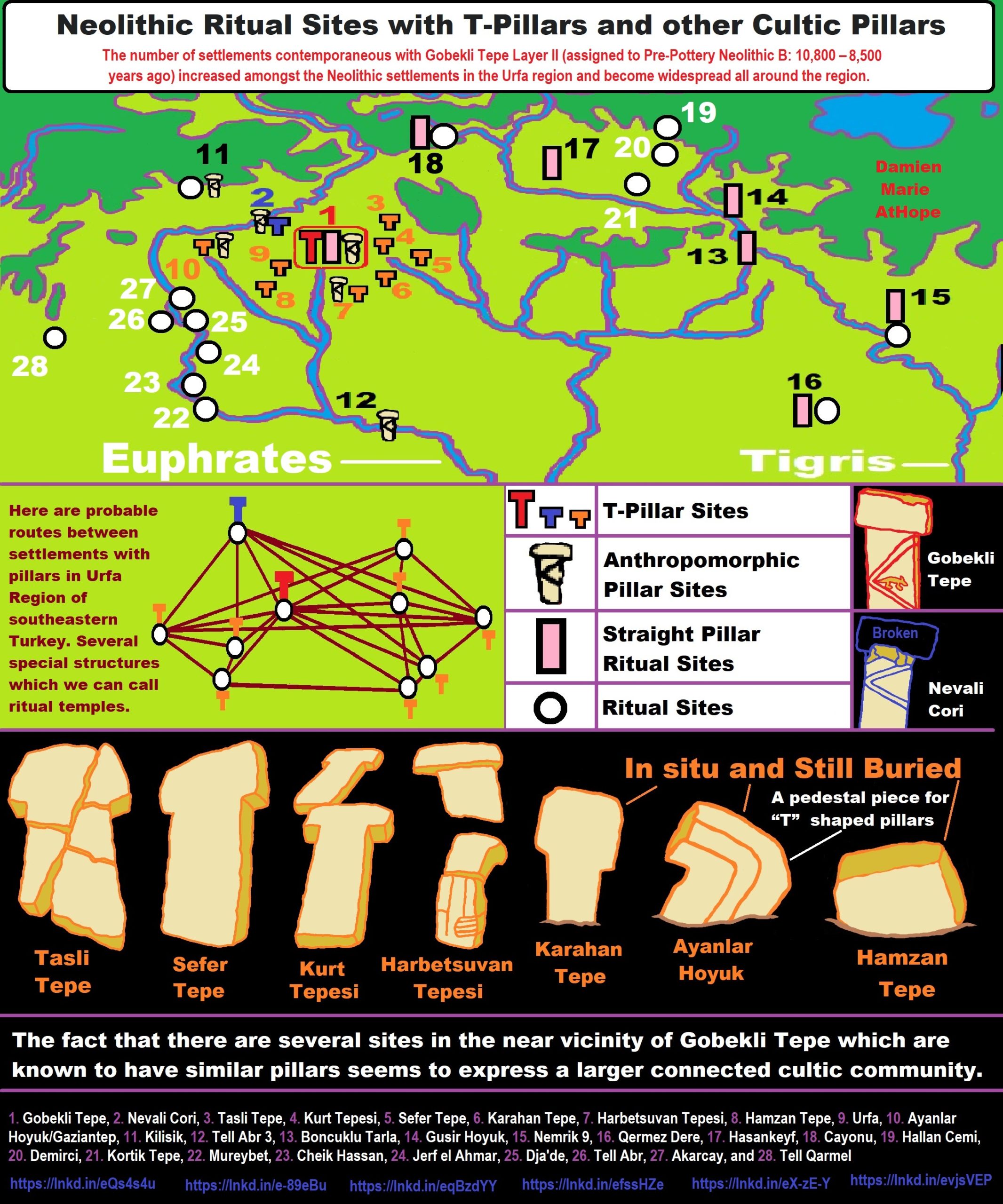
The number of settlements contemporaneous with Gobekli Tepe Layer II (assigned to Pre-Pottery Neolithic B: 10,800 – 8,500 years ago) increased amongst the Neolithic settlements in the Urfa region and become widespread all around the region.
- Gobekli Tepe, 2. Nevali Cori, 3. Tasli Tepe, 4. Kurt Tepesi, 5. Sefer Tepe, 6. Karahan Tepe, 7. Harbetsuvan Tepesi, 8. Hamzan Tepe, 9. Urfa, 10. Ayanlar Hoyuk/Gaziantep, 11. Kilisik, 12. Tell Abr 3, 13. Boncuklu Tarla, 14. Gusir Hoyuk, 15. Nemrik 9, 16. Qermez Dere, 17. Hasankeyf, 18. Cayonu, 19. Hallan Cemi, 20. Demirci, 21. Kortik Tepe, 22. Mureybet, 23. Cheik Hassan, 24. Jerf el Ahmar, 25. Dja’de, 26. Tell Abr, 27. Akarcay, and 28. Tell Qarmel
Göbekli Tepe is not alone, in fact, it is part of a religious/cultural connected ritual culture in the general region. There are several other similar sites with similar T-pillars to Göbekli Tepe or other types of stone pillar providing a seeming connected cult belief or religious culture of pillars seen in the PPNA-PPNB in the northern portion of the Near East.
“The locations of the sites that contain “T” shaped pillars are the main topic that needs more understanding to grasp the larger sociocultural-religious cultural complex in the same general region. Another matter under discussion is to comprehend the differences between the small-scale settlements that contain cult centers and “T” shaped pillars and the larger ones found at Gobekli Tepe layer III. The fact that settlements with “T” shaped pillars contain both the remains of circular domestic buildings and the pillars such as seen at Cayonu and Nevali Cori, which are also known to contain cult and domestic buildings. It is contemplated that such settlements are contemporary with Gobekli Tepe layer II and the cult building known from Nevali Cori based on the similarities and differences of the “T” shaped pillars. In the light of the finds unearthed from the settlements in Şanliurfa region that contain “T” shaped pillars, such settlements should be dated to the end of Late Pre-Pottery Neolithic A (LPPNA) and the Early Pre-Pottery Neolithic B (EPPNB).” ref

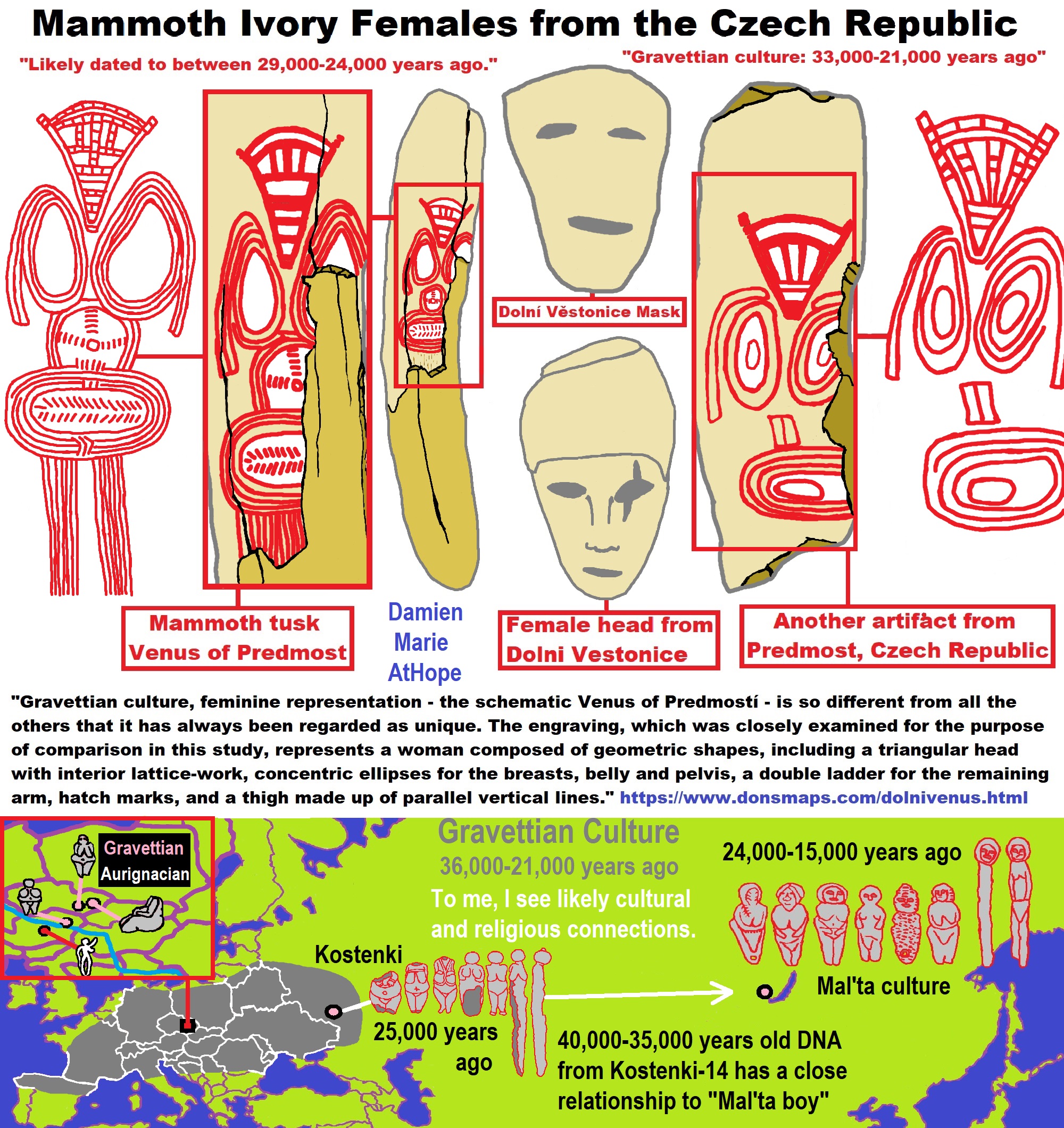

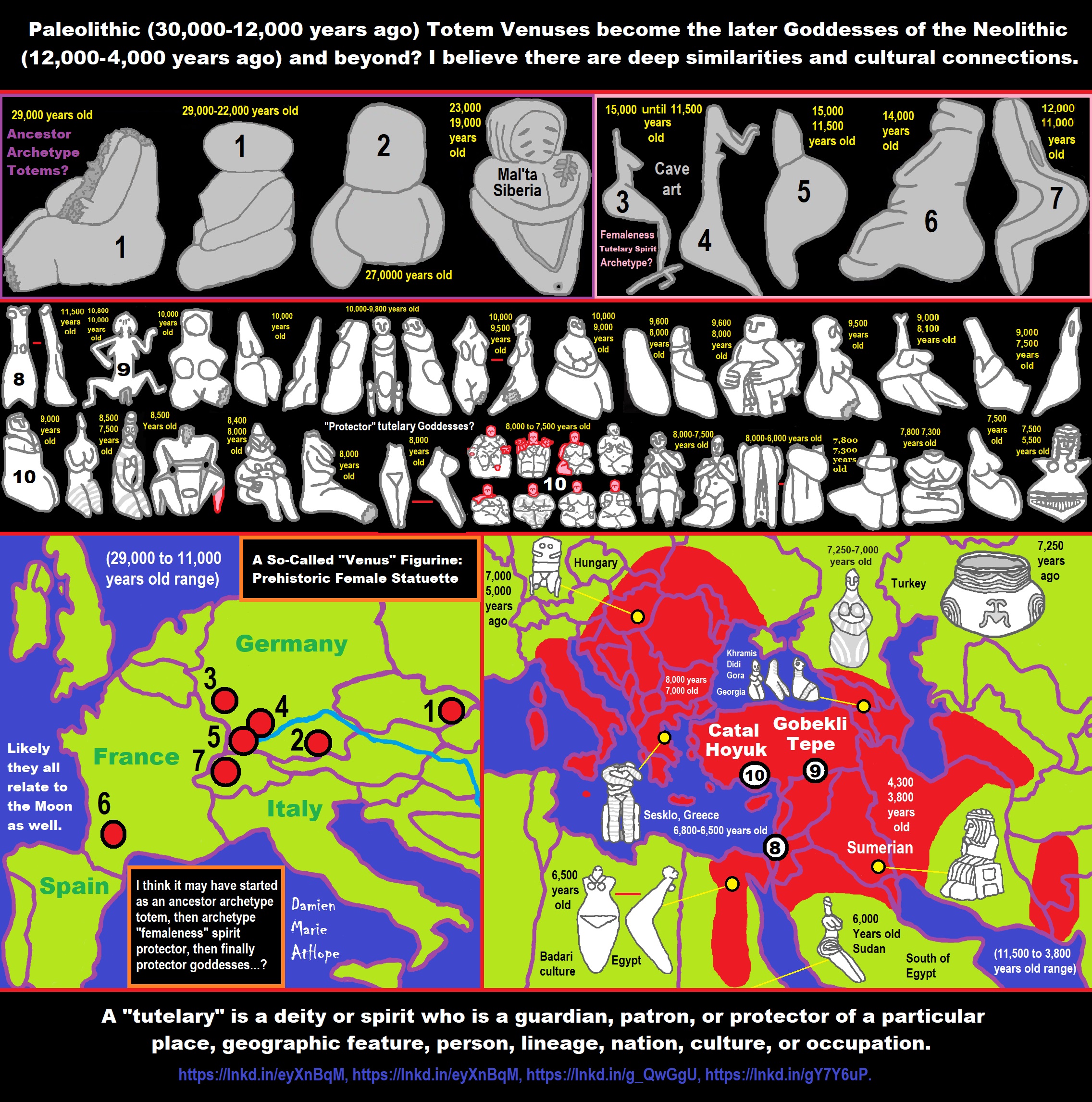

ref, ref, ref, ref, ref, ref, ref, ref, ref, ref, ref, ref, ref, ref, ref, ref, ref, ref, ref, ref, ref, ref, ref, ref, ref, ref, ref, ref, ref, ref, ref, ref, ref, ref, ref, ref, ref, ref, ref, ref, ref, ref
Archaeology shows both the common culture and genetics of the earliest Indo-Europeans in Europe were forming from the 8,000-6,020 years ago, due to migration of the Western Baltic Mesolithic population linked with Poland. Scandinavian Hunter-Gatherers: mix of Western and Eastern Hunter-Gatherers beginning around 13,000 years ago.
Baltic Reindeer Hunters: Swiderian, Lyngby, Ahrensburgian, and Krasnosillya cultures 12,020 to 11,020 years ago are evidence of powerful migratory waves during the last 13,000 years and a genetic link to Saami and the Finno-Ugric peoples. Two Different Bone Point Phases: fine-barbed 11,200–10,100 years ago and larger-barbed 9,658–8,413 years ago.
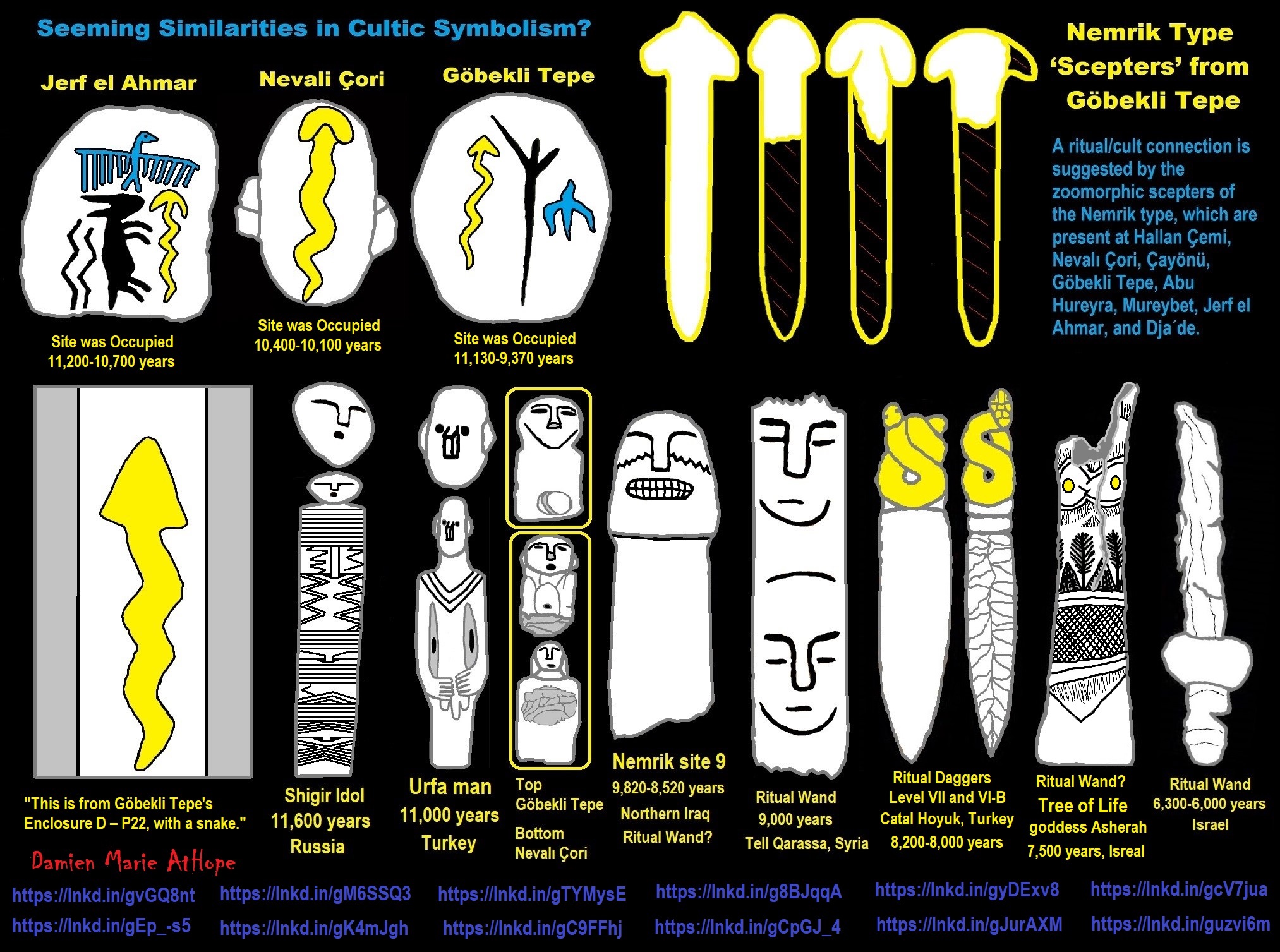
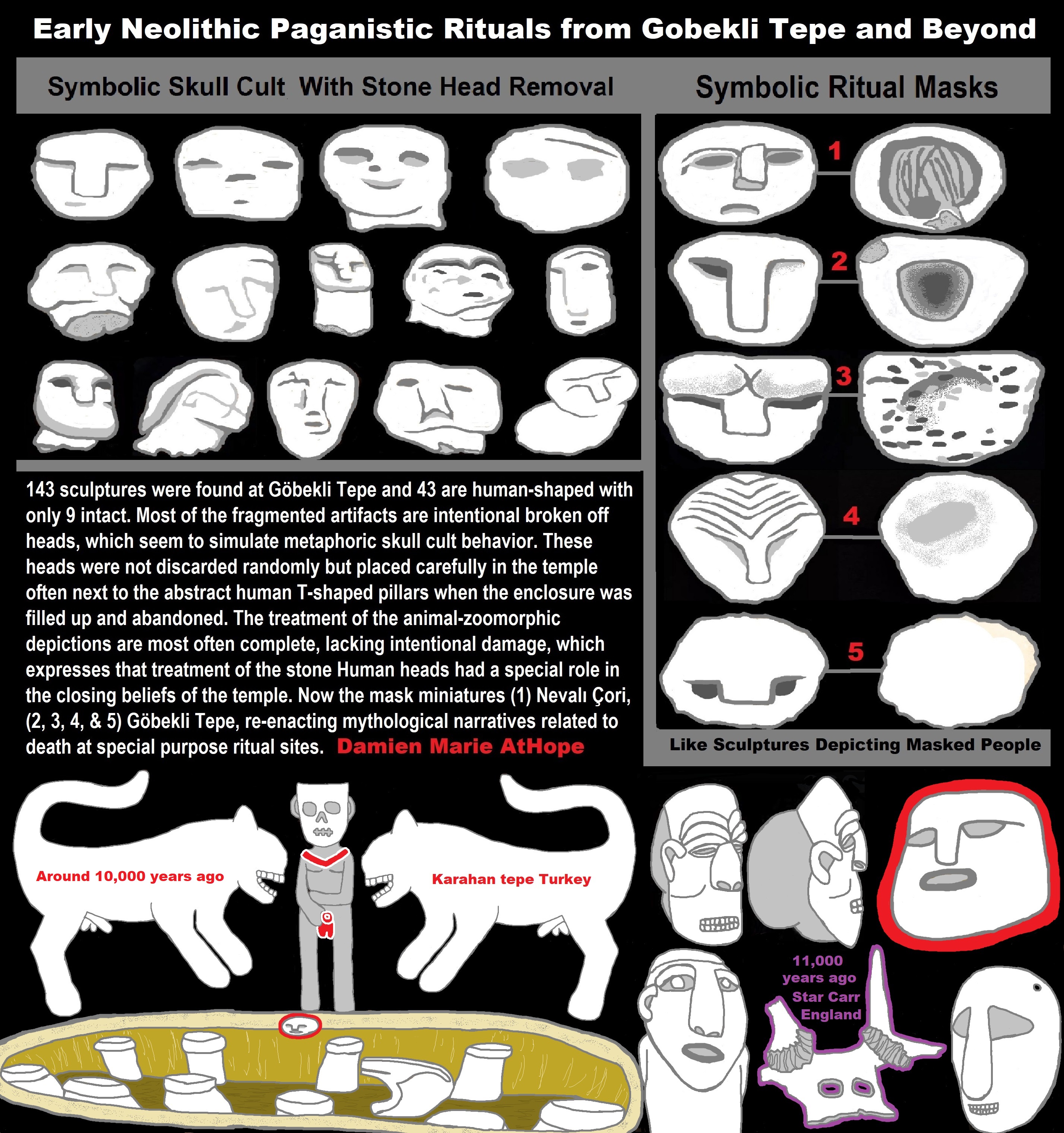
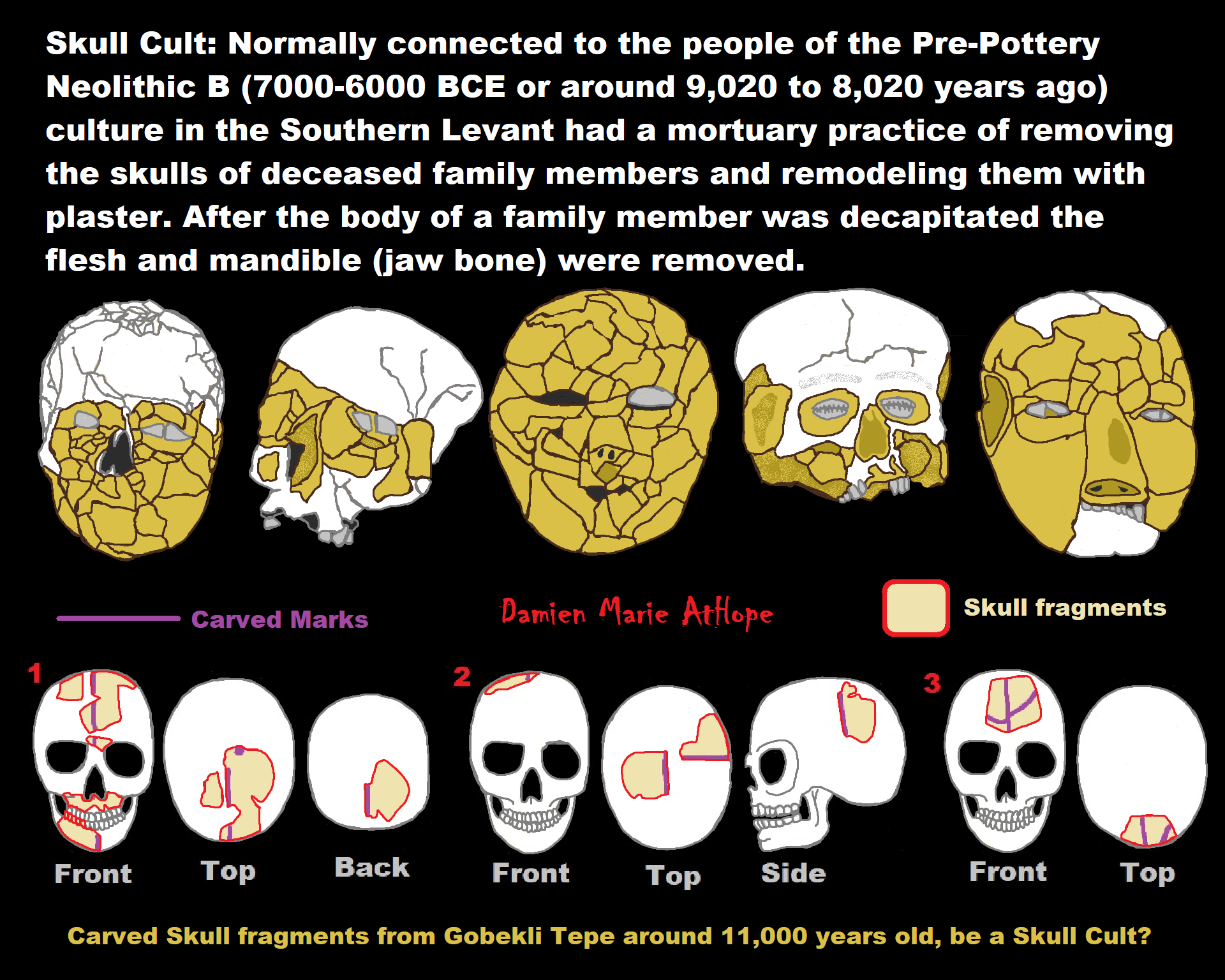
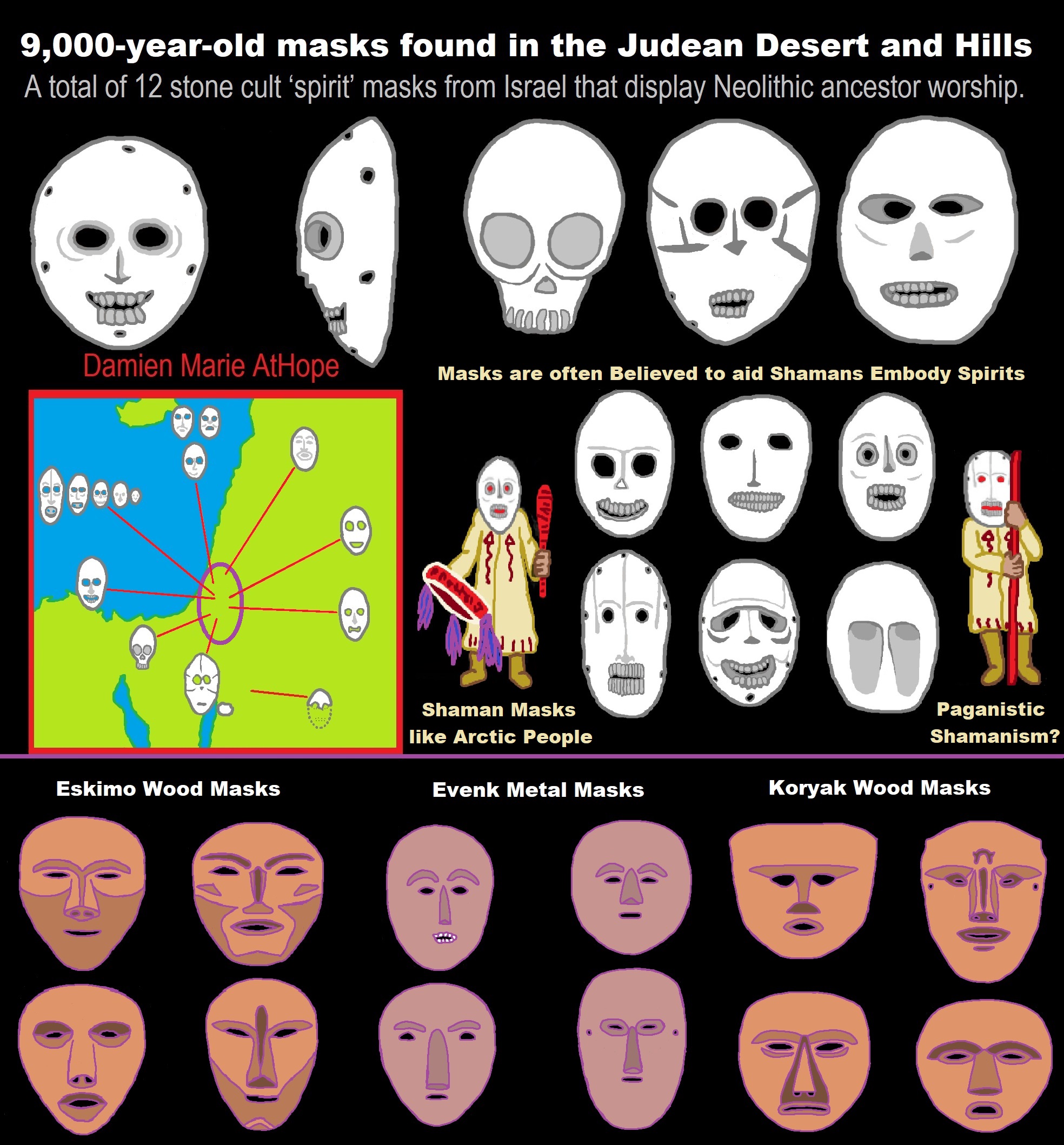

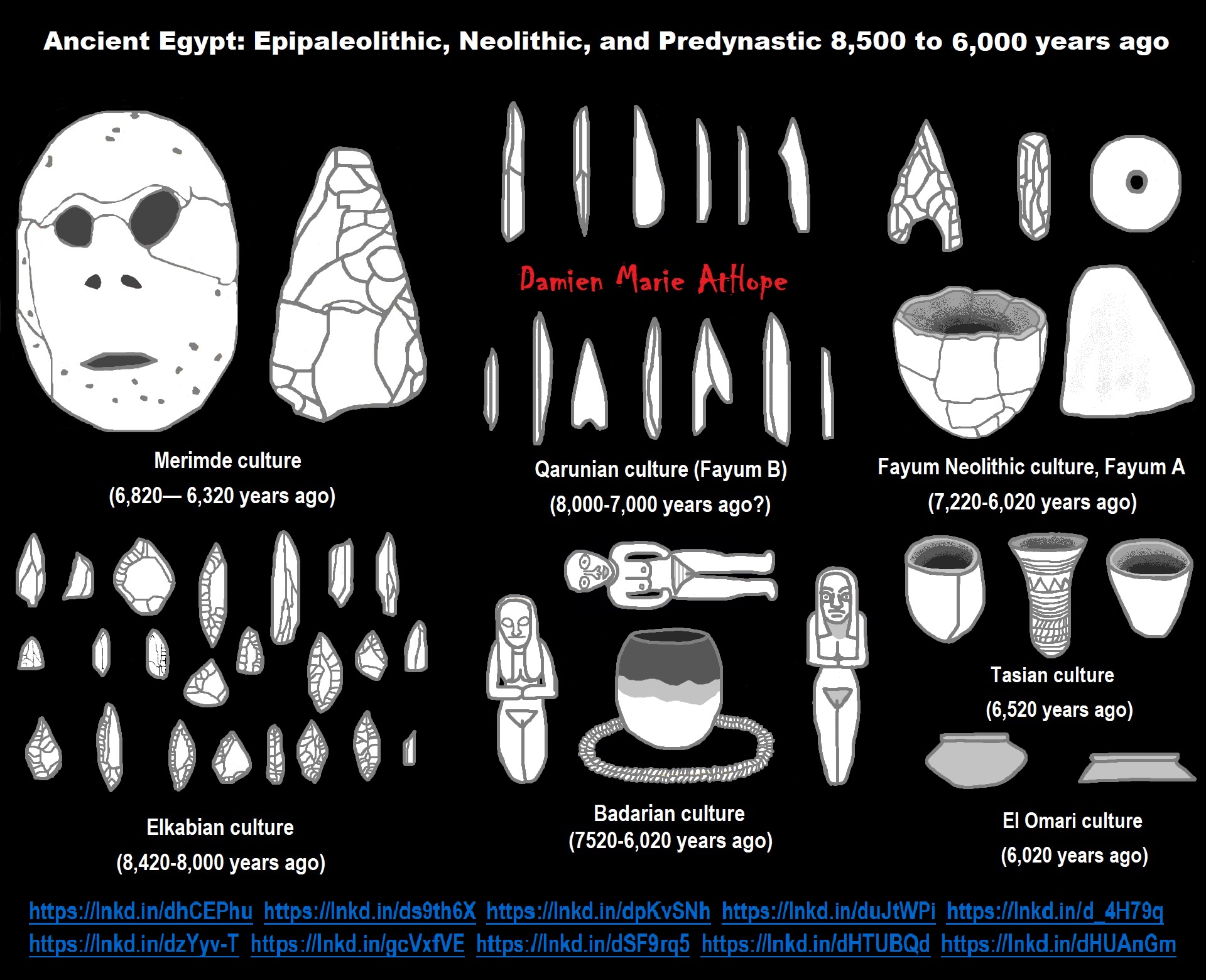
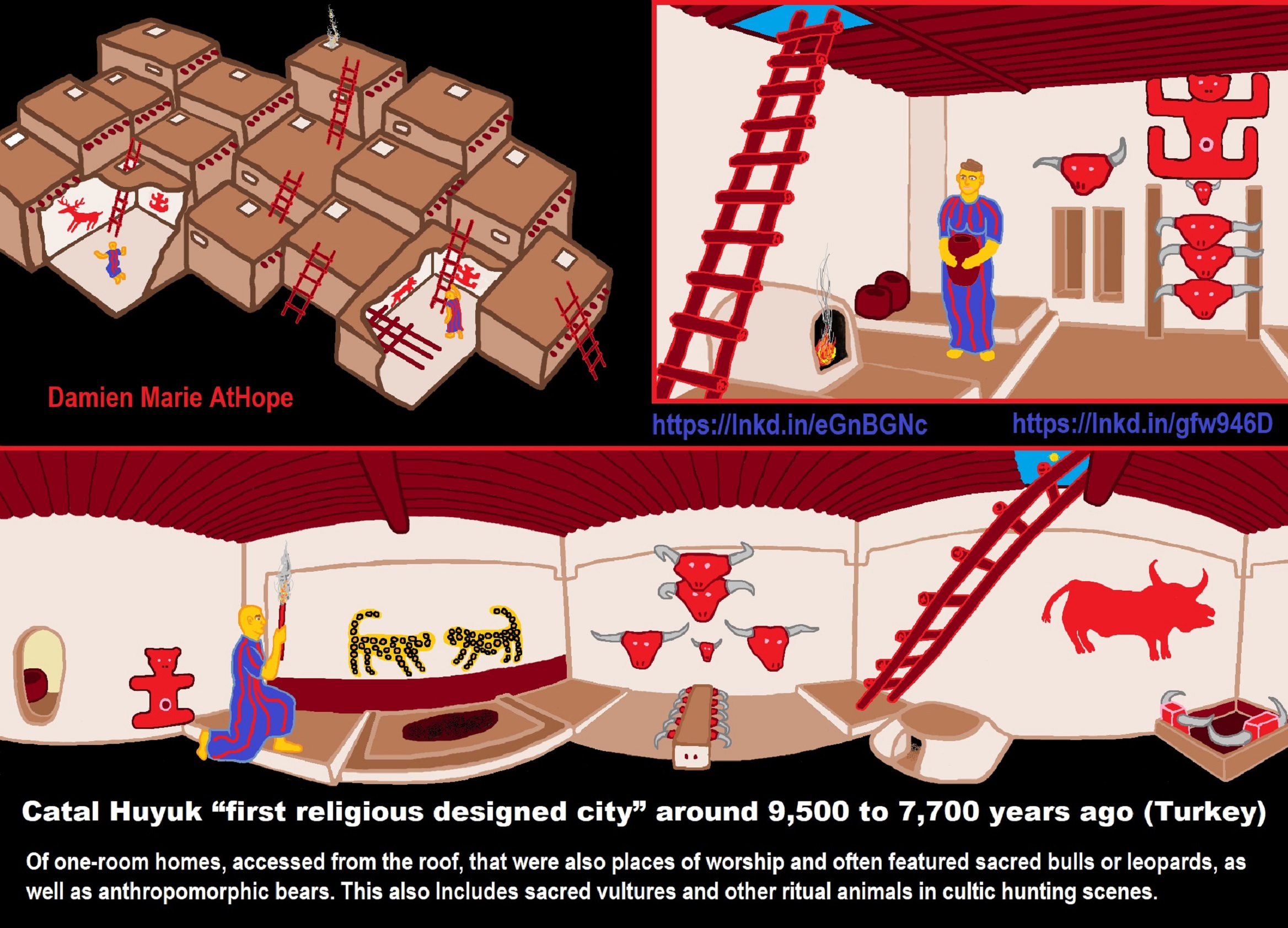
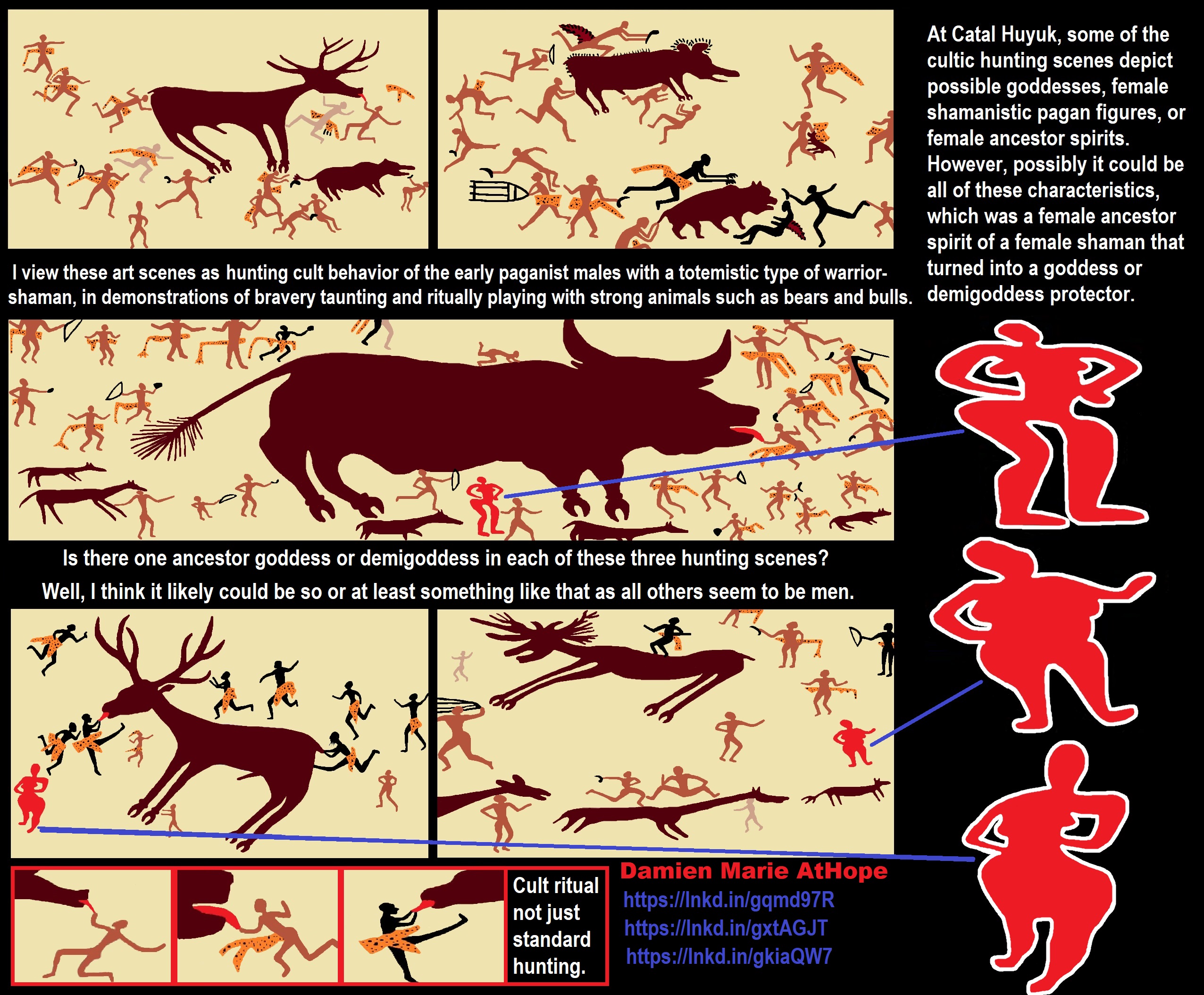


Seated Woman of Çatalhöyük
“The Seated Woman of Çatalhöyük (also Çatal Höyük) is a baked-clay, nude female form, seated between feline-headed arm-rests. It is generally thought to depict a corpulent and fertile Mother goddess in the process of giving birth while seated on her throne, which has two hand rests in the form of feline (lioness, leopard, or panther) heads in a Mistress of Animals motif. The statuette, one of several iconographically similar ones found at the site, is associated to other corpulent prehistoric goddess figures, of which the most famous is the Venus of Willendorf. It is a neolithic sculpture shaped by an unknown artist, and was completed in approximately 6000 BCE.” ref
Kubaba
“Kubaba is the only queen on the Sumerian King List, which states she reigned for 100 years – roughly in the Early Dynastic III period (ca. 2500–2330 BCE) of Sumerian history. A connection between her and a goddess known from Hurro–Hittite and later Luwian sources cannot be established on the account of spatial and temporal differences. Kubaba is one of very few women to have ever ruled in their own right in Mesopotamian history. Most versions of the king list place her alone in her own dynasty, the 3rd Dynasty of Kish, following the defeat of Sharrumiter of Mari, but other versions combine her with the 4th dynasty, that followed the primacy of the king of Akshak. Before becoming monarch, the king list says she was an alewife, brewess or brewster, terms for a woman who brewed alcohol.” ref
“Kubaba was a Syrian goddess associated particularly closely with Alalakh and Carchemish. She was adopted into the Hurrian and Hittite pantheons as well. After the fall of the Hittite empire, she continued to be venerated by Luwians. A connection between her and the similarly named legendary Sumerian queen Kubaba of Kish, while commonly proposed, cannot be established due to spatial and temporal differences. Emmanuel Laroche proposed in 1960 that Kubaba and Cybele were one and the same. This view is supported by Mark Munn, who argues that the Phrygian name Kybele developed from Lydian adjective kuvavli, first changed into kubabli and then simplified into kuballi, and finally kubelli. However, such an adjective is a purely speculative construction.” ref
Cybele
“Cybele (Phrygian: “Kubileya/Kubeleya Mother”, perhaps “Mountain Mother”) is an Anatolian mother goddess; she may have a possible forerunner in the earliest neolithic at Çatalhöyük, where statues of plump women, sometimes sitting, have been found in excavations. Phrygia‘s only known goddess, she was probably its national deity. Greek colonists in Asia Minor adopted and adapted her Phrygian cult and spread it to mainland Greece and to the more distant western Greek colonies around the 6th century BCE. In Greece, Cybele met with a mixed reception. She became partially assimilated to aspects of the Earth-goddess Gaia, of her possibly Minoan equivalent Rhea, and of the harvest–mother goddess Demeter. Some city-states, notably Athens, evoked her as a protector, but her most celebrated Greek rites and processions show her as an essentially foreign, exotic mystery-goddess who arrives in a lion-drawn chariot to the accompaniment of wild music, wine, and a disorderly, ecstatic following.” ref
“Uniquely in Greek religion, she had a eunuch mendicant priesthood. Many of her Greek cults included rites to a divine Phrygian castrate shepherd-consort Attis, who was probably a Greek invention. In Greece, Cybele became associated with mountains, town and city walls, fertile nature, and wild animals, especially lions. In Rome, Cybele became known as Magna Mater (“Great Mother”). The Roman State adopted and developed a particular form of her cult after the Sibylline oracle in 205 BCE recommended her conscription as a key religious ally in Rome’s second war against Carthage (218 to 201 BCE). Roman mythographers reinvented her as a Trojan goddess, and thus an ancestral goddess of the Roman people by way of the Trojan prince Aeneas. As Rome eventually established hegemony over the Mediterranean world, Romanized forms of Cybele’s cults spread throughout Rome’s empire. Greek and Roman writers debated and disputed the meaning and morality of her cults and priesthoods, which remain controversial subjects in modern scholarship.” ref

There are other clothing resembling miniskirts that have been identified by archaeologists and historians as far back as 3,390–3,370 years ago. But this is much older. ref
Leopard claw-bone pendant from the Possible Woman Shaman/Priestess burial with the plastered and painted woman’s head in her arms that is several generations removed. She was buried under the floor of the history house (house with multiple burials beyond that of the connected family) with the twin facing leopards at Catal Huyuk. Ref
“From about 7500 B.C.E to 5700 B.C.E., early farmers grew wheat, barley, and peas, and raised sheep, goats, and cattle. At its height, some 10,000 people lived there. Among its more noteworthy features, Çatalhöyük’s inhabitants were obsessed with plaster, lining their walls with it, using it as a canvas for artwork, and even coating the skulls of their dead to recreate the lifelike countenances of their loved ones.” ref
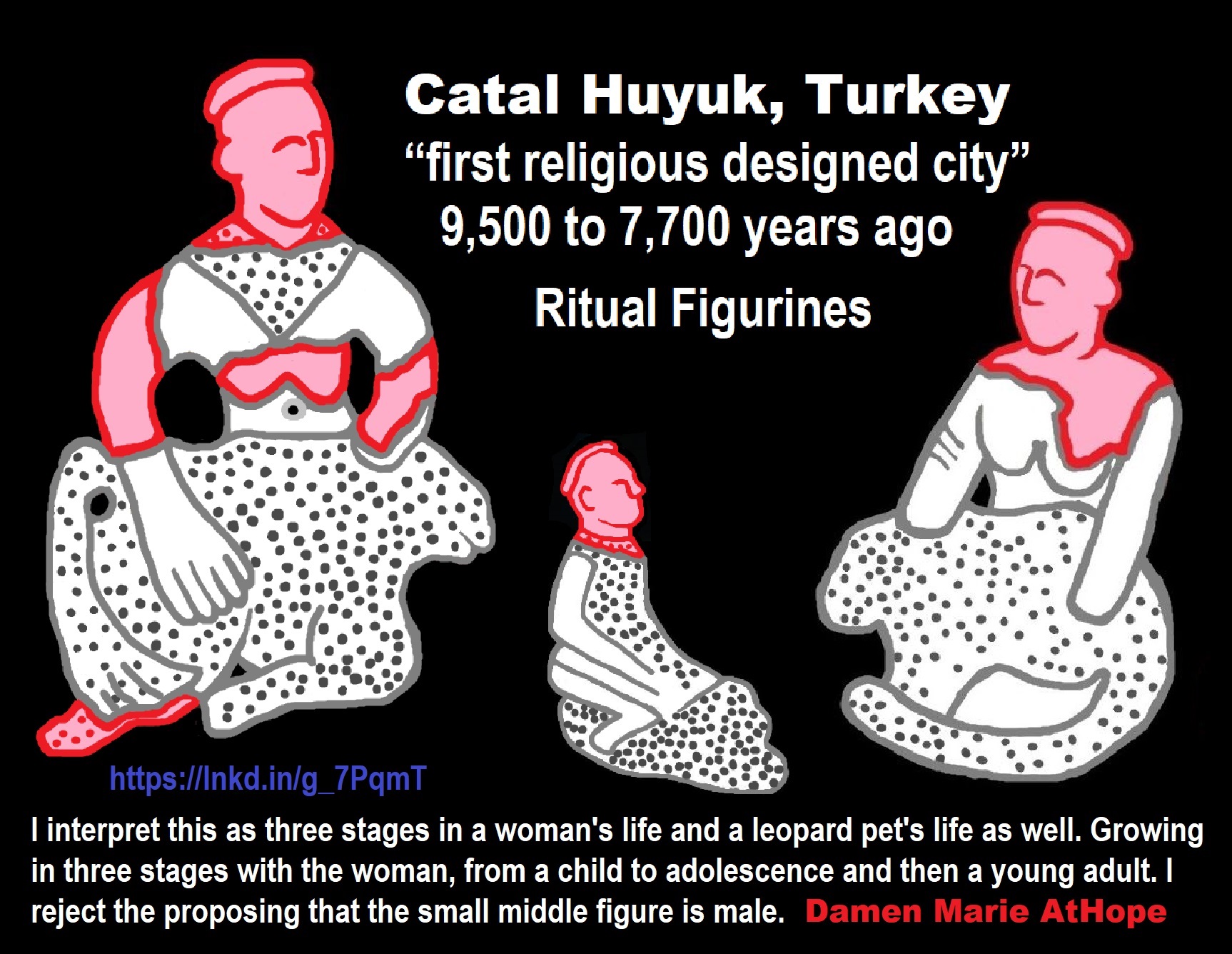
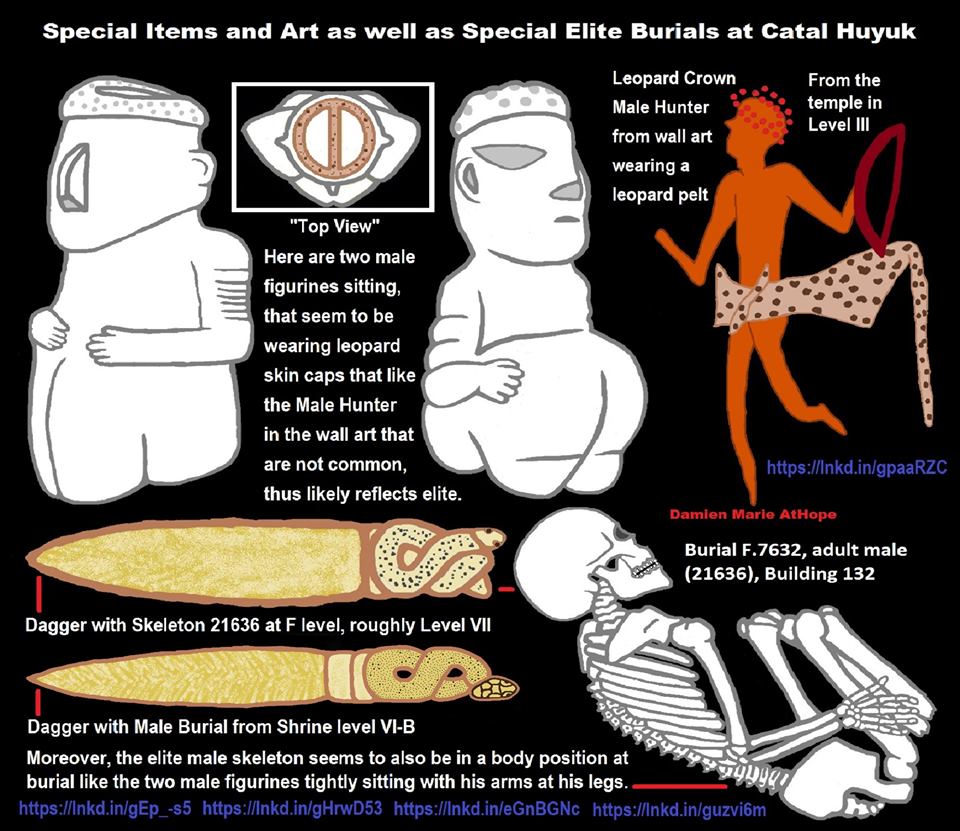
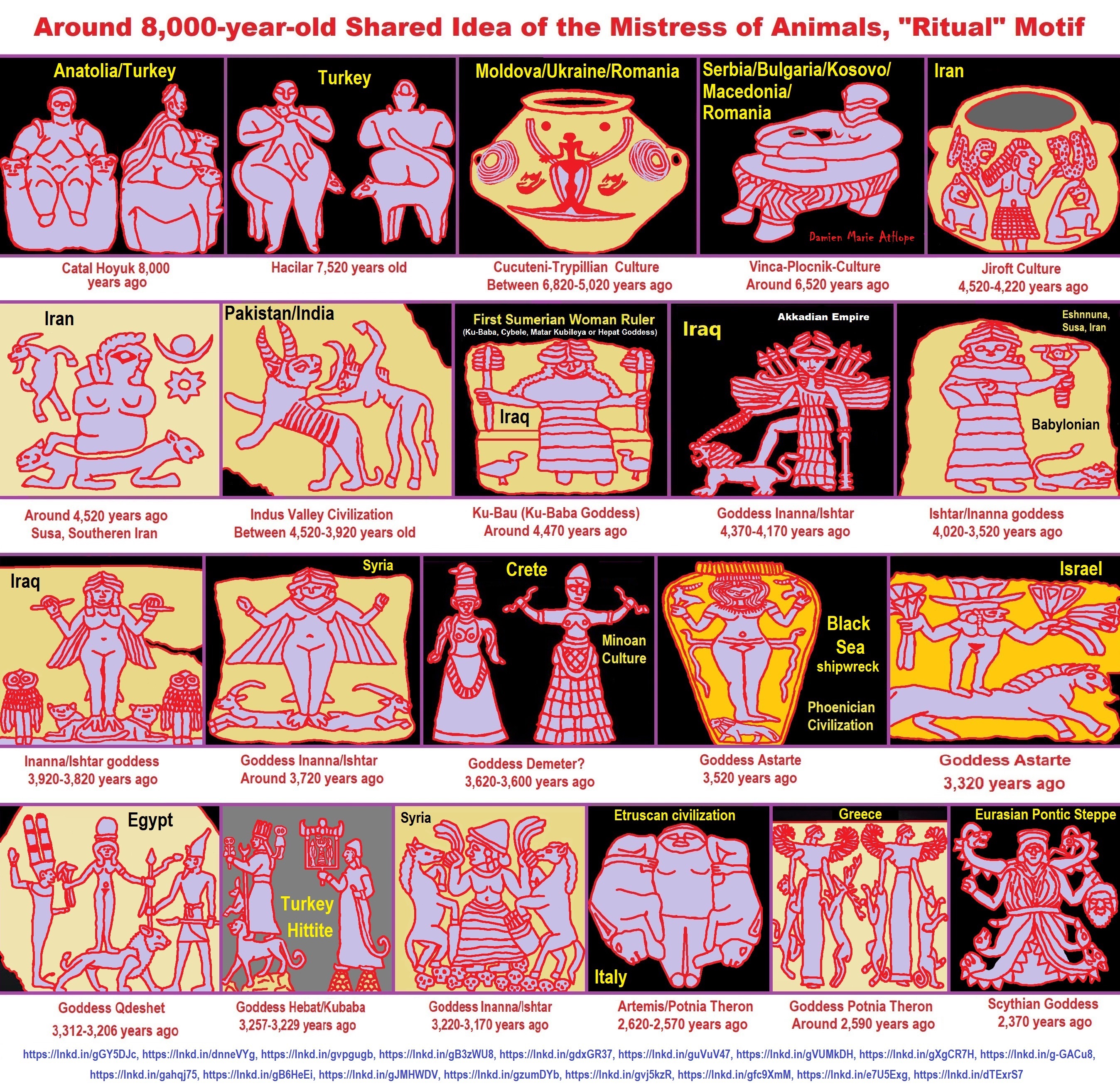
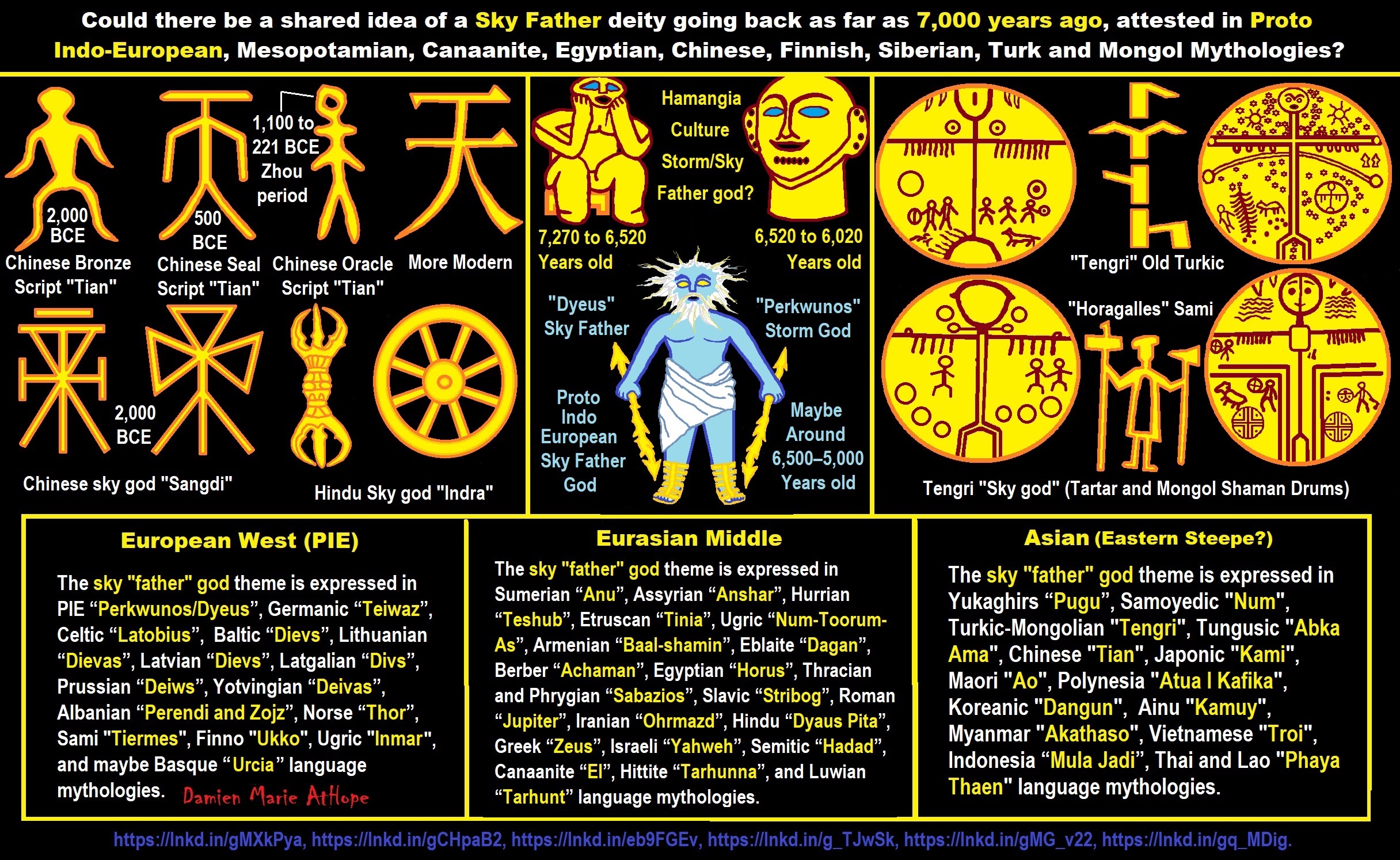


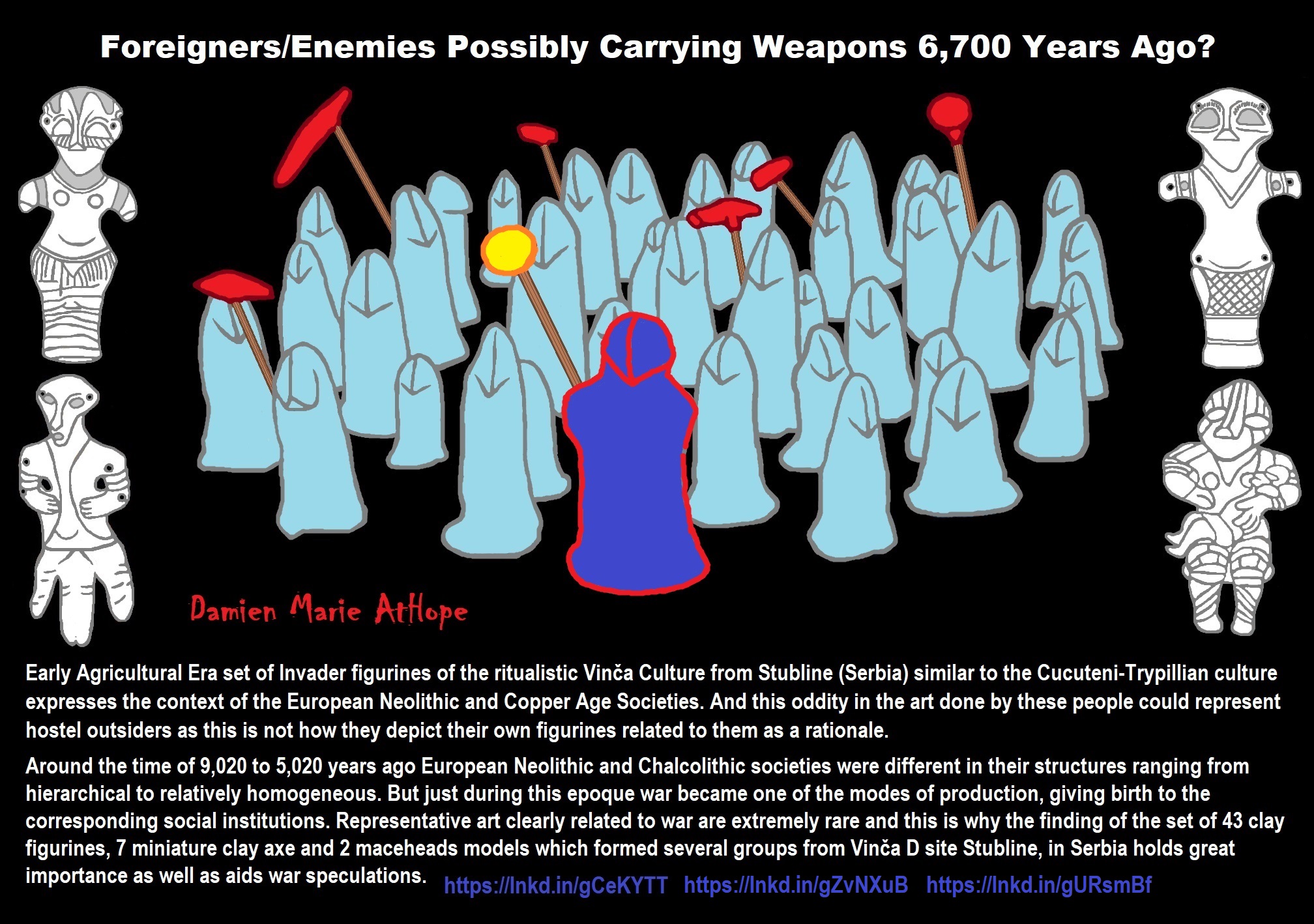

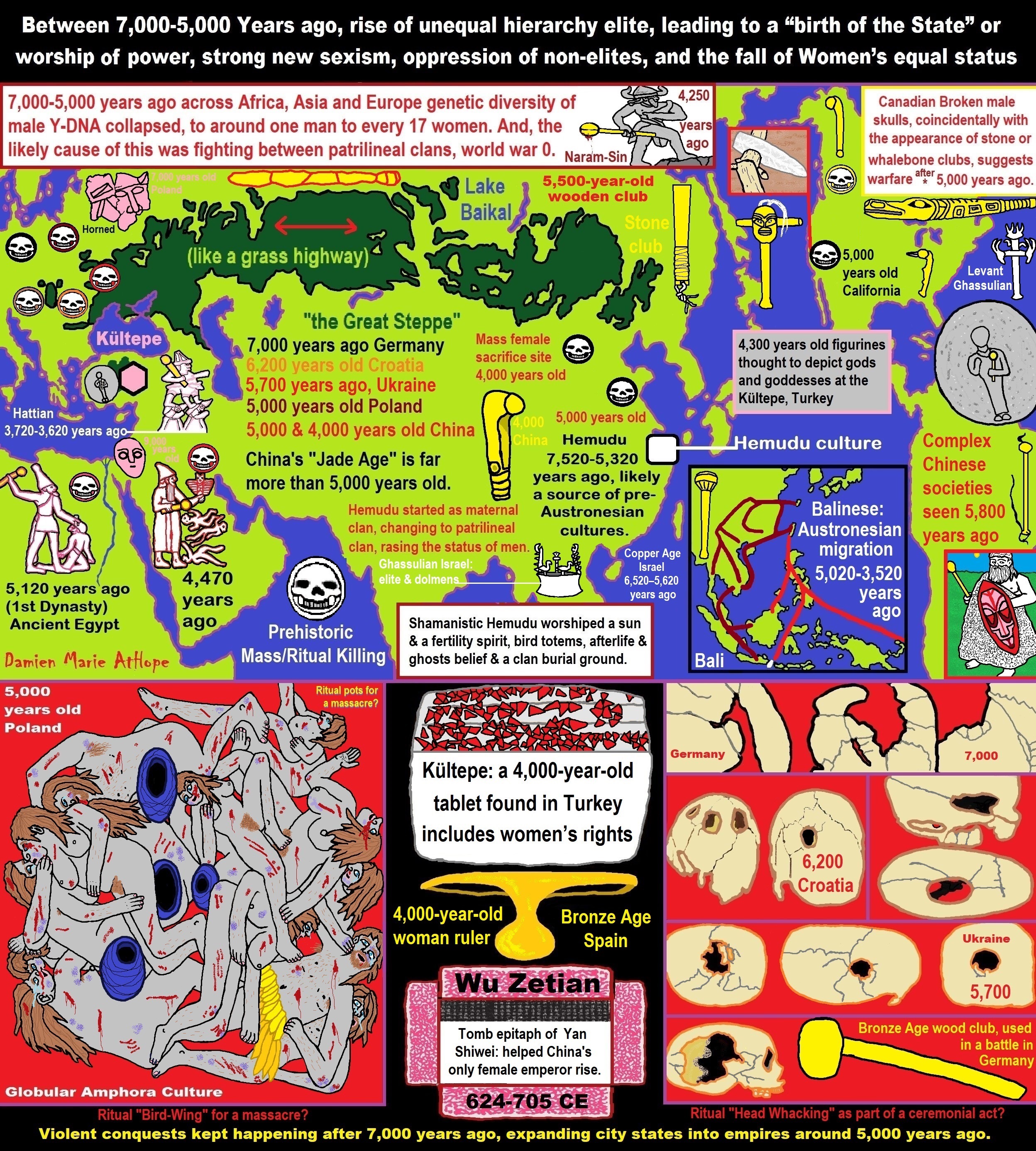
ref, ref, ref, ref, ref, ref, ref, ref, ref, ref, ref, ref, ref, ref, ref, ref, ref, ref, ref, ref, ref, ref, ref, ref, ref, ref, ref, ref, ref, ref, ref, ref, ref, ref, ref, ref, ref, ref, ref, ref, ref, ref, ref, ref, ref, ref, ref, ref, ref, ref, ref, ref, ref, ref, ref, ref, ref, ref, ref, ref, ref, ref, ref, ref, ref, ref, ref, ref, ref, ref, ref, ref, ref, ref, ref, ref, ref, ref, ref, ref, ref, ref, ref, ref, ref, ref, ref, ref, ref, ref
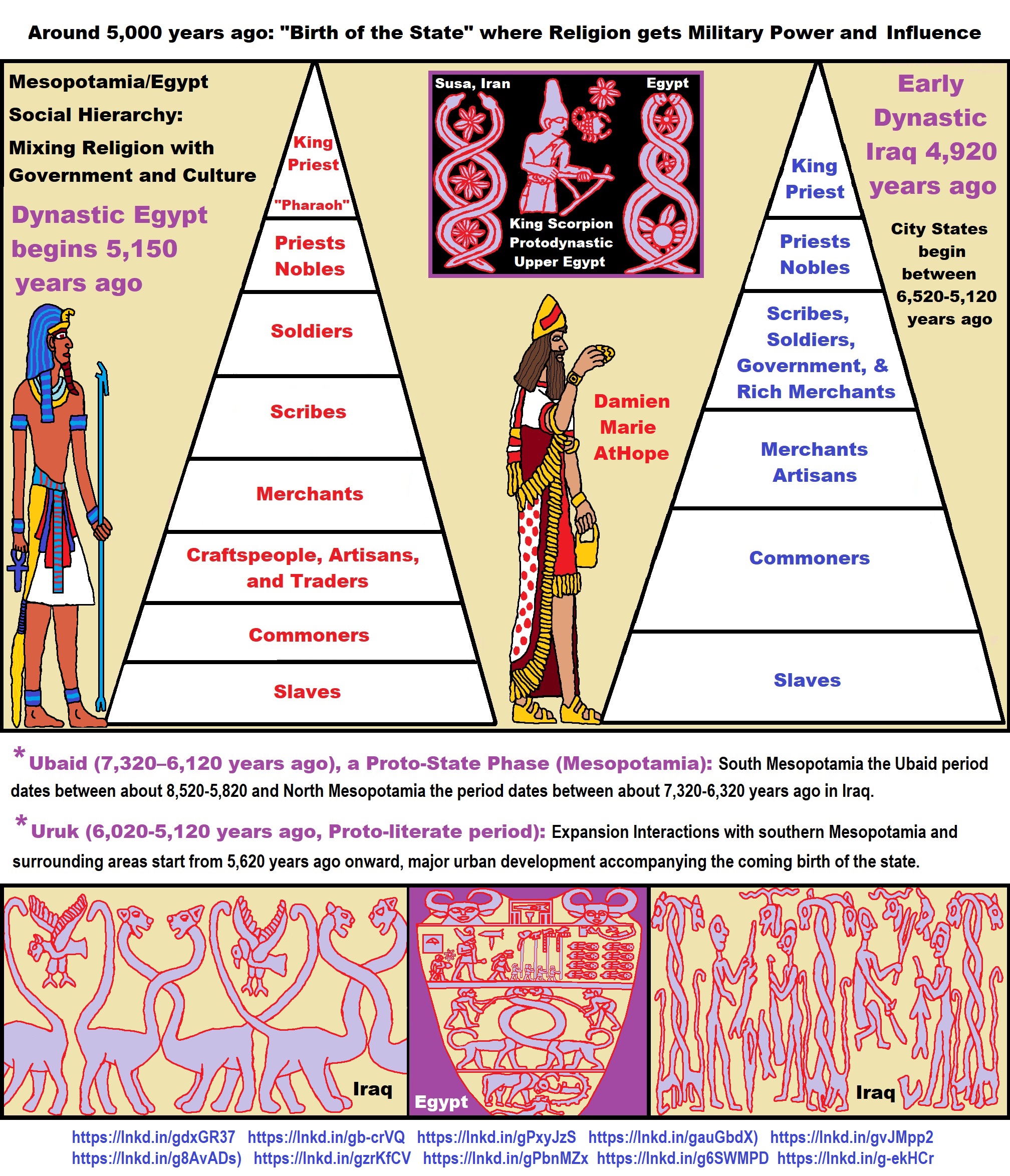
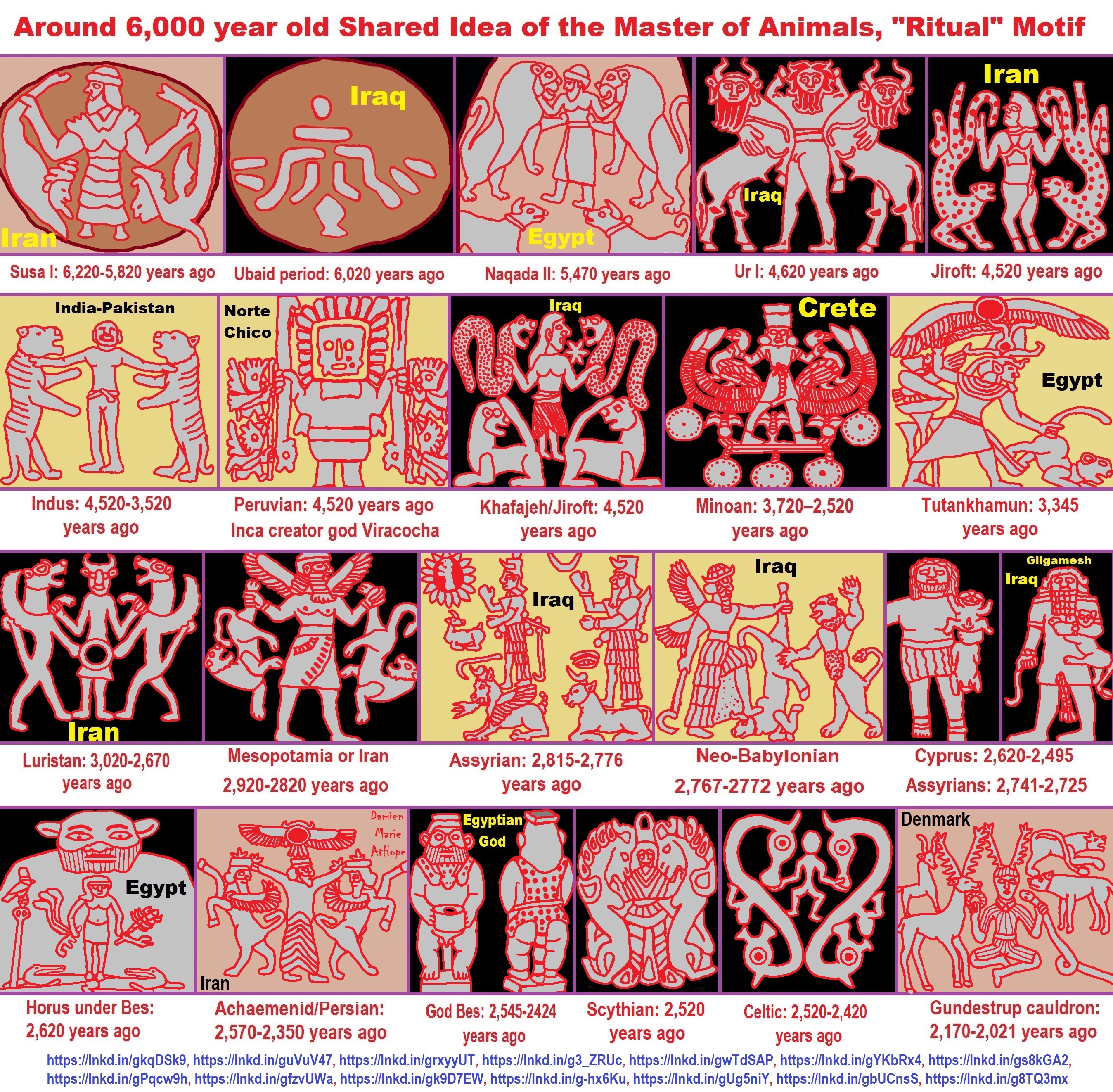
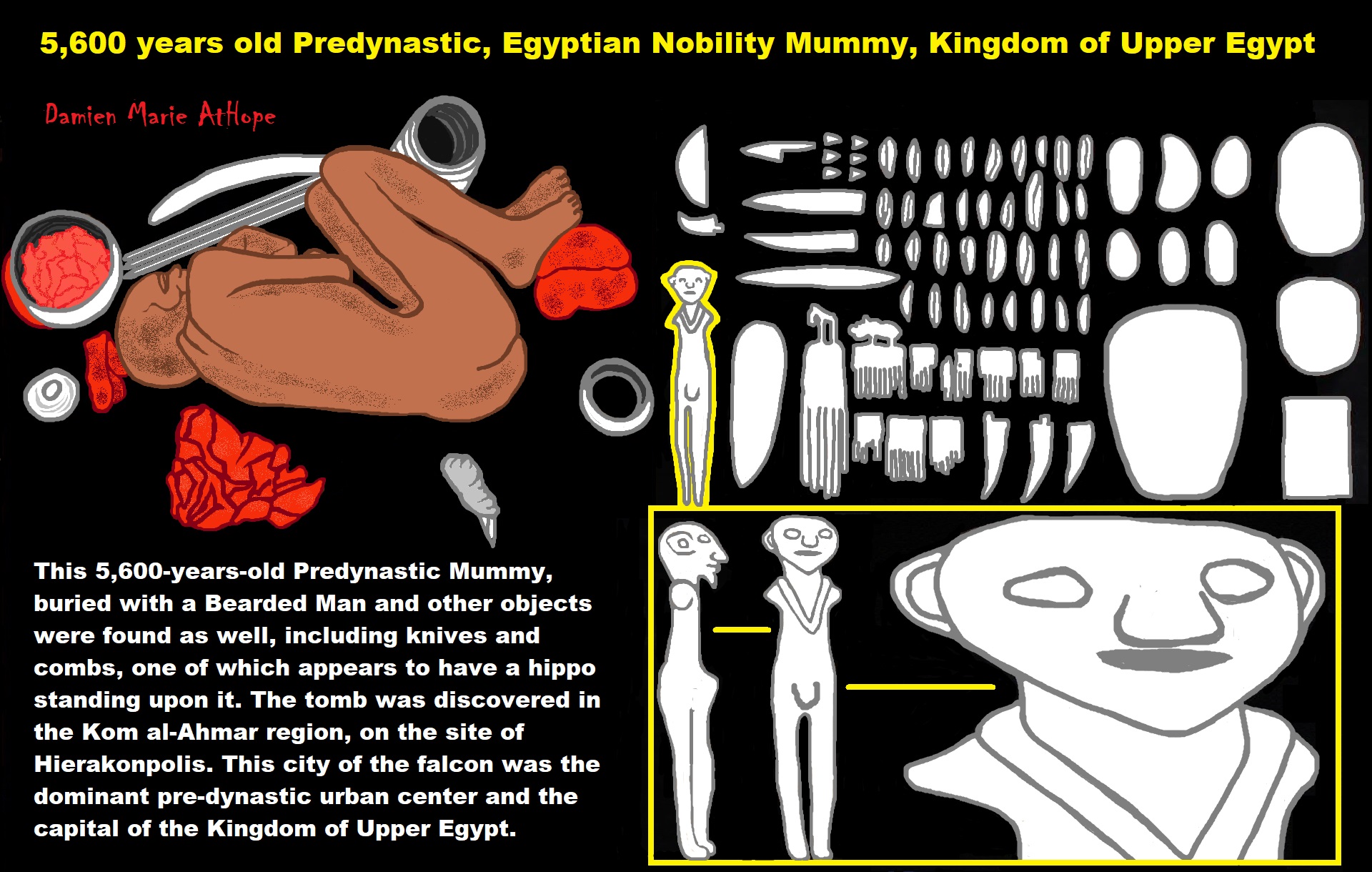
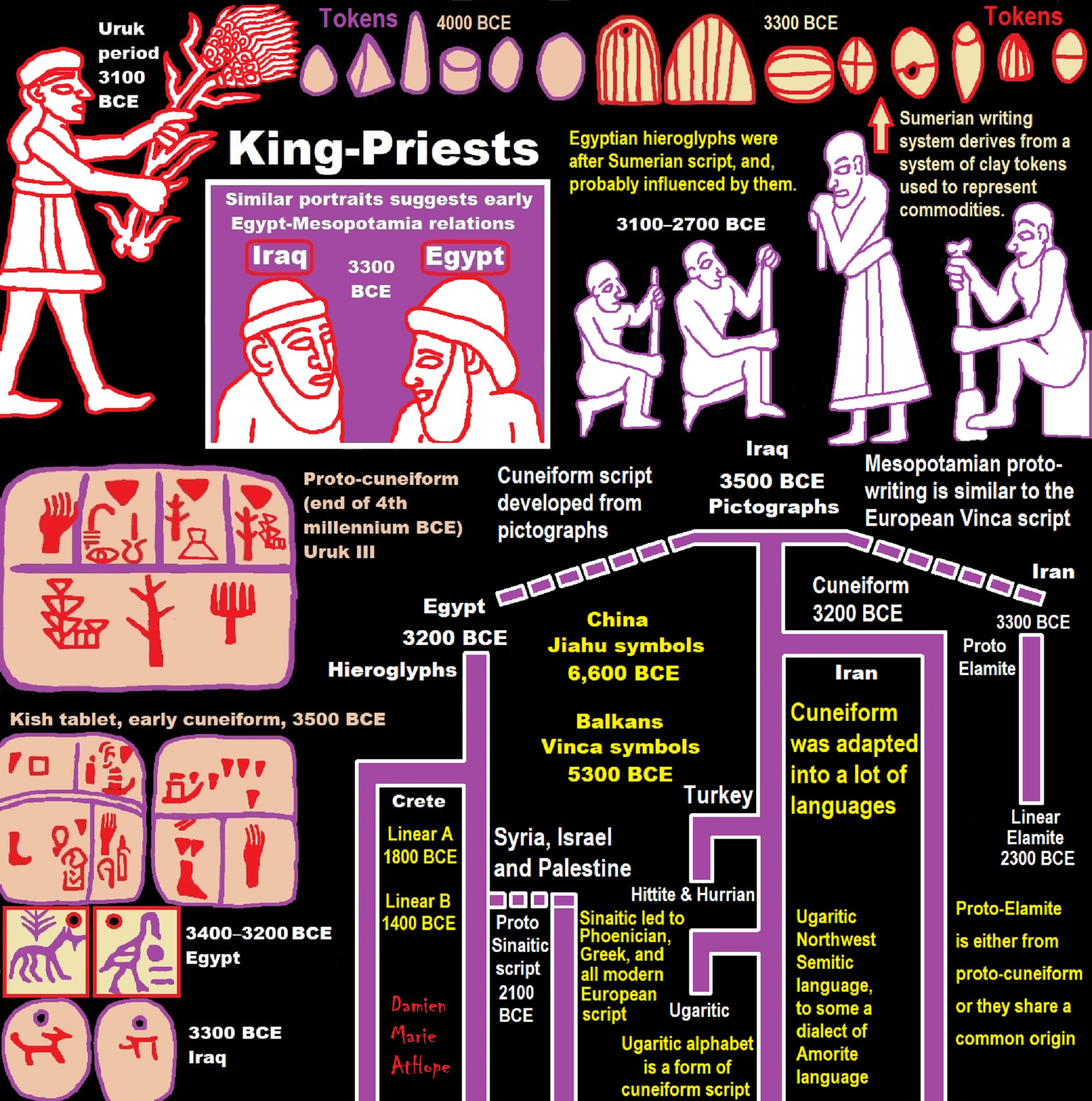
First Patriarchy: Split of Women’s Status around 12,000 years ago
& First Hierarchy: fall of Women’s Status around 5,000 years ago.
12,000 Years old Birth of the Sexualized Fertility Goddess Archetype,
The rise of Patriarchy, and the Split of Women’s Status
To me, the possibility of goddess symbolism as well as the beginnings of patriarchy which may go as far back as around 12,000 years ago as a point leading to its beginning. And yet the first written establishment of women’s rights is around 4,000 years ago and at the same time, from around 12,000 years ago women who were somewhat respected or in admiration (such as shamans) and existed in relative egalitarianism in general but this began to change and began to increasingly not be seen as special or magical but as an object, since animals were being domesticated and humans started understanding birthing women in a general way started to be seen as an object to domesticate with the beginnings of patriarchy. At this time, it seems the female goddess figurines/archetypes/avatars are seen to split into two different personalities: Good girl (most of them) and Bad girl (especially later in India), domesticated and undomesticated. Most archetype of sexualized fertility goddess symbolism or features seem to be that of the domestic woman and only a few are the undomesticated highly sexualized and highly powerful, from the extremes of feminism to highly promiscuous. Around 13,000 years ago, most likely all goddesses originate but the domesticated one may have originated thousands of years ago with all the venus figurines that go why back to the beginnings of human totemistic religion expression presumably the venus of Hohle Fels dated to between around 40,000 to 35,000 years ago though it is likely more akin to an artifact of hunting magic, a spirit or ancestor who knows. Although some of those figurines could have been seen as toys or for some other unknown reason, however, the difference around 12,000 years ago, a new and very non-toy like set of images and figurines were found that are highly sexualize and seems more like pornography instead toys for children. Moreover, around 12,000 years ago there seems to be increased development of fertility cults and the beginnings of the birth/sex goddess paganistic symbolism. There seemed to be many of the “bad girl/undomesticated woman” expressed in lajja gauri/sheila-na-gig styles of sexualized fertility cult goddesses, which are similar as well as recurring and seemingly both connected and disconnected to the mother goddess religious beliefs or religious beliefs.
Shaktism cults are connected to the early depictions of lajja gauri found on Indus Valley seals. The Indus/ Harappan script dates to between around 5,500 to 3,900 years ago. Shaktism (doctrine of the goddess) is a major tradition of hinduism female is considered to comprise metaphysical reality and the goddess is supreme and includes a variety of goddesses, all considered aspects of the same supreme goddess. Shaktism’s goddesses evolved more adding to its pantheon of goddesses after the decline of buddhism in India, wherein hindu and buddhist goddesses were combined to form the Mahavidya, a list of ten goddesses. Shaktism encompasses a nearly endless variety of beliefs and practices from primitive animism to the philosophical paganistic seeking to access the Shakti (divine energy) considered to comprise metaphysical reality of the goddesses’ nature. Similar ideas to the shaktism religious thinking is found in Jainism (vidya and shasana devis), in buddhism (tantric buddhism), in sikhism (Shakta goddesses, particularly chandi seen as a fierce warrior) and I am not trying to say that lajja gauri or Shaktism where at the beginning from around 12,000 years ago, just they offer a similar frame of reference to add in conceptual understanding of the ideas involved in this early expression of ritualistic/cultural behaviors in relation to the possibility of the beginnings of patriarchy. This archetype of sexualized fertility goddess seems to embody other goddesses, she has a sexualized aspect, but she can be a mother or warrior too. However, it is how she is different from the others, not just mothers, protectors, or leaders, this goddess is associated with abundance and fertility involving erotic pleasure and sexual intercourse. Furthermore, this goddess archetype’s artistic representations, most often, involves a nude fertility cult goddess/ancestor/spirit who offers herself with her legs apart and a prominent available vulva (presumably for sex but for some berthing could also apply.
Further, most fertility goddesses the world over are not completely similar but many are shown as headless, faceless and some are even dead faced, while giving prominent focus to the genitals. Here are a few possible ideas to explain why a female/goddess figurine would be headless, faceless or dead faced. One reason is there where totemistic objects referencing a spirit, force of nature (such as fertility), or clan ancestor/shaman that where are in time went on seen as something to control, domesticate and dominate and thus females became generally seen as just objects. Another reason is that it could have ties with the skull cult, which saw removing the head as removing the essence of the person. Therefore, the fact that a goddess would be represented without a head or face could symbolize she was not human or a dead human. This archetype of sexualized fertility goddess as times is displayed with arms bent, usually upwards, which could be seen as connecting bull’s horns or expressing moon cycles. After 12,000 years ago paganism likely gets polytheism where this style of archetype of sexualized fertility goddess seems to split some from the mother/birth goddess cult. She starts off as looking female then becomes more stylize and symbolic in some regions such as a frog as well as a symbol; such as a swastika or is expressed more sexualized and has been sometimes interpreted as the creator deity and the oldest representation in some countries.
Though the swastika archetype is not always an archetype sexualized fertility goddess representation, its origins are interconnected with this archetype and other female deities and animal spirits as far back as 12,000 years ago in Mezin, Ukraine and likely used as a type of magic in rituals. The four arms of the swastika may represent the four 4 aspects of nature: sun/fire, wind, water, or soil, the four seasons, or crude symbolized lunar crescent calendar which is similar to the lunar crescent that is common later in islam. The jewish/kabbalah “star of David” hexagram has been used, without identifying a male, to represent a jewish mystical concept which is why it is thought to originate as a symbol of a calendar system, representing the 12 months of a year. The first archetype sexualized fertility goddess, as a swastika reference, seems clearer in a 9,000 years old green frog goddess swastika pendent from the Balkans. Around 7,500 to 6,800 years ago in northern Mesopotamia/Iraq and in the Hassuna-Samarra of the north and east Fertile Crescent where the swastika archetype is depicted on pottery as four goddesses or four animals.
The archetype of sexualized fertility goddess was found as a 12,000 years old carving on a rock floor at Gobekli Tepe Turkey, around 9,000 to 8,000 years old represented wall figures at Catal Huyuk, Turkey, around 9,000 years old clay figurine at Hacilar, Turkey, around 8,300 years old figurine in Greece, around 8,300 to 8,000 years old figurine in Serbia, around 6,600 to 6,500 years old stone pendent in Macedonia, around 6,000 years old figurine and pottery art in China, around 5,000 years old rock carving in Croatia, around 5,000 years old rock art in Philippines, around 5,000 years old figures, statues, carvings, paintings, and textiles in India, and around 4,000 years old gold figures and a gold seal in Turkmenistan just to stylistically reference but a few archetype of sexualized fertility goddesses. After 4,000 years, there are many countries and/or cultures around the world with similar archetype of sexualized fertility style goddess designs or connected hidden symbolic iconography such as a swastika archetype used by Sumerians, Mediterranean, and Indus Valley Civilization as well as the Turkey, India, Iran, Armenia, Nepal, China, Japan, Korea, and Europe. This symbolism was most widely used by hindus, jainas, buddhists, and Celtic as brigit’s cross for the Celtic goddess brigit, also used by wiccans. For some, there is a distinction between right-hand “clockwise” swastikas and left-hand “counterclockwise” swastikas or sauvastikas, which stands for goddess, and magical practices. The right-hand swastika is considered a solar symbol or sun cross, whereas the left-hand swastika often represents the goddess lakshmi “wellbeing” or goddess kali, both positive and aggressive.
5,500 Years old birth of the State, the rise of Hierarchy, and the fall of Women’s status
Ps. Progressed organized religion, to me, starts approximately 5,000-year-old belief system)
Women were much more prominent in religion before 5,500. There is what is believed to be a female shaman burial with a matching carved ivory female head belonging to the Pavlovian culture 29,000 to 25,000 a variant of the Gravettian/(Gravettian culture 33,000 to 22,000 years ago), dated to 29,000 to 25,000-years old Dolní Vestonice, Moravia, Czech Republic. A carved ivory figure in the shape of a female head was discovered near the huts. The left side of the figure’s face was distorted image is believed to be a description of elder female’s burial around 40 years old, she was ritualistically placed beneath a pair of mammoth scapulae, one leaning against the other. Surprisingly, the left side of the skull was disfigured in the same manner as the aforementioned carved ivory figure, indicating that the figure was an intentional depiction of this specific individual. The bones and the earth surrounding the body contained traces of red ocher, a flint spearhead had been placed near the skull, and one hand held the body of a fox. This evidence suggests that this was the burial site of a shaman. This is the oldest site not only of ceramic figurines and artistic portraiture but also of evidence of early female shamans. Archaeologists usually describe two regional variants: the western Gravettian, known namely from cave sites in France, Spain and Britain, and the eastern Gravettian in Central Europe and Russia. The eastern Gravettians — they include the Pavlovian culture — were specialized mammoth hunters, whose remains are usually found not in caves but in open air sites. The origins of the Gravettian people are not clear, they seem to appear simultaneously all over Europe. Though they carried distinct genetic signatures, the Gravettians and Aurignacians before them were descended from the same ancient founder population. According to genetic data, 37,000 years ago, all Europeans can be traced back to a single ‘founding population’ that made it through the last ice age. Furthermore, the so-called founding fathers were part of the Aurignacian culture which was displaced by another group of early humans members of the Gravettian culture. Between 37,000 years ago and 14,000 years ago, different groups of Europeans were descended from a single founder population. To a greater extent than their Aurignacian predecessors, they are known for their Venus figurines. ref ref, ref, ref
5,500 -3,000 Years Ago – (Egypt), found nude badarian cultural artifact Female figurine with bird traits as well as her arms are raised as either she is flying or her arms are a bull’s horns. Could this be a representation of Nut a nude goddess of the sky who depicted as having bird arms or a bull. She was the sky and a symbol of protecting the dead when they enter the afterlife. Moreover, among her jobs was to envelop and protect Ra sun god as well as re-birthing of Ra every morning. about 5,200–5,000 years ago there is more elaborate grave goods in burials and there is writing. Predynastic Period— the Naqada culture— derives its name from the site of Naqada, in Upper Egypt with a vast cemetery of more than 3,000 graves with an unusual nature compared with those previously known in Egypt, humble burials consisted of little more than the body of the deceased in foetal position, wrapped in an animal skin, sometimes covered by a mat, and most often deposited in a simple pit hollowed out of the sand. None of the offerings accompanying the deceased corresponded to the usual hallmarks of pharaonic civilization, pottery vessels of black-topped polished red ware, zoomorphic schist palettes, combs and spoons of bone or ivory, and flint knives and other artefacts. The first Naqada phase (Amratian) lies between 6,000 and 5,500 years ago, followed by the second phase (Gerzean), from 5,500 to 5,200 years ago, and the final Predynastic phase runs from 5,200 to 5,000 years ago. several thousand Predynastic graves between them (15,000 for the whole Predynastic Period). Naqada III extended all over Egypt and was characterized by some notable firsts: The first hieroglyphs, The first graphical narratives on palettes, & The first truly royal cemeteries.
The Amratian 6,000 to 5,500 years ago is not different from the earlier Badarian possibly around 7,000 years ago flourishing around 6,400 to 6,000 years ago. The burial rituals and the grave goods that both may share a connection. In general, the Amratian dead were buried in simple oval pits in a contracted position, lying on the left side with the head pointing south, looking towards the west. A mat was placed on the ground below the deceased, and sometimes the head rested on a pillow of straw or leather. Another mat or the skin of an animal, covered or enclosed the deceased and most covered the offerings. Although simple burials of single individuals were in the majority, multiple burials were also fairly frequent, most notably involving a woman (possibly the mother) and a newborn infant. Compared with the previous period, larger burial places appeared, provided with coffins of wood or earth, and more lavishly equipped. Although plundered, the Amratian tombs of Hierakonpolis are remarkable for their rectangular form and unusual size. In two instances, the inclusion of magnificent disc-shaped porphyry maceheads probably indicates the burials of powerful individuals.
The Amratian culture differs from the Badarian in terms of types of grave goods and consequent signs of hierarchy. Pottery holds white painted designs comprising geometrical, animal, and vegetal motifs seem to be the beginnings of an iconography at the core of pharaonic civilization. Human figures were present into two different types with hunting most prominent, and the second is the victorious warrior. The depiction comprises two human figures among plant motifs; the larger figure, with stalks or plumes fastened in his hair, lifts his arms above his head, while his virility is unequivocally marked by a penis or penis sheath. Interlaced ribbons descending from between his legs may represent decorated cloth. A white line emerges from the larger figure’s chest and wraps around the neck of the second figure, a much smaller person with long hair. A swelling on the back of the smaller figure could represent bound arms suggest conqueror and the vanquished domination appears to be the prototype of traditional scenes of victory in the pharaonic phase.
The graves and the funerary offerings indicate not so much increasing hierarchization as a tendency towards social diversity in the Naqada I culture. The offerings in this period appeared initially to be intended simply to mark the identity of the deceased. It is not until the Naqada II phase 5,500 to 5,200 years ago (and even more so Naqada III) that larger accumulations of funerary artefacts are clearly in evidence. The funerary statuettes are particularly significant. Both men and women are represented standing, more rarely seated, with emphasis on the primary sexual characteristics. Only a few of the thousands of excavated tombs contained such statuettes, and usually they occurred only singly, groups of two or three in one tomb being comparatively rare. The maximum number found in a single burial was a set of sixteen figurines. Based on an analysis of the other offerings, the tombs that contained multiple statuettes were not particularly rich in other respects, and such small sculpted figures were sometimes the sole funerary offering.
The use of copper and flint knives as funerary offerings raises the same kind of question during the Naqada II phase. Found on small throwsticks of carved ivory or on the tips of hippopotamus or elephant tusks, the one repeated feature of these representations is the presence of a triangular beard, often balanced by a sort of ‘phrygian’ cap pierced by a suspension hole. Unlike women, men were no longer being solely identified by their primary sexual characteristics, but by a secondary sexual characteristic and the social status that this conferred on them. The beard was evidently a symbol of power, and, in the form of the ceremonial ‘false beard’, it later became strictly reserved for the chins of kings and gods. Another symbol of power that characterizes the Naqada I phase is the disc-shaped macehead, usually carved from a hard stone, but sometimes also occurring in softer materials such as limestone, terracotta, or even unfired pottery, and cosmetic palettes constituted the item of choice for funerary equipment during the Amratian. These palettes exploded into a diversity of forms, from a simple oval shape, sometimes incised with figures of animals, to complete zoomorphs (animal imagery or deities depicted in animal form).
The picture derived from the analysis of the tombs and their contents is of a structured and diversified society, with a tendency towards hierarchical organization traits of pharaonic civilization can already be seen in embryonic form. The Naqada II phase was characterized primarily by expansion, as the Gerzean culture extended from its source at Naqada northwards towards the Delta (Minshat Abu Omar) and southwards as far as Nubia. There was a distinct acceleration of the funerary trend first seen in the Amratian, whereby a few individuals were buried in larger, more elaborate tombs containing richer and more abundant offerings. Gerzean cemeteries comprise a wide range of grave types, ranging from small oval or round pits, poorly provided with offerings, to burials in pottery vessels and the construction of rectangular pits subdivided by mud-brick partitions, with specific compartments for offerings.
There were coffins of wood and air-dried pottery, as well as the first indications of the wrapping of the body in strips of linen. Early ‘mummification’ of this type is attested in a double tomb at Adaïma, an Upper Egyptian site near Hierakonpolis. The Naqada II burials generally remained simple, but multiple burials, containing up to five individuals, became more common. Funerary rituals appear to have become more complex, sometimes involving dismemberment of the body, a practice that was not attested in the preceding period. A tomb at Naqada had a series of long bones and five crania were arranged along the tomb walls, and at Adaïma there are some examples of skulls detached from their torsos. The possibility of human sacrifice at Naqada, and two cases of throat slitting followed by decapitation have been identified at Adaïma.
Possible evidence for self-sacrifice could be an early prelude to the mass human sacrifices around the Early Dynastic royal tombs at Abydos, which represented a turning point in the emergence of the Egyptian kingship of the Dynastic Period. Art depictions of a boat represents both a mode of travel and a status symbol which from this date onwards connected to the Nile, flowing from the north to the south, had also been transformed into a mythical river on which the first gods sailed. The links between the human and cosmic orders were already being established. During the Naqada II phase, an artifact as the macehead had become mysteriously charged as a symbol of power, and in the pharaonic period it was the weapon characteristically held by the victorious king. The Naqada III phase, 5,200 to 5,000 years ago, is the last phase of the Predynastic Period, The Emergence of the Egyptian State (5,200 to 4,686 years ago).
It was during this period that Egypt was first unified into a large territorial state, and the political consolidation that laid the foundations for the Early Dynastic state of the 1st and 2nd Dynasties must also have occurred then. In the latter part of this phase there is evidence of kings preceding those of the 1st Dynasty, in what is now called ‘Dynasty o’. They were buried at Abydos near the royal cemetery of the 1st Dynasty. State Formation and Unification from the Naqada II phase onwards, highly differentiated burials are found in cemeteries in Upper Egypt (but not in Lower Egypt). Élite burials in these cemeteries contained large quantities of grave goods, sometimes made from exotic materials such as gold and lapis lazuli. These burials are symbolic of an increasingly hierarchical society, probably representing the earliest competition and the aggrandizement of local polities in Upper Egypt, as economic interaction and long-distance trade developed.
Found two large niched mud-brick tombs and a cemetery with Early Dynastic graves and the sudden appearance of a new style of ‘royal’ burial at the end of Naqada III, together with the more impoverished (earlier) burials in the cemeteries far to the north, probably coinciding with the absorption of the Naqada polity into a larger one. In contrast, in the Umm el-Qaeab region of Abydos the graves in one area (Cemeteries U and B and the ‘royal cemetery’) evolved from fairly undifferentiated burials in early Naqada times, to an élite cemetery in late Naqada II, and finally to the burial place of the kings of Dynasty o and the 1st Dynasty. One Naqada III tomb, U-j, dating to 5,150 years ago with 150 small labels found with what appear to be the earliest known hieroglyphs and possible with traces of what could be a wooden shrine in the burial chamber and an ivory model sceptre demonstrate that this was the tomb of a ruler, possibly King Scorpion. There are rich burial suggesting that élite individuals of considerable means were being buried at Hierakonpolis, but that they were still not of the same class as the rulers at Abydos. Whereas Naqada was politically insignificant in the Early Dynastic Period, Abydos was the most important center for the cult of the dead king, and Hierakonpolis remained an important cult center associated with the god Horus, symbolic of the living king.
All ceremonial objects were found in or near the area Egyptians establish camps and way stations in the northern Sinai, but the ceramic evidence also suggests that they established a highly organized network of settlements in southern Palestine where an Egyptian population was in residence. The importance of the Delta for Egyptian contact with south-west Asia is also suggested by enigmatic evidence from Buto. Lower Egyptian Predynastic culture at this site, ceramic clay ‘nails’ and a so-called Grubenkopfnagel (a tapering cone with a concave burnished end) that resemble artefacts used in the Mesopotamian Uruk culture to decorate temple façades. Possibly demonstrating contact with the Uruk culture network may have taken place via northern Syria, as the earliest Predynastic items at Buto contain sherds decorated with whitish stripes characteristic of the Syrian ware. Both imported and Egyptian-made cylinder seals, an artefact type unquestionably invented in Mesopotamia, are found in a few élite graves of the Naqada II and III phases. Beads and small artefacts in lapis lazuli, which could only have come from Afghanistan, are first found in Upper Egyptian Predynastic graves.
Mesopotamian motifs also appear in Upper Egypt (and Lower Nubia), including the motif of the héros dompteur (a victorious human figure between two lions/ beasts), painted on the wall of a Tomb at Hierakonpolis, which dates to Naqada II. Other typically Mesopotamian motifs, such as the niched palace façade and high-prowed boats, are also found on Naqada II and III artefacts and also in the rock art. The styles of these motifs are more characteristic of the glyptic art of Susa in south-west Iran than of the Uruk culture, and the fact that such artefacts are not found in Lower Egypt has raised the possibility of some southern route of contact between Susa and Upper Egypt. In Lower Nubia there are numerous burials containing many Naqada craft goods were probably obtained through trade and exchange. The early Egyptian state was a centrally controlled polity ruled by a (god-) king from the Memphis region. What is truly unique about the early state in Egypt is the integration of rule over an extensive geographic region, in contrast to contemporaneous polities in Nubia, Mesopotamia, and Syria– Palestine.
Although there is seeming evidence of foreign contact around 4,000 years ago, the Early Dynastic state that emerged in Egypt was unique and indigenous in character. Graves and tombs, found in this region from the 1st Dynasty onwards funerary evidence suggests that the Memphis region was the administrative center of the state and also indicates that the early Egyptian state was highly stratified in its social organization. In the south, Abydos remained the most important cult center. The kings of the 1st Dynasty were buried at Abydos, another indication of the Upper Egyptian origins of this state. From the very beginning of the Dynastic Period the institution of kingship was a strong and powerful one and would remain so throughout the major historical periods. Nowhere else in the ancient Near East at this early date was kingship so important and central to control of the early state. The nature of early Egyptian civilization was expressed primarily through monumental architecture, especially the royal tombs and funerary enclosures at Abydos, and the large tombs of high officials at North Saqqara. Formal art styles, which are characteristically Egyptian, also emerged in the Naqada III/ Dynasty o and Early Dynastic periods.
Ian Shaw. The Oxford History of Ancient Egypt (Oxford Illustrated History) (p. 66). OUP Oxford. Kindle Edition.
Paganism: an approximately 12,000-year-old belief system
Defining paganism is problematic. Understanding the context of its associated terminology is important.
Religious Sexism
- Speech on the Evolution of Religion & Religious Sexism
- Sexism in the Major World Religions
- Sexism in the BIBLE: chapter and verse!
- Sexism in Christianity (New Testament)
- Sexism in Judaism (old Testament)
- Sexism in Islam? Face Covering: Religious Freedom or Religious Oppression
- Sexism in Islam
- Sexism in Protestantism
- Sexism in Catholicism
- Sexism in Mormonism
- Sexism in Jehovah Witness
- Sexism in Bahaism
- Sexism in Sikhism
- Sexism in Confucianism
- Sexism in Taoism
- Sexism in Jainism
- Sexism in Shintoism
- Sexism in Buddhism
- Sexist Buddha
- Sexism in Hinduism
- Taoism yang and yin is very sexist
5,500 -3,000 Years Ago – (Egypt), found nude badarian cultural artifact Female figurine with bird traits as well as her arms are raised as either she is flying or her arms are a bull’s horns. Could this be a representation of Nut a nude goddess of the sky who depicted as having bird arms or a bull. She was the sky and a symbol of protecting the dead when they enter the afterlife. Moreover, among her jobs was to envelop and protect Ra sun god as well as re-birthing of Ra every morning. about 5,200–5,000 years ago there is more elaborate grave goods in burials and there is writing. Predynastic Period— the Naqada culture— derives its name from the site of Naqada, in Upper Egypt with a vast cemetery of more than 3,000 graves with an unusual nature compared with those previously known in Egypt, humble burials consisted of little more than the body of the deceased in foetal position, wrapped in an animal skin, sometimes covered by a mat, and most often deposited in a simple pit hollowed out of the sand. None of the offerings accompanying the deceased corresponded to the usual hallmarks of pharaonic civilization, pottery vessels of black-topped polished red ware, zoomorphic schist palettes, combs and spoons of bone or ivory, and flint knives and other artefacts.
The first Naqada phase (Amratian) lies between 6,000 and 5,500 years ago, followed by the second phase (Gerzean), from 5,500 to 5,200 years ago, and the final Predynastic phase runs from 5,200 to 5,000 years ago. several thousand Predynastic graves between them (15,000 for the whole Predynastic Period). Naqada III extended all over Egypt and was characterized by some notable firsts: The first hieroglyphs, The first graphical narratives on palettes, & The first truly royal cemeteries. The Amratian 6,000 to 5,500 years ago is not different from the earlier Badarian possibly around 7,000 years ago flourishing around 6,400 to 6,000 years ago. The burial rituals and the grave goods that both may share a connection. In general, the Amratian dead were buried in simple oval pits in a contracted position, lying on the left side with the head pointing south, looking towards the west.
A mat was placed on the ground below the deceased, and sometimes the head rested on a pillow of straw or leather. Another mat or the skin of an animal, covered or enclosed the deceased and most covered the offerings. Although simple burials of single individuals were in the majority, multiple burials were also fairly frequent, most notably involving a woman (possibly the mother) and a newborn infant. Compared with the previous period, larger burial places appeared, provided with coffins of wood or earth, and more lavishly equipped. Although plundered, the Amratian tombs of Hierakonpolis are remarkable for their rectangular form and unusual size. In two instances, the inclusion of magnificent disc-shaped porphyry maceheads probably indicates the burials of powerful individuals. The Amratian culture differs from the Badarian in terms of types of grave goods and consequent signs of hierarchy. Pottery holds white painted designs comprising geometrical, animal, and vegetal motifs seem to be the beginnings of an iconography at the core of pharaonic civilization.
Human figures were present into two different types with hunting most prominent, and the second is the victorious warrior. The depiction comprises two human figures among plant motifs; the larger figure, with stalks or plumes fastened in his hair, lifts his arms above his head, while his virility is unequivocally marked by a penis or penis sheath. Interlaced ribbons descending from between his legs may represent decorated cloth. A white line emerges from the larger figure’s chest and wraps around the neck of the second figure, a much smaller person with long hair. A swelling on the back of the smaller figure could represent bound arms suggest conqueror and the vanquished domination appears to be the prototype of traditional scenes of victory in the pharaonic phase. The graves and the funerary offerings indicate not so much increasing hierarchization as a tendency towards social diversity in the Naqada I culture.
The offerings in this period appeared initially to be intended simply to mark the identity of the deceased. It is not until the Naqada II phase 5,500 to 5,200 years ago (and even more so Naqada III) that larger accumulations of funerary artefacts are clearly in evidence. The funerary statuettes are particularly significant. Both men and women are represented standing, more rarely seated, with emphasis on the primary sexual characteristics. Only a few of the thousands of excavated tombs contained such statuettes, and usually they occurred only singly, groups of two or three in one tomb being comparatively rare. The maximum number found in a single burial was a set of sixteen figurines. Based on an analysis of the other offerings, the tombs that contained multiple statuettes were not particularly rich in other respects, and such small sculpted figures were sometimes the sole funerary offering.
The use of copper and flint knives as funerary offerings raises the same kind of question during the Naqada II phase. Found on small throwsticks of carved ivory or on the tips of hippopotamus or elephant tusks, the one repeated feature of these representations is the presence of a triangular beard, often balanced by a sort of ‘phrygian’ cap pierced by a suspension hole. Unlike women, men were no longer being solely identified by their primary sexual characteristics, but by a secondary sexual characteristic and the social status that this conferred on them. The beard was evidently a symbol of power, and, in the form of the ceremonial ‘false beard’, it later became strictly reserved for the chins of kings and gods. Another symbol of power that characterizes the Naqada I phase is the disc-shaped macehead, usually carved from a hard stone, but sometimes also occurring in softer materials such as limestone, terracotta, or even unfired pottery, and cosmetic palettes constituted the item of choice for funerary equipment during the Amratian. These palettes exploded into a diversity of forms, from a simple oval shape, sometimes incised with figures of animals, to complete zoomorphs (animal imagery or deities depicted in animal form). The picture derived from the analysis of the tombs and their contents is of a structured and diversified society, with a tendency towards hierarchical organization traits of pharaonic civilization can already be seen in embryonic form.
The Naqada II phase was characterized primarily by expansion, as the Gerzean culture extended from its source at Naqada northwards towards the Delta (Minshat Abu Omar) and southwards as far as Nubia. There was a distinct acceleration of the funerary trend first seen in the Amratian, whereby a few individuals were buried in larger, more elaborate tombs containing richer and more abundant offerings. Gerzean cemeteries comprise a wide range of grave types, ranging from small oval or round pits, poorly provided with offerings, to burials in pottery vessels and the construction of rectangular pits subdivided by mud-brick partitions, with specific compartments for offerings. There were coffins of wood and air-dried pottery, as well as the first indications of the wrapping of the body in strips of linen. Early ‘mummification’ of this type is attested in a double tomb at Adaïma, an Upper Egyptian site near Hierakonpolis.
The Naqada II burials generally remained simple, but multiple burials, containing up to five individuals, became more common. Funerary rituals appear to have become more complex, sometimes involving dismemberment of the body, a practice that was not attested in the preceding period. A tomb at Naqada had a series of long bones and five crania were arranged along the tomb walls, and at Adaïma there are some examples of skulls detached from their torsos. The possibility of human sacrifice at Naqada, and two cases of throat slitting followed by decapitation have been identified at Adaïma. Possible evidence for self-sacrifice could be an early prelude to the mass human sacrifices around the Early Dynastic royal tombs at Abydos, which represented a turning point in the emergence of the Egyptian kingship of the Dynastic Period. Art depictions of a boat represents both a mode of travel and a status symbol which from this date onwards connected to the Nile, flowing from the north to the south, had also been transformed into a mythical river on which the first gods sailed.
The links between the human and cosmic orders were already being established. During the Naqada II phase, an artifact as the macehead had become mysteriously charged as a symbol of power, and in the pharaonic period it was the weapon characteristically held by the victorious king. The Naqada III phase, 5,200 to 5,000 years ago, is the last phase of the Predynastic Period, The Emergence of the Egyptian State (5,200 to 4,686 years ago). It was during this period that Egypt was first unified into a large territorial state, and the political consolidation that laid the foundations for the Early Dynastic state of the 1st and 2nd Dynasties must also have occurred then. In the latter part of this phase there is evidence of kings preceding those of the 1st Dynasty, in what is now called ‘Dynasty o’. They were buried at Abydos near the royal cemetery of the 1st Dynasty. State Formation and Unification from the Naqada II phase onwards, highly differentiated burials are found in cemeteries in Upper Egypt (but not in Lower Egypt). Élite burials in these cemeteries contained large quantities of grave goods, sometimes made from exotic materials such as gold and lapis lazuli.
These burials are symbolic of an increasingly hierarchical society, probably representing the earliest competition and the aggrandizement of local polities in Upper Egypt, as economic interaction and long-distance trade developed. Found two large niched mud-brick tombs and a cemetery with Early Dynastic graves and the sudden appearance of a new style of ‘royal’ burial at the end of Naqada III, together with the more impoverished (earlier) burials in the cemeteries far to the north, probably coinciding with the absorption of the Naqada polity into a larger one. In contrast, in the Umm el-Qaeab region of Abydos the graves in one area (Cemeteries U and B and the ‘royal cemetery’) evolved from fairly undifferentiated burials in early Naqada times, to an élite cemetery in late Naqada II, and finally to the burial place of the kings of Dynasty o and the 1st Dynasty. One Naqada III tomb, U-j, dating to 5,150 years ago with 150 small labels found with what appear to be the earliest known hieroglyphs and possible with traces of what could be a wooden shrine in the burial chamber and an ivory model sceptre demonstrate that this was the tomb of a ruler, possibly King Scorpion.
There are rich burial suggesting that élite individuals of considerable means were being buried at Hierakonpolis, but that they were still not of the same class as the rulers at Abydos. Whereas Naqada was politically insignificant in the Early Dynastic Period, Abydos was the most important center for the cult of the dead king, and Hierakonpolis remained an important cult center associated with the god Horus, symbolic of the living king. All ceremonial objects were found in or near the area Egyptians establish camps and way stations in the northern Sinai, but the ceramic evidence also suggests that they established a highly organized network of settlements in southern Palestine where an Egyptian population was in residence. The importance of the Delta for Egyptian contact with south-west Asia is also suggested by enigmatic evidence from Buto. Lower Egyptian Predynastic culture at this site, ceramic clay ‘nails’ and a so-called Grubenkopfnagel (a tapering cone with a concave burnished end) that resemble artefacts used in the Mesopotamian Uruk culture to decorate temple façades. Possibly demonstrating contact with the Uruk culture network may have taken place via northern Syria, as the earliest Predynastic items at Buto contain sherds decorated with whitish stripes characteristic of the Syrian ware.
Both imported and Egyptian-made cylinder seals, an artefact type unquestionably invented in Mesopotamia, are found in a few élite graves of the Naqada II and III phases. Beads and small artefacts in lapis lazuli, which could only have come from Afghanistan, are first found in Upper Egyptian Predynastic graves. Mesopotamian motifs also appear in Upper Egypt (and Lower Nubia), including the motif of the héros dompteur (a victorious human figure between two lions/ beasts), painted on the wall of a Tomb at Hierakonpolis, which dates to Naqada II. Other typically Mesopotamian motifs, such as the niched palace façade and high-prowed boats, are also found on Naqada II and III artefacts and also in the rock art. The styles of these motifs are more characteristic of the glyptic art of Susa in south-west Iran than of the Uruk culture, and the fact that such artefacts are not found in Lower Egypt has raised the possibility of some southern route of contact between Susa and Upper Egypt. In Lower Nubia there are numerous burials containing many Naqada craft goods were probably obtained through trade and exchange. The early Egyptian state was a centrally controlled polity ruled by a (god-) king from the Memphis region.
What is truly unique about the early state in Egypt is the integration of rule over an extensive geographic region, in contrast to contemporaneous polities in Nubia, Mesopotamia, and Syria– Palestine. Although there is seeming evidence of foreign contact around 4,000 years ago, the Early Dynastic state that emerged in Egypt was unique and indigenous in character. Graves and tombs, found in this region from the 1st Dynasty onwards funerary evidence suggests that the Memphis region was the administrative center of the state and also indicates that the early Egyptian state was highly stratified in its social organization. In the south, Abydos remained the most important cult center. The kings of the 1st Dynasty were buried at Abydos, another indication of the Upper Egyptian origins of this state. From the very beginning of the Dynastic Period the institution of kingship was a strong and powerful one and would remain so throughout the major historical periods. Nowhere else in the ancient Near East at this early date was kingship so important and central to control of the early state. The nature of early Egyptian civilization was expressed primarily through monumental architecture, especially the royal tombs and funerary enclosures at Abydos, and the large tombs of high officials at North Saqqara. Formal art styles, which are characteristically Egyptian, also emerged in the Naqada III/ Dynasty o and Early Dynastic periods.
References 1, 2, 3, 4, 5, 6, 7, 8, 9, 10, 11, 12, 13, 14, 15, 16, 17, 18, 19, 20
Ian Shaw. The Oxford History of Ancient Egypt (Oxford Illustrated History) (p. 66). OUP Oxford. Kindle Edition.
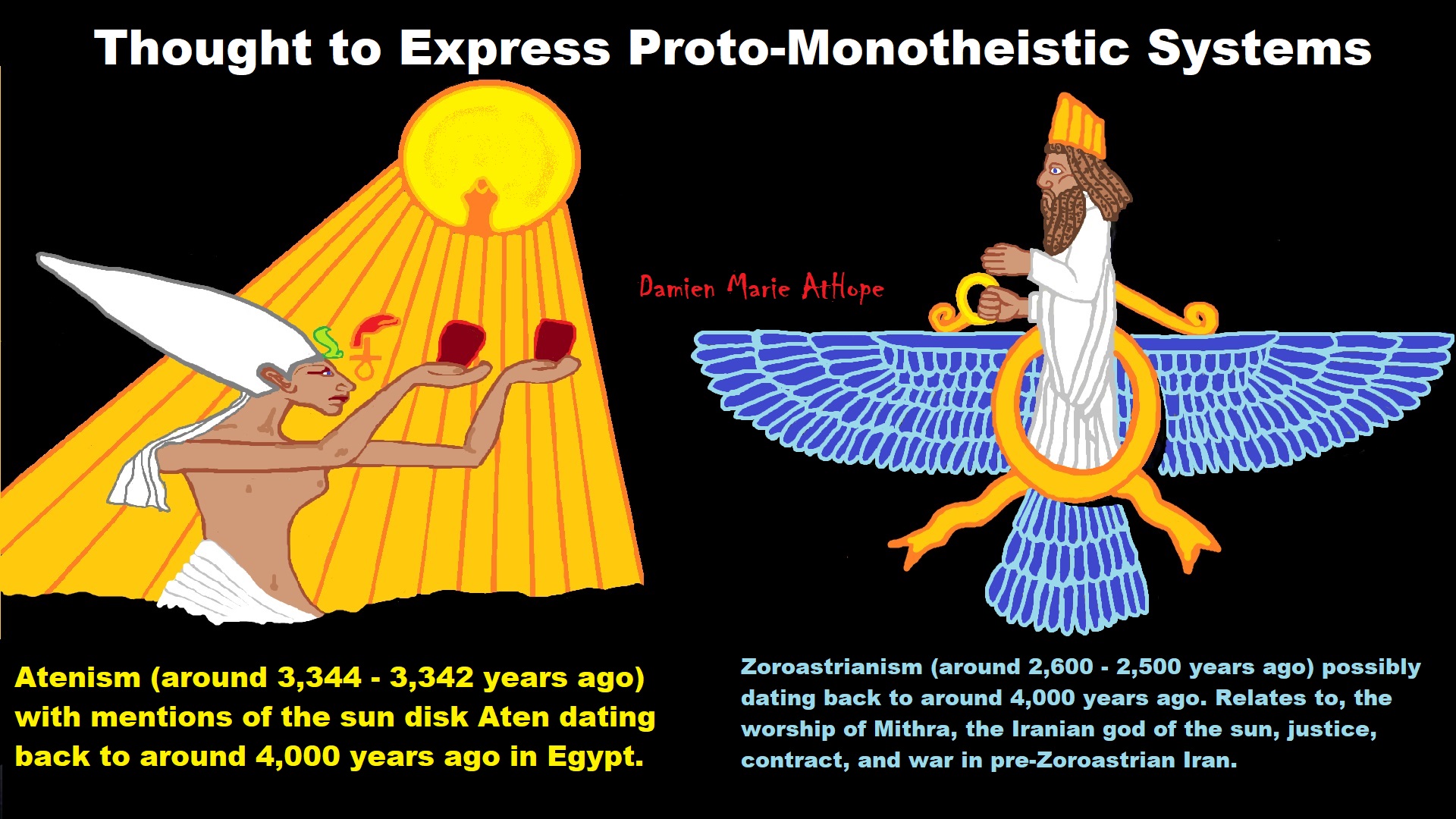
Atenism (around 3,344 – 3,342 years ago) with mentions of the sun disk Aten dating back to around 4,000 years ago in Egypt. ref, ref
Zoroastrianism (around 2,600 – 2,500 years ago) possibly dating back to around 4,000 years ago. Relates to, the worship of Mithra, the Iranian god of the sun, justice, contract, and war in pre-Zoroastrian Iran. ref, ref
Atenism
“Aten, the god of Atenism, first appears in texts dating to the 12th dynasty, in the Story of Sinuhe. During the Middle Kingdom, Aten “as the sun disk…was merely one aspect of the sun god Re.” It was a relatively obscure sun god; without the Atenist period, it would barely have figured in Egyptian history. Although there are indications that it was becoming slightly more important during the eighteenth dynasty, notably Amenhotep III‘s naming of his royal barge as Spirit of the Aten, it was Amenhotep IV who introduced the Atenist revolution in a series of steps culminating in the official installment of the Aten as Egypt’s sole god. Although each line of kings prior to the reign of Akhenaten had previously adopted one deity as the royal patron and supreme state god, there had never been an attempt to exclude other deities, and the multitude of gods had always been tolerated and worshipped. And because of the monolatristic or monotheistic character of Atenism, a link to Judaism (or other monotheistic religions) has been suggested by various writers.” ref
“Akhenaten carried out a radical program of religious reform. For about twenty years, he largely supplanted the age-old beliefs and practices of the Egyptian state religion, and deposed its religious hierarchy, headed by the powerful priesthood of Amun at Thebes. For fifteen centuries, the Egyptians had worshiped an extended family of gods and goddesses, each of which had its own elaborate system of priests, temples, shrines and rituals. A key feature of the cults was the veneration of images and statues of the gods, which were worshipped in the dark confines of the temples. Initially, Akhenaten presented Aten to the Egyptian people as a variant of the familiar supreme deity Amun-Ra (itself the result of an earlier rise to prominence of the cult of Amun, resulting in Amun becoming merged with the sun god Ra), in an attempt to put his ideas in a familiar religious context. Aten is the name given to the solar disc, and the full title of Akhenaten’s god was Ra-Horus, who rejoices in the horizon in his name of the light which is in the sun disc. The pinnacle of the religious hierarchy was the Pharaoh, both king and living god.” ref
“During the reign of Thutmosis IV, it was identified as a distinct solar god, and his son Amenhotep III established and promoted a separate cult for the Aten. There is no evidence that Amenhotep III neglected the other gods or attempted to promote the Aten as an exclusive deity. The fifth year is believed to mark the beginning of Amenhotep IV’s construction of a new capital, Akhetaten (Horizon of the Aten), at the site known today as Amarna. Evidence appears on three of the boundary stelae used to mark the boundaries of this new capital. Then, Amenhotep IV officially changed his name to Akhenaten (Spirit of the Aten) as evidence of his new worship.” ref, ref
“The date given for the event has been estimated to fall around January 2 of that year. In the seventh year of his reign (1346/1344 BC), the capital was moved from Thebes to Akhetaten, but the construction of the city seems to have continued for two more years. In shifting his court from the traditional ceremonial centers, he was signaling a dramatic transformation in the focus of religious and political power. The move separated the Pharaoh and his court from the influence of the priesthood and from the traditional centers of worship, but his decree had deeper religious significance too. Taken in conjunction with his name change, it is possible that the move to Amarna was also meant as a signal of Akhenaten’s symbolic death and rebirth. It may also have coincided with the death of his father and the end of the coregency. In addition to constructing a new capital in honor of Aten, Akhenaten also oversaw the construction of some of the most massive temple complexes in ancient Egypt, including one at Karnak and one at Thebes, close to the old temple of Amun. Detail of funerary stela of Amenemhat.” ref, ref
“The name of God Amun was erased by Akhenaten’s agents. In the ninth year of his reign (1344/1342 BC), Akhenaten declared a more radical version of his new religion, declaring Aten not merely the supreme god of the Egyptian pantheon but the only God of Egypt, with himself as the sole intermediary between the Aten and the Egyptian people. Key features of Atenism included a ban on idols and other images of the Aten, with the exception of a rayed solar disc in which the rays (commonly depicted ending in hands) appear to represent the unseen spirit of Aten. Aten was addressed by Akhenaten in prayers, such as the Great Hymn to the Aten: “O Sole God beside whom there is none”. Aten’s name is also written differently after the ninth year of the Pharaoh’s rule to emphasize the radicalism of the new regime. Aten, instead of being written with the symbol of a rayed solar disc, now became spelled phonetically. The details of Atenist theology are still unclear.” ref, ref
“The exclusion of all but one god and the prohibition of idols was a radical departure from Egyptian tradition, but most scholars see Akhenaten as a practitioner of monolatry rather than monotheism, as he did not actively deny the existence of other gods. He simply refrained from worshiping any but Aten. It is known that Atenism did not attribute divinity only to Aten. Akhenaten continued the cult of the Pharaoh, proclaiming himself the son of Aten and encouraging the Egyptian people to worship him. The Egyptian people were to worship Akhenaten, and only Akhenaten and Nefertiti could worship Aten directly. Because of the Monolatristc or monotheistic character of Atenism, a link to Judaism (or other monotheistic religions) has been suggested by various writers.” ref, ref
“For example, psychoanalyst Sigmund Freud assumed Akhenaten to be the pioneer of monotheistic religion and Moses as Akhenaten’s follower in his book Moses and Monotheism (see also Osarseph). The Egyptian author Ahmed Osman went as far as to claim that Moses and Akhenaten were the same person. Monolatrism or monolatry is to some a form of monotheism which places exclusive devotion on one latrine God alone, with recognition of the existence of other Gods, worshipped by other people. Monolatry is similar thus sometimes confused with henotheism, but they are different concepts of religious belief. Examples of Monolatrism or monolatry, Judaism was originally a monolatry, but El (who later merged with Yahweh) and Asherah (the consort of El and later of Yahweh) disappeared from the pantheon, leaving only Yahweh, however, this is a highly disputed claim. Mormonism is also monolatrist, as though they see only one god as worthy of praise in this universe, they also recognize the existence of other gods in different universes.” ref, ref


Animism: Respecting the Living World by Graham Harvey
“How have human cultures engaged with and thought about animals, plants, rocks, clouds, and other elements in their natural surroundings? Do animals and other natural objects have a spirit or soul? What is their relationship to humans? In this new study, Graham Harvey explores current and past animistic beliefs and practices of Native Americans, Maori, Aboriginal Australians, and eco-pagans. He considers the varieties of animism found in these cultures as well as their shared desire to live respectfully within larger natural communities. Drawing on his extensive casework, Harvey also considers the linguistic, performative, ecological, and activist implications of these different animisms.” ref

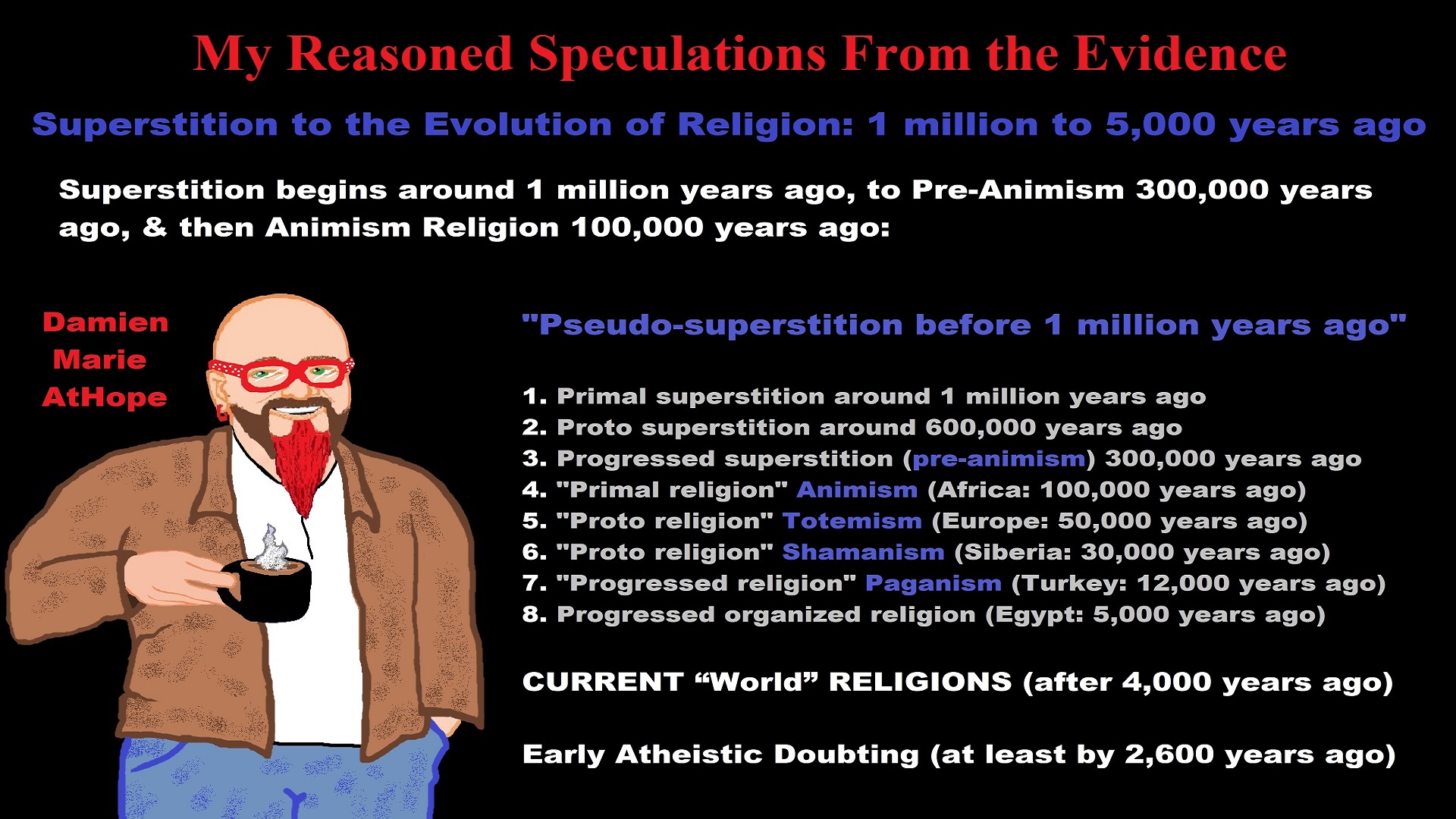
My thoughts on Religion Evolution with external links for more info:
- (Pre-Animism Africa mainly, but also Europe, and Asia at least 300,000 years ago), (Pre-Animism – Oxford Dictionaries)
- (Animism Africa around 100,000 years ago), (Animism – Britannica.com)
- (Totemism Europe around 50,000 years ago), (Totemism – Anthropology)
- (Shamanism Siberia around 30,000 years ago), (Shamanism – Britannica.com)
- (Paganism Turkey around 12,000 years ago), (Paganism – BBC Religion)
- (Progressed Organized Religion “Institutional Religion” Egypt around 5,000 years ago), (Ancient Egyptian Religion – Britannica.com)
- (CURRENT “World” RELIGIONS after 4,000 years ago) (Origin of Major Religions – Sacred Texts)
- (Early Atheistic Doubting at least by 2,600 years ago) (History of Atheism – Wikipedia)
“Religion is an Evolved Product” and Yes, Religion is Like Fear Given Wings…
Atheists talk about gods and religions for the same reason doctors talk about cancer, they are looking for a cure, or a firefighter talks about fires because they burn people and they care to stop them. We atheists too often feel a need to help the victims of mental slavery, held in the bondage that is the false beliefs of gods and the conspiracy theories of reality found in religions.
Understanding Religion Evolution:
- Pre-Animism (at least 300,000 years ago)
- Animism (Africa: 100,000 years ago)
- Totemism (Europe: 50,000 years ago)
- Shamanism (Siberia: 30,000 years ago)
- Paganism (Turkey: 12,000 years ago)
- Progressed organized religion (Egypt: 5,000 years ago), (Egypt, the First Dynasty 5,150 years ago)
- CURRENT “World” RELIGIONS (after 4,000 years ago)
- Early Atheistic Doubting (at least by 2,600 years ago)
“An Archaeological/Anthropological Understanding of Religion Evolution”
It seems ancient peoples had to survived amazing threats in a “dangerous universe (by superstition perceived as good and evil),” and human “immorality or imperfection of the soul” which was thought to affect the still living, leading to ancestor worship. This ancestor worship presumably led to the belief in supernatural beings, and then some of these were turned into the belief in gods. This feeble myth called gods were just a human conceived “made from nothing into something over and over, changing, again and again, taking on more as they evolve, all the while they are thought to be special,” but it is just supernatural animistic spirit-belief perceived as sacred.
Quick Evolution of Religion?
Pre-Animism (at least 300,000 years ago) pre-religion is a beginning that evolves into later Animism. So, Religion as we think of it, to me, all starts in a general way with Animism (Africa: 100,000 years ago) (theoretical belief in supernatural powers/spirits), then this is physically expressed in or with Totemism (Europe: 50,000 years ago) (theoretical belief in mythical relationship with powers/spirits through a totem item), which then enlists a full-time specific person to do this worship and believed interacting Shamanism (Siberia/Russia: 30,000 years ago) (theoretical belief in access and influence with spirits through ritual), and then there is the further employment of myths and gods added to all the above giving you Paganism (Turkey: 12,000 years ago) (often a lot more nature-based than most current top world religions, thus hinting to their close link to more ancient religious thinking it stems from). My hypothesis is expressed with an explanation of the building of a theatrical house (modern religions development). Progressed organized religion (Egypt: 5,000 years ago) with CURRENT “World” RELIGIONS (after 4,000 years ago).
Historically, in large city-state societies (such as Egypt or Iraq) starting around 5,000 years ago culminated to make religion something kind of new, a sociocultural-governmental-religious monarchy, where all or at least many of the people of such large city-state societies seem familiar with and committed to the existence of “religion” as the integrated life identity package of control dynamics with a fixed closed magical doctrine, but this juggernaut integrated religion identity package of Dogmatic-Propaganda certainly did not exist or if developed to an extent it was highly limited in most smaller prehistoric societies as they seem to lack most of the strong control dynamics with a fixed closed magical doctrine (magical beliefs could be at times be added or removed). Many people just want to see developed religious dynamics everywhere even if it is not. Instead, all that is found is largely fragments until the domestication of religion.
Religions, as we think of them today, are a new fad, even if they go back to around 6,000 years in the timeline of human existence, this amounts to almost nothing when seen in the long slow evolution of religion at least around 70,000 years ago with one of the oldest ritual worship. Stone Snake of South Africa: “first human worship” 70,000 years ago. This message of how religion and gods among them are clearly a man-made thing that was developed slowly as it was invented and then implemented peace by peace discrediting them all. Which seems to be a simple point some are just not grasping how devastating to any claims of truth when we can see the lie clearly in the archeological sites.
I wish people fought as hard for the actual values as they fight for the group/clan names political or otherwise they think support values. Every amount spent on war is theft to children in need of food or the homeless kept from shelter.
Here are several of my blog posts on history:
- To Find Truth You Must First Look
- (Magdalenian/Iberomaurusian) Connections to the First Paganists of the early Neolithic Near East Dating from around 17,000 to 12,000 Years Ago
- Natufians: an Ancient People at the Origins of Agriculture and Sedentary Life
- Possible Clan Leader/Special “MALE” Ancestor Totem Poles At Least 13,500 years ago?
- Jewish People with DNA at least 13,200 years old, Judaism, and the Origins of Some of its Ideas
- Baltic Reindeer Hunters: Swiderian, Lyngby, Ahrensburgian, and Krasnosillya cultures 12,020 to 11,020 years ago are evidence of powerful migratory waves during the last 13,000 years and a genetic link to Saami and the Finno-Ugric peoples.
- The Rise of Inequality: patriarchy and state hierarchy inequality
- Fertile Crescent 12,500 – 9,500 Years Ago: fertility and death cult belief system?
- 12,400 – 11,700 Years Ago – Kortik Tepe (Turkey) Pre/early-Agriculture Cultic Ritualism
- Ritualistic Bird Symbolism at Gobekli Tepe and its “Ancestor Cult”
- Male-Homosexual (female-like) / Trans-woman (female) Seated Figurine from Gobekli Tepe
- Could a 12,000-year-old Bull Geoglyph at Göbekli Tepe relate to older Bull and Female Art 25,000 years ago and Later Goddess and the Bull cults like Catal Huyuk?
- Sedentism and the Creation of goddesses around 12,000 years ago as well as male gods after 7,000 years ago.
- Alcohol, where Agriculture and Religion Become one? Such as Gobekli Tepe’s Ritualistic use of Grain as Food and Ritual Drink
- Neolithic Ritual Sites with T-Pillars and other Cultic Pillars
- Paganism: Goddesses around 12,000 years ago then Male Gods after 7,000 years ago
- First Patriarchy: Split of Women’s Status around 12,000 years ago & First Hierarchy: fall of Women’s Status around 5,000 years ago.
- Natufians: an Ancient People at the Origins of Agriculture and Sedentary Life
- J DNA and the Spread of Agricultural Religion (paganism)
- Paganism: an approximately 12,000-year-old belief system
- Paganism 12,000 years old: related to “Anarchism and Socialism” (Pre-Capitalism)
- Shaman burial in Israel 12,000 years ago and the Shamanism Phenomena
- Need to Mythicized: gods and goddesses
- 12,000 – 7,000 Years Ago – Paleo-Indian Culture (The Americas)
- 12,000 – 2,000 Years Ago – Indigenous-Scandinavians (Nordic)
- Norse did not wear helmets with horns?
- Pre-Pottery Neolithic Skull Cult around 11,500 to 8,400 Years Ago?
- 10,400 – 10,100 Years Ago, in Turkey the Nevail Cori Religious Settlement
- 9,000-6,500 Years Old Submerged Pre-Pottery/Pottery Neolithic Ritual Settlements off Israel’s Coast
- Catal Huyuk “first religious designed city” around 9,500 to 7,700 years ago (Turkey)
- Cultic Hunting at Catal Huyuk “first religious designed city”
- Special Items and Art as well as Special Elite Burials at Catal Huyuk
- New Rituals and Violence with the appearance of Pottery and People?
- Haplogroup N and its related Uralic Languages and Cultures
- Ainu people, Sámi people, Native Americans, the Ancient North Eurasians, and Paganistic-Shamanism with Totemism
- Ideas, Technology and People from Turkey, Europe, to China and Back again 9,000 to 5,000 years ago?
- First Pottery of Europe and the Related Cultures
- 9,000 years old Neolithic Artifacts Judean Desert and Hills Israel
- 9,000-7,000 years-old Sex and Death Rituals: Cult Sites in Israel, Jordan, and the Sinai
- 9,000-8500 year old Horned Female shaman Bad Dürrenberg Germany
- Neolithic Jewelry and the Spread of Farming in Europe Emerging out of West Turkey
- 8,600-year-old Tortoise Shells in Neolithic graves in central China have Early Writing and Shamanism
- Swing of the Mace: the rise of Elite, Forced Authority, and Inequality begin to Emerge 8,500 years ago?
- Migrations and Changing Europeans Beginning around 8,000 Years Ago
- My “Steppe-Anatolian-Kurgan hypothesis” 8,000/7,000 years ago
- Around 8,000-year-old Shared Idea of the Mistress of Animals, “Ritual” Motif
- Pre-Columbian Red-Paint (red ochre) Maritime Archaic Culture 8,000-3,000 years ago
- 7,522-6,522 years ago Linear Pottery culture which I think relates to Arcane Capitalism’s origins
- Arcane Capitalism: Primitive socialism, Primitive capital, Private ownership, Means of production, Market capitalism, Class discrimination, and Petite bourgeoisie (smaller capitalists)
- 7,500-4,750 years old Ritualistic Cucuteni-Trypillian culture of Moldova, Romania, and Ukraine
- Roots of a changing early society 7,200-6,700 years ago Jordan and Israel
- Agriculture religion (Paganism) with farming reached Britain between about 7,000 to 6,500 or so years ago and seemingly expressed in things like Western Europe’s Long Barrows
- My Thoughts on Possible Migrations of “R” DNA and Proto-Indo-European?
- “Millet” Spreading from China 7,022 years ago to Europe and related Language may have Spread with it leading to Proto-Indo-European
- Proto-Indo-European (PIE), ancestor of Indo-European languages: DNA, Society, Language, and Mythology
- The Dnieper–Donets culture and Asian varieties of Millet from China to the Black Sea region of Europe by 7,022 years ago
- Kurgan 6,000 years ago/dolmens 7,000 years ago: funeral, ritual, and other?
- 7,020 to 6,020-year-old Proto-Indo-European Homeland of Urheimat or proposed home of their Language and Religion
- Ancient Megaliths: Kurgan, Ziggurat, Pyramid, Menhir, Trilithon, Dolman, Kromlech, and Kromlech of Trilithons
- The Mytheme of Ancient North Eurasian Sacred-Dog belief and similar motifs are found in Indo-European, Native American, and Siberian comparative mythology
- Elite Power Accumulation: Ancient Trade, Tokens, Writing, Wealth, Merchants, and Priest-Kings
- Sacred Mounds, Mountains, Kurgans, and Pyramids may hold deep connections?
- Between 7,000-5,000 Years ago, rise of unequal hierarchy elite, leading to a “birth of the State” or worship of power, strong new sexism, oppression of non-elites, and the fall of Women’s equal status
- Paganism 7,000-5,000 years old: related to “Anarchism and Socialism” (Capitalism) (World War 0) Elite & their slaves
- Hell and Underworld mythologies starting maybe as far back as 7,000 to 5,000 years ago with the Proto-Indo-Europeans?
- The First Expression of the Male God around 7,000 years ago?
- White (light complexion skin) Bigotry and Sexism started 7,000 years ago?
- Around 7,000-year-old Shared Idea of the Divine Bird (Tutelary and/or Trickster spirit/deity), “Ritual” Motif
- Nekhbet an Ancient Egyptian Vulture Goddess and Tutelary Deity
- 6,720 to 4,920 years old Ritualistic Hongshan Culture of Inner Mongolia with 5,000-year-old Pyramid Mounds and Temples
- First proto-king in the Balkans, Varna culture around 6,500 years ago?
- 6,500–5,800 years ago in Israel Late Chalcolithic (Copper Age) Period in the Southern Levant Seems to Express Northern Levant Migrations, Cultural and Religious Transfer
- KING OF BEASTS: Master of Animals “Ritual” Motif, around 6,000 years old or older…
- Around 6000-year-old Shared Idea of the Solid Wheel & the Spoked Wheel-Shaped Ritual Motif
- “The Ghassulian Star,” a mysterious 6,000-year-old mural from Jordan; a Proto-Star of Ishtar, Star of Inanna or Star of Venus?
- Religious/Ritual Ideas, including goddesses and gods as well as ritual mounds or pyramids from Northeastern Asia at least 6,000 years old, seemingly filtering to Iran, Iraq, the Mediterranean, Europe, Egypt, and the Americas?
- Maykop (5,720–5,020 years ago) Caucasus region Bronze Age culture-related to Copper Age farmers from the south, influenced by the Ubaid period and Leyla-Tepe culture, as well as influencing the Kura-Araxes culture
- 5-600-year-old Tomb, Mummy, and First Bearded Male Figurine in a Grave
- Kura-Araxes Cultural 5,520 to 4,470 years old DNA traces to the Canaanites, Arabs, and Jews
- Minoan/Cretan (Keftiu) Civilization and Religion around 5,520 to 3,120 years ago
- Evolution Of Science at least by 5,500 years ago
- 5,500 Years old birth of the State, the rise of Hierarchy, and the fall of Women’s status
- “Jiroft culture” 5,100 – 4,200 years ago and the History of Iran
- Stonehenge: Paganistic Burial and Astrological Ritual Complex, England (5,100-3,600 years ago)
- Around 5,000-year-old Shared Idea of the “Tree of Life” Ritual Motif
- Complex rituals for elite, seen from China to Egypt, at least by 5,000 years ago
- Around 5,000 years ago: “Birth of the State” where Religion gets Military Power and Influence
- The Center of the World “Axis Mundi” and/or “Sacred Mountains” Mythology Could Relate to the Altai Mountains, Heart of the Steppe
- Progressed organized religion starts, an approximately 5,000-year-old belief system
- China’s Civilization between 5,000-3,000 years ago, was a time of war and class struggle, violent transition from free clans to a Slave or Elite society
- Origin of Logics is Naturalistic Observation at least by around 5,000 years ago.
- Paganism 5,000 years old: progressed organized religion and the state: related to “Anarchism and Socialism” (Kings and the Rise of the State)
- Ziggurats (multi-platform temples: 4,900 years old) to Pyramids (multi-platform tombs: 4,700 years old)
- Did a 4,520–4,420-year-old Volcano In Turkey Inspire the Bible God?
- Finland’s Horned Shaman and Pre-Horned-God at least 4,500 years ago?
- 4,000-year-Old Dolmens in Israel: A Connected Dolmen Religious Phenomenon?
- Creation myths: From chaos, Ex nihilo, Earth-diver, Emergence, World egg, and World parent
- Bronze Age “Ritual” connections of the Bell Beaker culture with the Corded Ware/Single Grave culture, which were related to the Yamnaya culture and Proto-Indo-European Languages/Religions
- Low Gods (Earth/ Tutelary deity), High Gods (Sky/Supreme deity), and Moralistic Gods (Deity enforcement/divine order)
- The exchange of people, ideas, and material-culture including, to me, the new god (Sky Father) and goddess (Earth Mother) religion between the Cucuteni-Trypillians and others which is then spread far and wide
- Koryaks: Indigenous People of the Russian Far East and Big Raven myths also found in Tlingit, Haida, Tsimshian, and other Indigenous People of North America
- 42 Principles Of Maat (Egyptian Goddess of the justice) around 4,400 years ago, 2000 Years Before Ten Commandments
- “Happy Easter” Well Happy Eostre/Ishter
- 4,320-3,820 years old “Shimao” (North China) site with Totemistic-Shamanistic Paganism and a Stepped Pyramid
- 4,250 to 3,400 Year old Stonehenge from Russia: Arkaim?
- 4,100-year-old beaker with medicinal & flowering plants in a grave of a woman in Scotland
- Early European Farmer ancestry, Kelif el Boroud people with the Cardial Ware culture, and the Bell Beaker culture Paganists too, spread into North Africa, then to the Canary Islands off West Africa
- Flood Accounts: Gilgamesh epic (4,100 years ago) Noah in Genesis (2,600 years ago)
- Paganism 4,000 years old: related to “Anarchism and Socialism” (First Moralistic gods, then the Origin time of Monotheism)
- When was the beginning: TIMELINE OF CURRENT RELIGIONS, which start around 4,000 years ago.
- Early Religions Thought to Express Proto-Monotheistic Systems around 4,000 years ago
- Kultepe? An archaeological site with a 4,000 years old women’s rights document.
- Single God Religions (Monotheism) = “Man-o-theism” started around 4,000 years ago with the Great Sky Spirit/God Tiān (天)?
- Confucianism’s Tiān (Shangdi god 4,000 years old): Supernaturalism, Pantheism or Theism?
- Yes, Your Male God is Ridiculous
- Mythology, a Lunar Deity is a Goddess or God of the Moon
- Sacred Land, Hills, and Mountains: Sami Mythology (Paganistic Shamanism)
- Horse Worship/Sacrifice: mythical union of Ruling Elite/Kingship and the Horse
- The Amorite/Amurru people’s God Amurru “Lord of the Steppe”, relates to the Origins of the Bible God?
- Bronze Age Exotic Trade Routes Spread Quite Far as well as Spread Religious Ideas with Them
- Sami and the Northern Indigenous Peoples Landscape, Language, and its Connection to Religion
- Prototype of Ancient Analemmatic Sundials around 3,900-3,150 years ago and a Possible Solar Connection to gods?
- Judaism is around 3,450 or 3,250 years old. (“Paleo-Hebrew” 3,000 years ago and Torah 2,500 years ago)
- The Weakening of Ancient Trade and the Strengthening of Religions around 3000 years ago?
- Are you aware that there are religions that worship women gods, explain now religion tears women down?
- Animistic, Totemistic, and Paganistic Superstition Origins of bible god and the bible’s Religion.
- Myths and Folklore: “Trickster gods and goddesses”
- Jews, Judaism, and the Origins of Some of its Ideas
- An Old Branch of Religion Still Giving Fruit: Sacred Trees
- Dating the BIBLE: naming names and telling times (written less than 3,000 years ago, provable to 2,200 years ago)
- Did a Volcano Inspire the bible god?
- The Amorite/Amurru people’s God Amurru “Lord of the Steppe”, relates to the Origins of the Bible God?
- Dené–Yeniseian language, Old Copper Complex, and Pre-Columbian Mound Builders?
- No “dinosaurs and humans didn’t exist together just because some think they are in the bible itself”
- Sacred Shit and Sacred Animals?
- Everyone Killed in the Bible Flood? “Nephilim” (giants)?
- Hey, Damien dude, I have a question for you regarding “the bible” Exodus.
- Archaeology Disproves the Bible
- Bible Battle, Just More, Bible Babble
- The Jericho Conquest lie?
- Canaanites and Israelites?
- Accurate Account on how did Christianity Began?
- Let’s talk about Christianity.
- So the 10 commandments isn’t anything to go by either right?
- Misinformed christian
- Debunking Jesus?
- Paulism vs Jesus
- Ok, you seem confused so let’s talk about Buddhism.
- Unacknowledged Buddhism: Gods, Savior, Demons, Rebirth, Heavens, Hells, and Terrorism
- His Foolishness The Dalai Lama
- Yin and Yang is sexist with an ORIGIN around 2,300 years ago?
- I Believe Archaeology, not Myths & Why Not, as the Religious Myths Already Violate Reason!
- Archaeological, Scientific, & Philosophic evidence shows the god myth is man-made nonsense.
- Aquatic Ape Theory/Hypothesis? As Always, Just Pseudoscience.
- Ancient Aliens Conspiracy Theorists are Pseudohistorians
- The Pseudohistoric and Pseudoscientific claims about “Bakoni Ruins” of South Africa
- Why do people think Religion is much more than supernaturalism and superstitionism?
- Religion is an Evolved Product
- Was the Value of Ancient Women Different?
- 1000 to 1100 CE, human sacrifice Cahokia Mounds a pre-Columbian Native American site
- Feminist atheists as far back as the 1800s?
- Promoting Religion as Real is Mentally Harmful to a Flourishing Humanity
- Screw All Religions and Their Toxic lies, they are all fraud
- Forget Religions’ Unfounded Myths, I Have Substantiated “Archaeology Facts.”
- Religion Dispersal throughout the World
- I Hate Religion Just as I Hate all Pseudoscience
- Exposing Scientology, Eckankar, Wicca and Other Nonsense?
- Main deity or religious belief systems
- Quit Trying to Invent Your God From the Scraps of Science.
- Archaeological, Scientific, & Philosophic evidence shows the god myth is man-made nonsense.
- Ancient Alien Conspiracy Theorists: Misunderstanding, Rhetoric, Misinformation, Fabrications, and Lies
- Misinformation, Distortion, and Pseudoscience in Talking with a Christian Creationist
- Judging the Lack of Goodness in Gods, Even the Norse God Odin
- Challenging the Belief in God-like Aliens and Gods in General
- A Challenge to Christian use of Torture Devices?
- Yes, Hinduism is a Religion
- Trump is One of the Most Reactionary Forces of Far-right Christian Extremism
- Was the Bull Head a Symbol of God? Yes!
- Primate Death Rituals
- Christian – “God and Christianity are objectively true”
- Australopithecus afarensis Death Ritual?
- You Claim Global Warming is a Hoax?
- Doubter of Science and Defamer of Atheists?
- I think that sounds like the Bible?
- History of the Antifa (“anti-fascist”) Movements
- Indianapolis Anti-Blasphemy Laws #Free Soheil Rally
- Damien, you repeat the golden rule in so many forms then you say religion is dogmatic?
- Science is a Trustable Methodology whereas Faith is not Trustable at all!
- Was I ever a believer, before I was an atheist?
- Atheists rise in reason
- Mistrust of science?
- Open to Talking About the Definition of ‘God’? But first, we address Faith.
- ‘United Monarchy’ full of splendor and power – Saul, David, and Solomon? Most likely not.
- Is there EXODUS ARCHAEOLOGY? The short answer is “no.”
- Lacking Proof of Bigfoots, Unicorns, and Gods is Just a Lack of Research?
- Religion and Politics: Faith Beliefs vs. Rational Thinking
- Hammer of Truth that lying pig RELIGION: challenged by an archaeologist
- “The Hammer of Truth” -ontology question- What do You Mean by That?
- Navigation of a bad argument: Ad Hominem vs. Attack
- Why is it Often Claimed that Gods have a Gender?
- Why are basically all monotheistic religions ones that have a male god?
- Shifting through the Claims in support of Faith
- Dear Mr. AtHope, The 20th Century is an Indictment of Secularism and a Failed Atheist Century
- An Understanding of the Worldwide Statistics and Dynamics of Terrorist Incidents and Suicide Attacks
- Intoxication and Evolution? Addressing and Assessing the “Stoned Ape” or “Drunken Monkey” Theories as Catalysts in Human Evolution
- Sacred Menstrual cloth? Inanna’s knot, Isis knot, and maybe Ma’at’s feather?
- Damien, why don’t the Hebrews accept the bible stories?
- Dealing with a Troll and Arguing Over Word Meaning
- Knowledge without Belief? Justified beliefs or disbeliefs worthy of Knowledge?
- Afrocentrism and African Religions
- Crecganford @crecganford offers history & stories of the people, places, gods, & culture
- Empiricism-Denier?
I am not an academic. I am a revolutionary that teaches in public, in places like social media, and in the streets. I am not a leader by some title given but from my commanding leadership style of simply to start teaching everywhere to everyone, all manner of positive education.








ref, ref, ref, ref, ref, ref, ref, ref, ref, ref, ref, ref, ref, ref, ref, ref, ref, ref, ref, ref, ref
Low Gods “Earth” or Tutelary deity and High Gods “Sky” or Supreme deity
“An Earth goddess is a deification of the Earth. Earth goddesses are often associated with the “chthonic” deities of the underworld. Ki and Ninhursag are Mesopotamian earth goddesses. In Greek mythology, the Earth is personified as Gaia, corresponding to Roman Terra, Indic Prithvi/Bhūmi, etc. traced to an “Earth Mother” complementary to the “Sky Father” in Proto-Indo-European religion. Egyptian mythology exceptionally has a sky goddess and an Earth god.” ref
“A mother goddess is a goddess who represents or is a personification of nature, motherhood, fertility, creation, destruction or who embodies the bounty of the Earth. When equated with the Earth or the natural world, such goddesses are sometimes referred to as Mother Earth or as the Earth Mother. In some religious traditions or movements, Heavenly Mother (also referred to as Mother in Heaven or Sky Mother) is the wife or feminine counterpart of the Sky father or God the Father.” ref
“Any masculine sky god is often also king of the gods, taking the position of patriarch within a pantheon. Such king gods are collectively categorized as “sky father” deities, with a polarity between sky and earth often being expressed by pairing a “sky father” god with an “earth mother” goddess (pairings of a sky mother with an earth father are less frequent). A main sky goddess is often the queen of the gods and may be an air/sky goddess in her own right, though she usually has other functions as well with “sky” not being her main. In antiquity, several sky goddesses in ancient Egypt, Mesopotamia, and the Near East were called Queen of Heaven. Neopagans often apply it with impunity to sky goddesses from other regions who were never associated with the term historically. The sky often has important religious significance. Many religions, both polytheistic and monotheistic, have deities associated with the sky.” ref
“In comparative mythology, sky father is a term for a recurring concept in polytheistic religions of a sky god who is addressed as a “father”, often the father of a pantheon and is often either a reigning or former King of the Gods. The concept of “sky father” may also be taken to include Sun gods with similar characteristics, such as Ra. The concept is complementary to an “earth mother“. “Sky Father” is a direct translation of the Vedic Dyaus Pita, etymologically descended from the same Proto-Indo-European deity name as the Greek Zeûs Pater and Roman Jupiter and Germanic Týr, Tir or Tiwaz, all of which are reflexes of the same Proto-Indo-European deity’s name, *Dyēus Ph₂tḗr. While there are numerous parallels adduced from outside of Indo-European mythology, there are exceptions (e.g. In Egyptian mythology, Nut is the sky mother and Geb is the earth father).” ref
Tutelary deity
“A tutelary (also tutelar) is a deity or spirit who is a guardian, patron, or protector of a particular place, geographic feature, person, lineage, nation, culture, or occupation. The etymology of “tutelary” expresses the concept of safety and thus of guardianship. In late Greek and Roman religion, one type of tutelary deity, the genius, functions as the personal deity or daimon of an individual from birth to death. Another form of personal tutelary spirit is the familiar spirit of European folklore.” ref
“A tutelary (also tutelar) in Korean shamanism, jangseung and sotdae were placed at the edge of villages to frighten off demons. They were also worshiped as deities. Seonangshin is the patron deity of the village in Korean tradition and was believed to embody the Seonangdang. In Philippine animism, Diwata or Lambana are deities or spirits that inhabit sacred places like mountains and mounds and serve as guardians. Such as: Maria Makiling is the deity who guards Mt. Makiling and Maria Cacao and Maria Sinukuan. In Shinto, the spirits, or kami, which give life to human bodies come from nature and return to it after death. Ancestors are therefore themselves tutelaries to be worshiped. And similarly, Native American beliefs such as Tonás, tutelary animal spirit among the Zapotec and Totems, familial or clan spirits among the Ojibwe, can be animals.” ref
“A tutelary (also tutelar) in Austronesian beliefs such as: Atua (gods and spirits of the Polynesian peoples such as the Māori or the Hawaiians), Hanitu (Bunun of Taiwan‘s term for spirit), Hyang (Kawi, Sundanese, Javanese, and Balinese Supreme Being, in ancient Java and Bali mythology and this spiritual entity, can be either divine or ancestral), Kaitiaki (New Zealand Māori term used for the concept of guardianship, for the sky, the sea, and the land), Kawas (mythology) (divided into 6 groups: gods, ancestors, souls of the living, spirits of living things, spirits of lifeless objects, and ghosts), Tiki (Māori mythology, Tiki is the first man created by either Tūmatauenga or Tāne and represents deified ancestors found in most Polynesian cultures). ” ref, ref, ref, ref, ref, ref, ref
Mesopotamian Tutelary Deities can be seen as ones related to City-States
“Historical city-states included Sumerian cities such as Uruk and Ur; Ancient Egyptian city-states, such as Thebes and Memphis; the Phoenician cities (such as Tyre and Sidon); the five Philistine city-states; the Berber city-states of the Garamantes; the city-states of ancient Greece (the poleis such as Athens, Sparta, Thebes, and Corinth); the Roman Republic (which grew from a city-state into a vast empire); the Italian city-states from the Middle Ages to the early modern period, such as Florence, Siena, Ferrara, Milan (which as they grew in power began to dominate neighboring cities) and Genoa and Venice, which became powerful thalassocracies; the Mayan and other cultures of pre-Columbian Mesoamerica (including cities such as Chichen Itza, Tikal, Copán and Monte Albán); the central Asian cities along the Silk Road; the city-states of the Swahili coast; Ragusa; states of the medieval Russian lands such as Novgorod and Pskov; and many others.” ref
“The Uruk period (ca. 4000 to 3100 BCE; also known as Protoliterate period) of Mesopotamia, named after the Sumerian city of Uruk, this period saw the emergence of urban life in Mesopotamia and the Sumerian civilization. City-States like Uruk and others had a patron tutelary City Deity along with a Priest-King.” ref
“Chinese folk religion, both past, and present, includes myriad tutelary deities. Exceptional individuals, highly cultivated sages, and prominent ancestors can be deified and honored after death. Lord Guan is the patron of military personnel and police, while Mazu is the patron of fishermen and sailors. Such as Tu Di Gong (Earth Deity) is the tutelary deity of a locality, and each individual locality has its own Earth Deity and Cheng Huang Gong (City God) is the guardian deity of an individual city, worshipped by local officials and locals since imperial times.” ref
“A tutelary (also tutelar) in Hinduism, personal tutelary deities are known as ishta-devata, while family tutelary deities are known as Kuladevata. Gramadevata are guardian deities of villages. Devas can also be seen as tutelary. Shiva is the patron of yogis and renunciants. City goddesses include: Mumbadevi (Mumbai), Sachchika (Osian); Kuladevis include: Ambika (Porwad), and Mahalakshmi. In NorthEast India Meitei mythology and religion (Sanamahism) of Manipur, there are various types of tutelary deities, among which Lam Lais are the most predominant ones. Tibetan Buddhism has Yidam as a tutelary deity. Dakini is the patron of those who seek knowledge.” ref
“A tutelary (also tutelar) The Greeks also thought deities guarded specific places: for instance, Athena was the patron goddess of the city of Athens. Socrates spoke of hearing the voice of his personal spirit or daimonion:
You have often heard me speak of an oracle or sign which comes to me … . This sign I have had ever since I was a child. The sign is a voice which comes to me and always forbids me to do something which I am going to do, but never commands me to do anything, and this is what stands in the way of my being a politician.” ref
“Tutelary deities who guard and preserve a place or a person are fundamental to ancient Roman religion. The tutelary deity of a man was his Genius, that of a woman her Juno. In the Imperial era, the Genius of the Emperor was a focus of Imperial cult. An emperor might also adopt a major deity as his personal patron or tutelary, as Augustus did Apollo. Precedents for claiming the personal protection of a deity were established in the Republican era, when for instance the Roman dictator Sulla advertised the goddess Victory as his tutelary by holding public games (ludi) in her honor.” ref
“Each town or city had one or more tutelary deities, whose protection was considered particularly vital in time of war and siege. Rome itself was protected by a goddess whose name was to be kept ritually secret on pain of death (for a supposed case, see Quintus Valerius Soranus). The Capitoline Triad of Juno, Jupiter, and Minerva were also tutelaries of Rome. The Italic towns had their own tutelary deities. Juno often had this function, as at the Latin town of Lanuvium and the Etruscan city of Veii, and was often housed in an especially grand temple on the arx (citadel) or other prominent or central location. The tutelary deity of Praeneste was Fortuna, whose oracle was renowned.” ref
“The Roman ritual of evocatio was premised on the belief that a town could be made vulnerable to military defeat if the power of its tutelary deity were diverted outside the city, perhaps by the offer of superior cult at Rome. The depiction of some goddesses such as the Magna Mater (Great Mother, or Cybele) as “tower-crowned” represents their capacity to preserve the city. A town in the provinces might adopt a deity from within the Roman religious sphere to serve as its guardian, or syncretize its own tutelary with such; for instance, a community within the civitas of the Remi in Gaul adopted Apollo as its tutelary, and at the capital of the Remi (present-day Rheims), the tutelary was Mars Camulus.” ref
Household deity (a kind of or related to a Tutelary deity)
“A household deity is a deity or spirit that protects the home, looking after the entire household or certain key members. It has been a common belief in paganism as well as in folklore across many parts of the world. Household deities fit into two types; firstly, a specific deity – typically a goddess – often referred to as a hearth goddess or domestic goddess who is associated with the home and hearth, such as the ancient Greek Hestia.” ref
“The second type of household deities are those that are not one singular deity, but a type, or species of animistic deity, who usually have lesser powers than major deities. This type was common in the religions of antiquity, such as the Lares of ancient Roman religion, the Gashin of Korean shamanism, and Cofgodas of Anglo-Saxon paganism. These survived Christianisation as fairy-like creatures existing in folklore, such as the Anglo-Scottish Brownie and Slavic Domovoy.” ref
“Household deities were usually worshipped not in temples but in the home, where they would be represented by small idols (such as the teraphim of the Bible, often translated as “household gods” in Genesis 31:19 for example), amulets, paintings, or reliefs. They could also be found on domestic objects, such as cosmetic articles in the case of Tawaret. The more prosperous houses might have a small shrine to the household god(s); the lararium served this purpose in the case of the Romans. The gods would be treated as members of the family and invited to join in meals, or be given offerings of food and drink.” ref
“In many religions, both ancient and modern, a god would preside over the home. Certain species, or types, of household deities, existed. An example of this was the Roman Lares. Many European cultures retained house spirits into the modern period. Some examples of these include:
- Brownie (Scotland and England) or Hob (England) / Kobold (Germany) / Goblin / Hobgoblin
- Domovoy (Slavic)
- Nisse (Norwegian or Danish) / Tomte (Swedish) / Tonttu (Finnish)
- Húsvættir (Norse)” ref
“Although the cosmic status of household deities was not as lofty as that of the Twelve Olympians or the Aesir, they were also jealous of their dignity and also had to be appeased with shrines and offerings, however humble. Because of their immediacy they had arguably more influence on the day-to-day affairs of men than the remote gods did. Vestiges of their worship persisted long after Christianity and other major religions extirpated nearly every trace of the major pagan pantheons. Elements of the practice can be seen even today, with Christian accretions, where statues to various saints (such as St. Francis) protect gardens and grottos. Even the gargoyles found on older churches, could be viewed as guardians partitioning a sacred space.” ref
“For centuries, Christianity fought a mop-up war against these lingering minor pagan deities, but they proved tenacious. For example, Martin Luther‘s Tischreden have numerous – quite serious – references to dealing with kobolds. Eventually, rationalism and the Industrial Revolution threatened to erase most of these minor deities, until the advent of romantic nationalism rehabilitated them and embellished them into objects of literary curiosity in the 19th century. Since the 20th century this literature has been mined for characters for role-playing games, video games, and other fantasy personae, not infrequently invested with invented traits and hierarchies somewhat different from their mythological and folkloric roots.” ref
“In contradistinction to both Herbert Spencer and Edward Burnett Tylor, who defended theories of animistic origins of ancestor worship, Émile Durkheim saw its origin in totemism. In reality, this distinction is somewhat academic, since totemism may be regarded as a particularized manifestation of animism, and something of a synthesis of the two positions was attempted by Sigmund Freud. In Freud’s Totem and Taboo, both totem and taboo are outward expressions or manifestations of the same psychological tendency, a concept which is complementary to, or which rather reconciles, the apparent conflict. Freud preferred to emphasize the psychoanalytic implications of the reification of metaphysical forces, but with particular emphasis on its familial nature. This emphasis underscores, rather than weakens, the ancestral component.” ref
“William Edward Hearn, a noted classicist, and jurist, traced the origin of domestic deities from the earliest stages as an expression of animism, a belief system thought to have existed also in the neolithic, and the forerunner of Indo-European religion. In his analysis of the Indo-European household, in Chapter II “The House Spirit”, Section 1, he states:
The belief which guided the conduct of our forefathers was … the spirit rule of dead ancestors.” ref
“In Section 2 he proceeds to elaborate:
It is thus certain that the worship of deceased ancestors is a vera causa, and not a mere hypothesis. …
In the other European nations, the Slavs, the Teutons, and the Kelts, the House Spirit appears with no less distinctness. … [T]he existence of that worship does not admit of doubt. … The House Spirits had a multitude of other names which it is needless here to enumerate, but all of which are more or less expressive of their friendly relations with man. … In [England] … [h]e is the Brownie. … In Scotland this same Brownie is well known. He is usually described as attached to particular families, with whom he has been known to reside for centuries, threshing the corn, cleaning the house, and performing similar household tasks. His favorite gratification was milk and honey.” ref

Hinduism around 3,700 to 3,500 years old. ref
Judaism around 3,450 or 3,250 years old. (The first writing in the bible was “Paleo-Hebrew” dated to around 3,000 years ago Khirbet Qeiyafa is the site of an ancient fortress city overlooking the Elah Valley. And many believe the religious Jewish texts were completed around 2,500) ref, ref
Judaism is around 3,450 or 3,250 years old. (“Paleo-Hebrew” 3,000 years ago and Torah 2,500 years ago)
“Judaism is an Abrahamic, its roots as an organized religion in the Middle East during the Bronze Age. Some scholars argue that modern Judaism evolved from Yahwism, the religion of ancient Israel and Judah, by the late 6th century BCE, and is thus considered to be one of the oldest monotheistic religions.” ref
“Yahwism is the name given by modern scholars to the religion of ancient Israel, essentially polytheistic, with a plethora of gods and goddesses. Heading the pantheon was Yahweh, the national god of the Israelite kingdoms of Israel and Judah, with his consort, the goddess Asherah; below them were second-tier gods and goddesses such as Baal, Shamash, Yarikh, Mot, and Astarte, all of whom had their own priests and prophets and numbered royalty among their devotees, and a third and fourth tier of minor divine beings, including the mal’ak, the messengers of the higher gods, who in later times became the angels of Judaism, Christianity and Islam. Yahweh, however, was not the ‘original’ god of Israel “Isra-El”; it is El, the head of the Canaanite pantheon, whose name forms the basis of the name “Israel”, and none of the Old Testament patriarchs, the tribes of Israel, the Judges, or the earliest monarchs, have a Yahwistic theophoric name (i.e., one incorporating the name of Yahweh).” ref
“El is a Northwest Semitic word meaning “god” or “deity“, or referring (as a proper name) to any one of multiple major ancient Near Eastern deities. A rarer form, ‘ila, represents the predicate form in Old Akkadian and in Amorite. The word is derived from the Proto-Semitic *ʔil-, meaning “god”. Specific deities known as ‘El or ‘Il include the supreme god of the ancient Canaanite religion and the supreme god of East Semitic speakers in Mesopotamia’s Early Dynastic Period. ʼĒl is listed at the head of many pantheons. In some Canaanite and Ugaritic sources, ʼĒl played a role as father of the gods, of creation, or both. For example, in the Ugaritic texts, ʾil mlk is understood to mean “ʼĒl the King” but ʾil hd as “the god Hadad“. The Semitic root ʾlh (Arabic ʾilāh, Aramaic ʾAlāh, ʾElāh, Hebrew ʾelōah) may be ʾl with a parasitic h, and ʾl may be an abbreviated form of ʾlh. In Ugaritic the plural form meaning “gods” is ʾilhm, equivalent to Hebrew ʾelōhîm “powers”. In the Hebrew texts this word is interpreted as being semantically singular for “god” by biblical commentators. However the documentary hypothesis for the Old Testament (corresponds to the Jewish Torah) developed originally in the 1870s, identifies these that different authors – the Jahwist, Elohist, Deuteronomist, and the Priestly source – were responsible for editing stories from a polytheistic religion into those of a monotheistic religion. Inconsistencies that arise between monotheism and polytheism in the texts are reflective of this hypothesis.” ref
Jainism around 2,599 – 2,527 years old. ref
Confucianism around 2,600 – 2,551 years old. ref
Buddhism around 2,563/2,480 – 2,483/2,400 years old. ref
Christianity around 2,o00 years old. ref
Shinto around 1,305 years old. ref
Islam around 1407–1385 years old. ref

Knowledge to Ponder:
Stars/Astrology:
- Possibly, around 30,000 years ago (in simpler form) to 6,000 years ago, Stars/Astrology are connected to Ancestors, Spirit Animals, and Deities.
- The star also seems to be a possible proto-star for Star of Ishtar, Star of Inanna, or Star of Venus.
- Around 7,000 to 6,000 years ago, Star Constellations/Astrology have connections to the “Kurgan phenomenon” of below-ground “mound” stone/wood burial structures and “Dolmen phenomenon” of above-ground stone burial structures.
- Around 6,500–5,800 years ago, The Northern Levant migrations into Jordon and Israel in the Southern Levant brought new cultural and religious transfer from Turkey and Iran.
- “The Ghassulian Star,” a mysterious 6,000-year-old mural from Jordan may have connections to the European paganstic kurgan/dolmens phenomenon.
“Astrology is a range of divinatory practices, recognized as pseudoscientific since the 18th century, that claim to discern information about human affairs and terrestrial events by studying the apparent positions of celestial objects. Different cultures have employed forms of astrology since at least the 2nd millennium BCE, these practices having originated in calendrical systems used to predict seasonal shifts and to interpret celestial cycles as signs of divine communications. Most, if not all, cultures have attached importance to what they observed in the sky, and some—such as the Hindus, Chinese, and the Maya—developed elaborate systems for predicting terrestrial events from celestial observations. Western astrology, one of the oldest astrological systems still in use, can trace its roots to 19th–17th century BCE Mesopotamia, from where it spread to Ancient Greece, Rome, the Islamicate world and eventually Central and Western Europe. Contemporary Western astrology is often associated with systems of horoscopes that purport to explain aspects of a person’s personality and predict significant events in their lives based on the positions of celestial objects; the majority of professional astrologers rely on such systems.” ref
Around 5,500 years ago, Science evolves, The first evidence of science was 5,500 years ago and was demonstrated by a body of empirical, theoretical, and practical knowledge about the natural world. ref
Around 5,000 years ago, Origin of Logics is a Naturalistic Observation (principles of valid reasoning, inference, & demonstration) ref
Around 4,150 to 4,000 years ago: The earliest surviving versions of the Sumerian Epic of Gilgamesh, which was originally titled “He who Saw the Deep” (Sha naqba īmuru) or “Surpassing All Other Kings” (Shūtur eli sharrī) were written. ref
Hinduism:
- 3,700 years ago or so, the oldest of the Hindu Vedas (scriptures), the Rig Veda was composed.
- 3,500 years ago or so, the Vedic Age began in India after the collapse of the Indus Valley Civilization.
Judaism:
- around 3,000 years ago, the first writing in the bible was “Paleo-Hebrew”
- around 2,500 years ago, many believe the religious Jewish texts were completed
Myths: The bible inspired religion is not just one religion or one myth but a grouping of several religions and myths
- Around 3,450 or 3,250 years ago, according to legend, is the traditionally accepted period in which the Israelite lawgiver, Moses, provided the Ten Commandments.
- Around 2,500 to 2,400 years ago, a collection of ancient religious writings by the Israelites based primarily upon the Hebrew Bible, Tanakh, or Old Testament is the first part of Christianity’s bible.
- Around 2,400 years ago, the most accepted hypothesis is that the canon was formed in stages, first the Pentateuch (Torah).
- Around 2,140 to 2,116 years ago, the Prophets was written during the Hasmonean dynasty, and finally the remaining books.
- Christians traditionally divide the Old Testament into four sections:
- The first five books or Pentateuch (Torah).
- The proposed history books telling the history of the Israelites from their conquest of Canaan to their defeat and exile in Babylon.
- The poetic and proposed “Wisdom books” dealing, in various forms, with questions of good and evil in the world.
- The books of the biblical prophets, warning of the consequences of turning away from God:
- Henotheism:
- Exodus 20:23 “You shall not make other gods besides Me (not saying there are no other gods just not to worship them); gods of silver or gods of gold, you shall not make for yourselves.”
- Polytheism:
- Judges 10:6 “Then the sons of Israel again did evil in the sight of the LORD, served the Baals and the Ashtaroth, the gods of Aram, the gods of Sidon, the gods of Moab, the gods of the sons of Ammon, and the gods of the Philistines; thus they forsook the LORD and did not serve Him.”
- 1 Corinthians 8:5 “For even if there are so-called gods whether in heaven or on earth, as indeed there are many gods and many lords.”
- Monotheism:
- Isaiah 43:10 “You are my witnesses,” declares the LORD, “and my servant whom I have chosen, so that you may know and believe me and understand that I am he. Before me no god was formed, nor will there be one after me.
Around 2,570 to 2,270 Years Ago, there is a confirmation of atheistic doubting as well as atheistic thinking, mainly by Greek philosophers. However, doubting gods is likely as old as the invention of gods and should destroy the thinking that belief in god(s) is the “default belief”. The Greek word is apistos (a “not” and pistos “faithful,”), thus not faithful or faithless because one is unpersuaded and unconvinced by a god(s) claim. Short Definition: unbelieving, unbeliever, or unbelief.

Expressions of Atheistic Thinking:
- Around 2,600 years ago, Ajita Kesakambali, ancient Indian philosopher, who is the first known proponent of Indian materialism. ref
- Around 2,535 to 2,475 years ago, Heraclitus, Greek pre-Socratic philosopher, a native of the Greek city Ephesus, Ionia, on the coast of Anatolia, also known as Asia Minor or modern Turkey. ref
- Around 2,500 to 2,400 years ago, according to The Story of Civilization book series certain African pygmy tribes have no identifiable gods, spirits, or religious beliefs or rituals, and even what burials accrue are without ceremony. ref
- Around 2,490 to 2,430 years ago, Empedocles, Greek pre-Socratic philosopher and a citizen of Agrigentum, a Greek city in Sicily. ref
- Around 2,460 to 2,370 years ago, Democritus, Greek pre-Socratic philosopher considered to be the “father of modern science” possibly had some disbelief amounting to atheism. ref
- Around 2,399 years ago or so, Socrates, a famous Greek philosopher was tried for sinfulness by teaching doubt of state gods. ref
- Around 2,341 to 2,270 years ago, Epicurus, a Greek philosopher known for composing atheistic critics and famously stated, “Is God willing to prevent evil, but not able? Then he is not omnipotent. Is he able, but not willing? Then he is malevolent. Is he both able and willing? Then whence cometh evil? Is he neither able nor willing? Then why call him god?” ref
This last expression by Epicurus, seems to be an expression of Axiological Atheism. To understand and utilize value or actually possess “Value Conscious/Consciousness” to both give a strong moral “axiological” argument (the problem of evil) as well as use it to fortify humanism and positive ethical persuasion of human helping and care responsibilities. Because value-blindness gives rise to sociopathic/psychopathic evil.
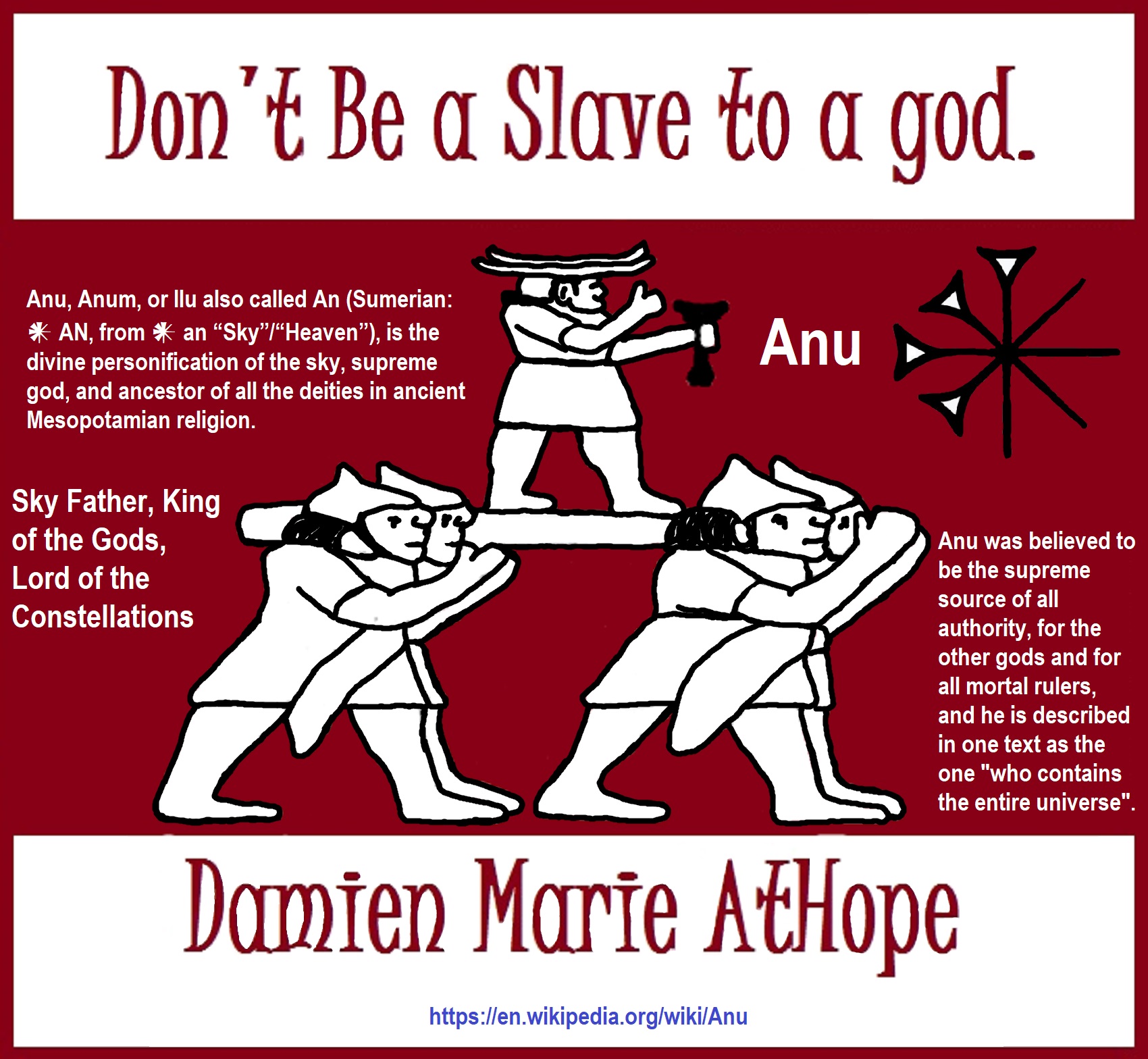
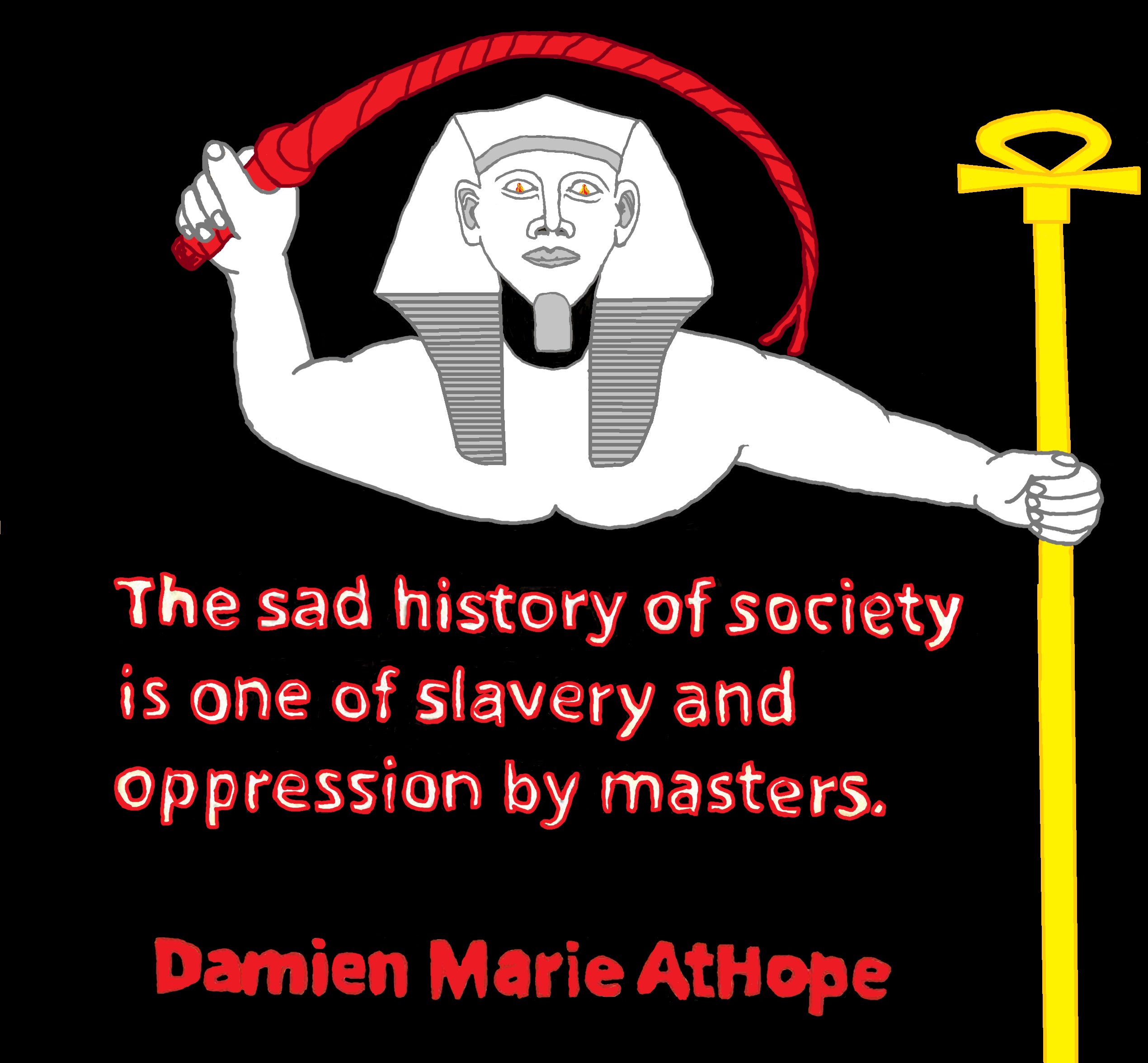
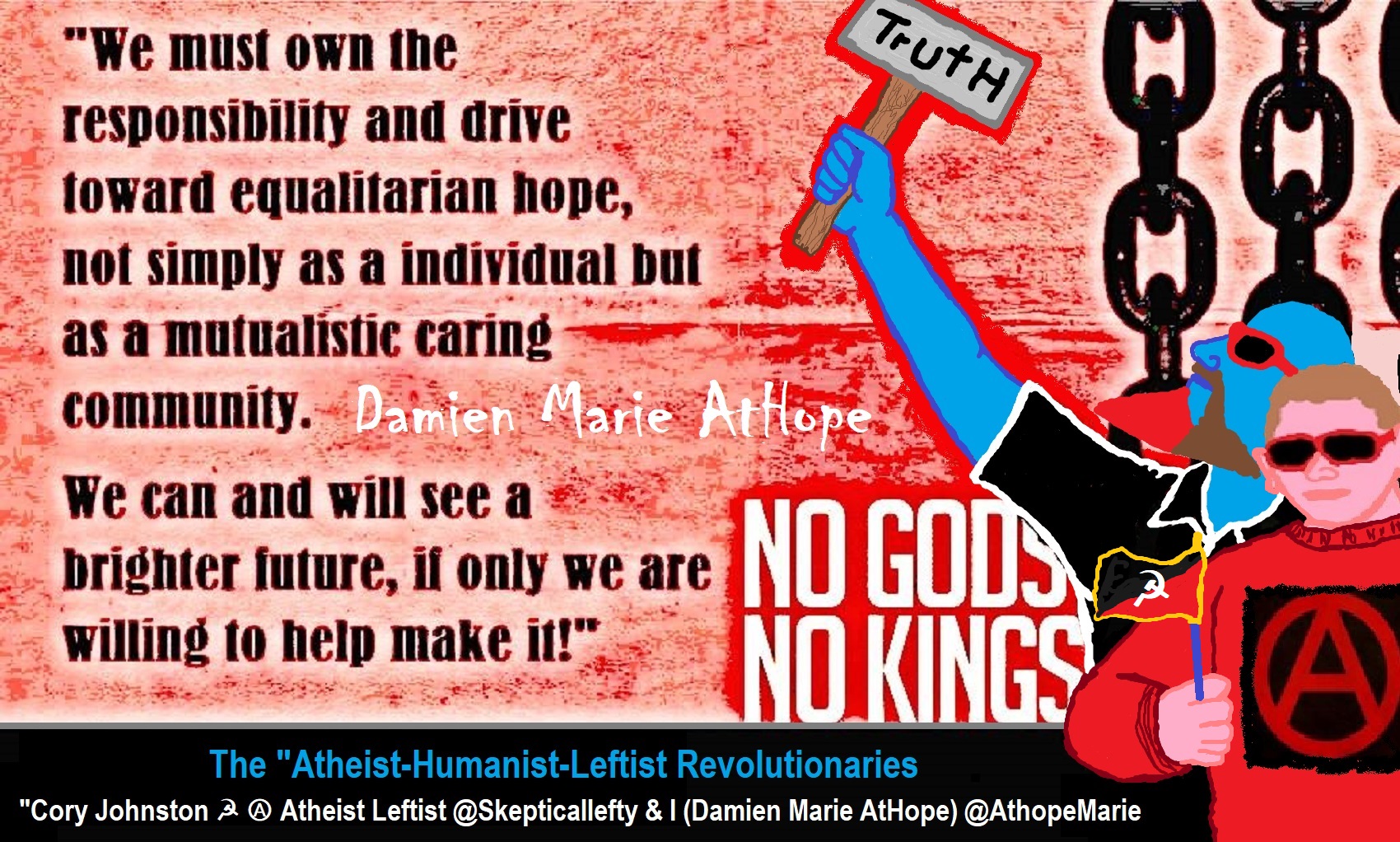
While hallucinogens are associated with shamanism, it is alcohol that is associated with paganism.
The Atheist-Humanist-Leftist Revolutionaries Shows in the prehistory series:
Show two: Pre-animism 300,000 years old and animism 100,000 years old: related to “Anarchism and Socialism”
Show tree: Totemism 50,000 years old: related to “Anarchism and Socialism”
Show four: Shamanism 30,000 years old: related to “Anarchism and Socialism”
Show five: Paganism 12,000 years old: related to “Anarchism and Socialism”
Show six: Emergence of hierarchy, sexism, slavery, and the new male god dominance: Paganism 7,000-5,000 years old: related to “Anarchism and Socialism” (Capitalism) (World War 0) Elite and their slaves!
Prehistory: related to “Anarchism and Socialism” the division of labor, power, rights, and recourses: VIDEO
Pre-animism 300,000 years old and animism 100,000 years old: related to “Anarchism and Socialism”: VIDEO
Totemism 50,000 years old: related to “Anarchism and Socialism”: VIDEO
Shamanism 30,000 years old: related to “Anarchism and Socialism”: VIDEO
Paganism 12,000 years old: related to “Anarchism and Socialism” (Pre-Capitalism): VIDEO
Paganism 7,000-5,000 years old: related to “Anarchism and Socialism” (Capitalism) (World War 0) Elite and their slaves: VIEDO
Paganism 5,000 years old: progressed organized religion and the state: related to “Anarchism and Socialism” (Kings and the Rise of the State): VIEDO
Paganism 4,000 years old: related to “Anarchism and Socialism” (First Moralistic gods, then the Origin time of Monotheism): VIEDO
I do not hate simply because I challenge and expose myths or lies any more than others being thought of as loving simply because of the protection and hiding from challenge their favored myths or lies.
The truth is best championed in the sunlight of challenge.
An archaeologist once said to me “Damien religion and culture are very different”
My response, So are you saying that was always that way, such as would you say Native Americans’ cultures are separate from their religions? And do you think it always was the way you believe?
I had said that religion was a cultural product. That is still how I see it and there are other archaeologists that think close to me as well. Gods too are the myths of cultures that did not understand science or the world around them, seeing magic/supernatural everywhere.
I personally think there is a goddess and not enough evidence to support a male god at Çatalhöyük but if there was both a male and female god and goddess then I know the kind of gods they were like Proto-Indo-European mythology.
This series idea was addressed in, Anarchist Teaching as Free Public Education or Free Education in the Public: VIDEO
Our 12 video series: Organized Oppression: Mesopotamian State Force and the Politics of power (9,000-4,000 years ago), is adapted from: The Complete and Concise History of the Sumerians and Early Bronze Age Mesopotamia (7000-2000 BC): https://www.youtube.com/watch?v=szFjxmY7jQA by “History with Cy“
Show #1: Mesopotamian State Force and the Politics of Power (Samarra, Halaf, Ubaid)
Show #2: Mesopotamian State Force and the Politics of Power (Eridu “Tell Abu Shahrain”)
Show #3: Mesopotamian State Force and the Politics of Power (Uruk and the First Cities)
Show #4: Mesopotamian State Force and the Politics of Power (First Kings)
Show #5: Mesopotamian State Force and the Politics of Power (Early Dynastic Period)
Show #6: Mesopotamian State Force and the Politics of Power (King/Ruler Lugalzagesi)
Show #7: Mesopotamian State Force and the Politics of Power (Sargon and Akkadian Rule)
Show #9: Mesopotamian State Force and the Politics of Power (Gudea of Lagash and Utu-hegal)
Show #12: Mesopotamian State Force and the Politics of Power (Aftermath and Legacy of Sumer)
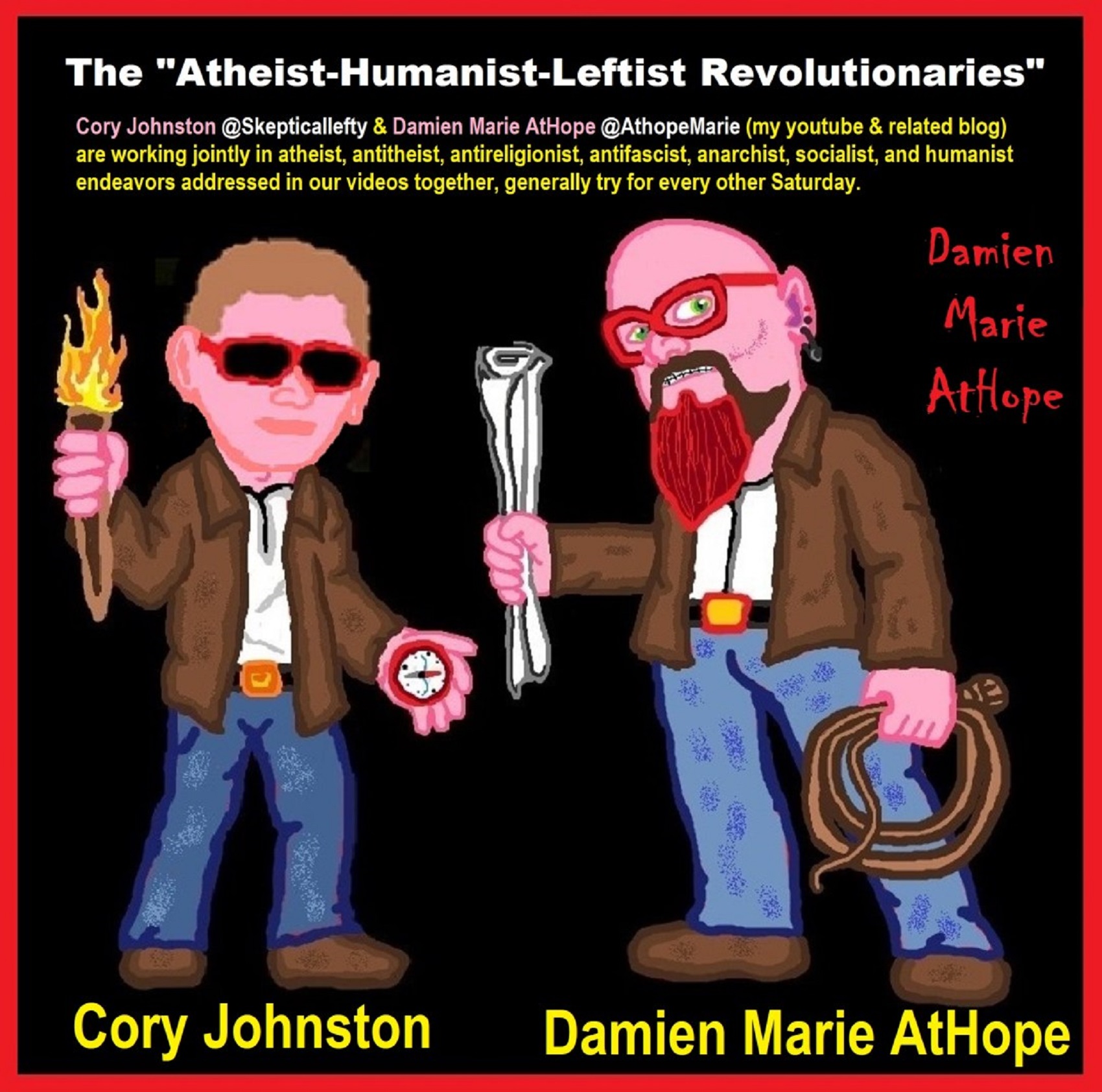
The “Atheist-Humanist-Leftist Revolutionaries”
Cory Johnston ☭ Ⓐ Atheist Leftist @Skepticallefty & I (Damien Marie AtHope) @AthopeMarie (my YouTube & related blog) are working jointly in atheist, antitheist, antireligionist, antifascist, anarchist, socialist, and humanist endeavors in our videos together, generally, every other Saturday.
Why Does Power Bring Responsibility?
Think, how often is it the powerless that start wars, oppress others, or commit genocide? So, I guess the question is to us all, to ask, how can power not carry responsibility in a humanity concept? I know I see the deep ethical responsibility that if there is power their must be a humanistic responsibility of ethical and empathic stewardship of that power. Will I be brave enough to be kind? Will I possess enough courage to be compassionate? Will my valor reach its height of empathy? I as everyone, earns our justified respect by our actions, that are good, ethical, just, protecting, and kind. Do I have enough self-respect to put my love for humanity’s flushing, over being brought down by some of its bad actors? May we all be the ones doing good actions in the world, to help human flourishing.
I create the world I want to live in, striving for flourishing. Which is not a place but a positive potential involvement and promotion; a life of humanist goal precision. To master oneself, also means mastering positive prosocial behaviors needed for human flourishing. I may have lost a god myth as an atheist, but I am happy to tell you, my friend, it is exactly because of that, leaving the mental terrorizer, god belief, that I truly regained my connected ethical as well as kind humanity.
Cory and I will talk about prehistory and theism, addressing the relevance to atheism, anarchism, and socialism.
At the same time as the rise of the male god, 7,000 years ago, there was also the very time there was the rise of violence, war, and clans to kingdoms, then empires, then states. It is all connected back to 7,000 years ago, and it moved across the world.
Cory Johnston: https://damienmarieathope.com/2021/04/cory-johnston-mind-of-a-skeptical-leftist/?v=32aec8db952d
The Mind of a Skeptical Leftist (YouTube)
Cory Johnston: Mind of a Skeptical Leftist @Skepticallefty
The Mind of a Skeptical Leftist By Cory Johnston: “Promoting critical thinking, social justice, and left-wing politics by covering current events and talking to a variety of people. Cory Johnston has been thoughtfully talking to people and attempting to promote critical thinking, social justice, and left-wing politics.” http://anchor.fm/skepticalleft
Cory needs our support. We rise by helping each other.
Cory Johnston ☭ Ⓐ @Skepticallefty Evidence-based atheist leftist (he/him) Producer, host, and co-host of 4 podcasts @skeptarchy @skpoliticspod and @AthopeMarie
Damien Marie AtHope (“At Hope”) Axiological Atheist, Anti-theist, Anti-religionist, Secular Humanist. Rationalist, Writer, Artist, Poet, Philosopher, Advocate, Activist, Psychology, and Armchair Archaeology/Anthropology/Historian.
Damien is interested in: Freedom, Liberty, Justice, Equality, Ethics, Humanism, Science, Atheism, Antiteism, Antireligionism, Ignosticism, Left-Libertarianism, Anarchism, Socialism, Mutualism, Axiology, Metaphysics, LGBTQI, Philosophy, Advocacy, Activism, Mental Health, Psychology, Archaeology, Social Work, Sexual Rights, Marriage Rights, Woman’s Rights, Gender Rights, Child Rights, Secular Rights, Race Equality, Ageism/Disability Equality, Etc. And a far-leftist, “Anarcho-Humanist.”
I am not a good fit in the atheist movement that is mostly pro-capitalist, I am anti-capitalist. Mostly pro-skeptic, I am a rationalist not valuing skepticism. Mostly pro-agnostic, I am anti-agnostic. Mostly limited to anti-Abrahamic religions, I am an anti-religionist.
To me, the “male god” seems to have either emerged or become prominent around 7,000 years ago, whereas the now favored monotheism “male god” is more like 4,000 years ago or so. To me, the “female goddess” seems to have either emerged or become prominent around 11,000-10,000 years ago or so, losing the majority of its once prominence around 2,000 years ago due largely to the now favored monotheism “male god” that grow in prominence after 4,000 years ago or so.
My Thought on the Evolution of Gods?
Animal protector deities from old totems/spirit animal beliefs come first to me, 13,000/12,000 years ago, then women as deities 11,000/10,000 years ago, then male gods around 7,000/8,000 years ago. Moralistic gods around 5,000/4,000 years ago, and monotheistic gods around 4,000/3,000 years ago.

Damien Marie AtHope (Said as “At” “Hope”)/(Autodidact Polymath but not good at math):
Axiological Atheist, Anti-theist, Anti-religionist, Secular Humanist, Rationalist, Writer, Artist, Jeweler, Poet, “autodidact” Philosopher, schooled in Psychology, and “autodidact” Armchair Archaeology/Anthropology/Pre-Historian (Knowledgeable in the range of: 1 million to 5,000/4,000 years ago). I am an anarchist socialist politically. Reasons for or Types of Atheism
My Website, My Blog, & Short-writing or Quotes, My YouTube, Twitter: @AthopeMarie, and My Email: damien.marie.athope@gmail.com



